- Open menu Close menu
- Animal Encounters
- Food/Drink Producer
- Indoor Sports & Leisure
- Outdoor Activities & Recreation
- Workshops & Rural Crafts
- Castles and Stately Homes
- Forests & Woods
- Historic Interest Sites
- Open Spaces
- Art galleries
- Music venues & Nightclubs
- Theatres & Cinemas
- Farm Shops & Local Produce
- Home & Garden Centres
- Outdoor Stores & Hire
- What's On
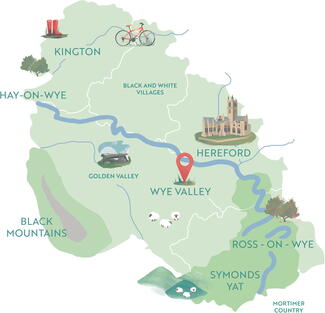

The Wye Valley
Walk, cycle & canoe the river wye.
- Gorgeous spot and National Landscape
- The birthplace of tourism
- Perfect for outdoor adventures
- Abundant wildlife
- Pretty market towns & villages
- Straddles England & Wales
The Wye Valley is a rural retreat with some of the most breathtaking landscapes in Britain. As well as the dramatic scenery and wonderful wildlife that come with being a protected National Landscape, you’ll find an abundance of family-friendly outdoor adventures including cycling, kayaking and walking. In fact, it was here, in the market town of Ross-on-Wye, that tourism as we know it was invented. Over 250 years later, the lure of the Wye Valley is just as strong.
Explore The River Wye
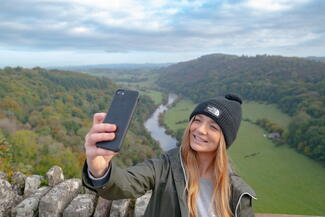
Breathtaking Views
Find your favourite look-out point! For the Wye Valley's most iconic view, head for Symonds Yat Rock to see the river meander in a huge loop, hundreds of feet below. The Prospect in Ross-on-Wye overlooks the river's horseshoe bend and out to the Welsh mountains - it was designed by the philanthropist John Kyrle who believed all residents should be able to enjoy the view. Over at Coppett Hill, near Goodrich, you can gaze across to six counties on a clear day.
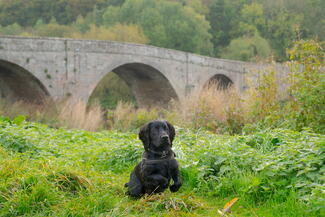
The Mighty Wye
The River Wye is best surveyed from a canoe or Stand Up Paddleboard. Grab the gang for a half-day paddle or a guided trip. Perhaps you would prefer a longer adventure, stopping at campsites and B&Bs as you make your way downstream. Take a refreshing dip at Kerne Bridge and book a guide if you are keen to uncover the Wye's top wild swimming spots. In the shallows, little ones can feel the surprise of cold water running over their toes.
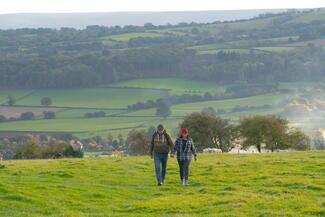
Walking for Miles
Criss-crossed with routes, the Wye Valley invites walkers on easy ambles as well as long-distance leg-stretchers. The linear trail from Ross-on-Wye to Kerne Bridge leads through woodland that was once a hive of industry. Timber would have been transported along these tracks and you'll spot many little cottages, originally the homes of blacksmiths, carpenters, coppice-workers and wheelwrights, as well as views of Chase Wood Hillfort and Goodrich Castle.
Explore Near The Wye Valley
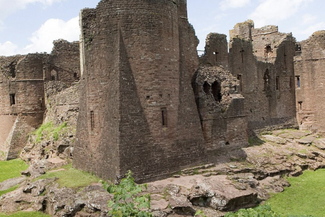
Goodrich Castle
Standing in open countryside above the River Wye, Goodrich Castle is one of the finest and best preserved of all English medieval castles. Boasting a fascinating history and amazing views from the battlements. Learn about the famous Civil War Siege; see the murder holes built into the castle walls and admire the stunning stained glass window in the 13th-Century chapel. Be sure to see 'Roaring Meg', the only surviving Civil War mortar, and the cache of cannonballs.

Lea and Paget's Wood
This ancient woodland in the lovely little village of Fownhope offers shady seclusion. Walk its dappled paths in spring when the bluebells, wood anemones, primroses and yellow archangels are in most spectacular bloom. Bring your binoculars and go bird-spotting - our winged friends love it here. You might even spy the three resident species of woodpecker!
Read More
Activities in The Wye Valley

Family frolics
Take the kids on a mini adventure in a Canadian canoe, gliding from Kerne Bridge to Symonds Yat with plenty of time for wildlife-spotting and picnicking.
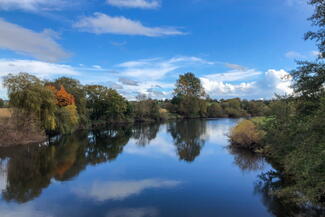
Walk The River Wye
Follow an idyllic three-mile loop exploring one of the River Wye's most beguiling stretches.
The Wye Valley Directory

- Wye Valley and Vale of Usk
- Countryside
- Amazing places
© Hawlfraint y Goron / Crown Copyright
Upper Wyndcliff, Wye Valley, Monmouthshire, South Wales
Exploring the Wye Valley AONB
William Wordsworth sighed over its 'steep woods, lofty cliffs and green pastoral landscape.' JMW Turner immortalised it in his paintings. Now, it's a superb choice for an active break - explore by kayak, on horseback or on foot.
The Lower Wye Valley has charmed artists, writers and poets for centuries and has been an Area of Outstanding Natural Beauty (AONB) for over 40 years. Lying on the border between Monmouthshire, Herefordshire and Gloucestershire, it’s a wonderful place to visit in any season but it’s particularly gorgeous in spring, when the first buds are bursting into life, and unforgettable in autumn, when the ash, beech and oak trees put on a spectacular show of colour.
But there’s more to this lovely lowland region than good looks. The Wye is the first river in Britain to be designated a Site of Special Scientific Interest (SSSI) along its entire length, from its source on the slopes of Pumlumon in the Cambrian Mountains, to its mouth at Chepstow. It’s also a European Special Area of Conservation (SAC). Its lush, leafy valley is heaven for walking, cycling, horse riding, rock climbing, caving, canoeing and kayaking.
A bridge over the River Wye, Monmouthshire, South Wales
Exploring the valley
Tracing the course of the River Wye from just south of Hereford to its mouth at Chepstow, the Wye Valley AONB protects an impressive limestone gorge, its steep-sided banks covered with native woodland. In the Welsh section, a beautiful valley road, the A466, winds along the gorge from Monmouth to Chepstow, making this an appealing region to explore by car. But horse riding or walking are even better.
Riders have plenty of stables and bridleways to choose from, and walkers can sample short, circular routes or the two signposted long-distance walking paths which pass through the region. The 17-mile southern section of the Wye Valley Walk leads from Chepstow Castle , whose Norman walls tower over the Wye, to the historic town of Monmouth, birthplace of Henry V. It takes you through picturesque woodland on the west side of the valley: on a spring morning, you’ll be enchanted by birdsong and bluebells. Walkable in a day, this is the start of a continuous, 136-mile route to the source of the Wye.
Offa’s Dyke Path , which also starts at Chepstow, follows the east side of the valley for 18 miles to Monmouth before continuing for another 169 miles to Prestatyn via another of the Welsh AONBs, the Clwydian Range and Dee Valley .
Chepstow Castle, which stretches out along a limestone cliff above the River Wye, Monmouthshire, South Wales
Romantic ruins
Tintern Abbey , founded by Cistercian monks in 1131, was a masterpiece of Gothic architecture. Like so many other British abbeys, its decay began shortly after the Dissolution of the Monasteries in the reign of Henry VIII. By the late 1700s, it was a favourite destination for tourists with a taste for the romantic and picturesque – among them, the poet William Wordsworth. When JMW Turner painted its graceful arches in 1794 they were furred with foliage, but these days they’re carefully preserved and blissfully atmospheric to explore.
The gothic masterpiece, Tintern Abbey, Monmouthshire, South Wales
Take to the water
The stretch of the River Wye between Monmouth and Tintern is glassy and gorgeous, with mist rising over the water on crisp autumn mornings. There are several safe launch points for canoes and kayaks, with specialist companies on hand to supply all the gear you may need or guide you along the river. Set off from Monmouth and you can paddle the 11.5 miles to Tintern in five or six hours. It’s a glorious journey with fabulous, leafy views.
Kayaking along the River Wye, Monmouthshire, South Wales
Related stories
Discover our areas of outstanding natural beauty.
From rugged ancient stone-strewn coasts to inspiring poetic landscapes - why our AONBs are so special.
A week from the mouth to the eye of the River Wye
Here are some of the many things to see, eat, drink and do along the shores of the River Wye.
Must do in and around Chepstow
Discover the highlights of Chepstow, a lively Welsh town combining the ancient and modern for visitors.
- Historic buildings
- City / Town
Discover the best stargazing experiences Wales has to offer
Explore the best dark sky discovery sites across Wales.
Before you start...
This site uses animations - they can be turned off.
Terms and Conditions
By using this site, you confirm you agree to our Terms and Conditions .
We'd Like to Hear From You
By answering a few questions , we'll give you the chance to win £500. By doing so you will also help us improve this website and help with your holiday planning and travel needs.
Good for you. Good for us. Teamwork!
National Geographic content straight to your inbox—sign up for our popular newsletters here

Discovering the simple pleasures of the Wye Valley's riverside routes and market towns
The Wye’s simple pleasures — chattering birdlife, slow-moving boats and walking trails weaving through steep, squirrelly beechwoods to views of the castle-studded Welsh borders — have long had the power to seduce, inspiring authors and artists.
It's 4.30am and the Herefordshire dawn has arrived. Far below me, the River Wye is a silver swathe through high-banked woods. The sky is soft and peach-coloured, the forest a dense, dark jade jungle. Through it all, filling the scene, is a crescendo of squawks, tweets and hoots. “Cup your ears,” says Ed Drewitt, as we face the natural amphitheatre in front of us. “What you’re hearing is the sound of hundreds of birds singing at the same time.”
I’ve met birdwatching guide and local resident Ed on Symonds Yat Rock, a 400ft-high outcrop of cliff-flanked limestone looming over the Wye Valley. On my last visit here, the viewing platform had been packed, but at this hour it’s empty — of humans, at least — and under Ed’s commentary, the wash of birdsong becomes an orchestra of identifiable parts: chiffchaff, firecrest, coal tit, nuthatch. And then something different. “Hear that?” he says, his eyes lighting up with excitement. “Peregrine.”
Within minutes his telescope is trained on the bird, resting on a rockface. I see a flecked breast, a black hood, pointed wingtips. The peregrine falcon is the world’s fastest bird, able to spot prey from a mile away — pity any wood pigeon in the wrong place at the wrong time. I watch the raptor while it scans the view as a citrus sun swells over the hills. On a morning like this it’s hard not to wish for wings of your own to unfurl.
Visitors have been wowed by the panorama here for hundreds of years. The Wye Valley bills itself as the birthplace of British tourism, or the original staycation spot (as they definitely wouldn’t have said in the Georgian era). From 1770 until at least 1830, the so-called Wye Tour attracted poets, artists and regular carriage-loads of other sightseeing ladies and gents. Turner came. Lady Hamilton and Lord Nelson, too. Wordsworth visited twice. For the leisured classes, a trip here was the must-do travel experience of its day, a domestic alternative to the European Grand Tour at a time when the Napoleonic Wars had made continental journeys all but impossible. I can’t help but feel a little pandemic-era symmetry.

The Wye Tour centred not just on a river, but on a book. Reverend William Gilpin’s Observations on the River Wye, which gave a first-person account of the author’s two-day boat trip between Ross-on-Wye and Chepstow in 1770, is considered the first tour guide to be published in Britain. It’s fair to say it caused a splash. Gilpin, who lived in South London, was an artist, cleric and schoolmaster, and his guidebook championed the then-radical idea of finding artistic beauty in the outdoors. Initially only circulated among his London acquaintances (this being an era when sharing your travel journals with friends was the done thing: a kind of old-time blogging), the book was eventually published widely. Stride forward a few decades and an entire industry had sprung up around replicating Gilpin’s trip, with some 20 rival guidebooks now in print.
So, why the Wye? The simple reason is that the winding stretch of river between Ross-on-Wye and Chepstow — a distance of 38 miles by water, though only 19 miles as the peregrine flies — is shudderingly handsome, and not just at sunrise. The Wye rises in the Cambrian Mountains in Wales and flows down to Chepstow and the Severn Estuary, twisting, turning and crisscrossing the England-Wales border at will. By the time it reaches Ross-on-Wye, the waterway is a wide, chuckling thing, passing crumbling castles, wild green escarpments and the kind of pastoral, sheep-chewed scenery that belongs to a slower time. Symonds Yat is today the route’s most celebrated viewpoint, but it’s one of many that conform to the notion of nature as something to marvel at.
“Gilpin promoted the idea of the picturesque. It was a new way of looking at the landscape,” says Anne Rainsbury, the curator at Chepstow Museum , based in a grand, 18th-century townhouse befitting the grandeur of this historic port town. Anne is showing me round a permanent display room dedicated to the Wye Tour. “It wasn’t long before this that people on the European Grand Tour would pull the blinds down in their carriage as they were crossing the Alps. Mountains were seen as unnatural.”
The display room is dominated by a replica of one of the smart canopied boats that carried tourists down the Wye, stopping off at key points of interest, historical and scenic. “Three guineas, which was a lot of money at the time, would get you hire of a boat, two oarsmen and a steersman, who doubled as a guide,” explains Anne. “Gilpin’s book became a kind of bible. People wanted to experience it themselves.”
Some 250 years after Gilpin’s landmark trip, what joys does the region hold for today’s visitors? This portion of the Wye Valley doesn’t draw the kind of attention that falls onto other UK destinations — and sadly you’ll find no more oarsmen or steersmen — but there’s plenty here to make a noise about. And not just the dawn chorus.

Dyke to Devil's Pulpit
‘If you’ve never navigated the Wye,’ wrote Gilpin, ‘you’ve seen nothing.’ It’s a dazzlingly warm midweek afternoon and I’m travelling along the river in a more modest form of watercraft than the early tourists used: a lightweight canoe. The scene in front of me is ageless. Oaks, beeches and alders throng the banks in a chaos of different greens; a salmon leaps, a heron stands in the dappled shallows. Looking up and down the river, nothing else is astir. When I trail my hand in the water, it’s icy cold to the touch.
I’m making the eight-mile journey downstream from Kerne Bridge to Symonds Yat with Stuart Wyley, owner of Wye Adventures . The stretch we’re paddling is very much the go-to spot for self-guided canoe hire — busy at weekends, deliciously quiet on this spring day — and the wide, woody-hilled surroundings make it simple to see why. It’s also an activity conducive to easy conversation. Stuart talks about otters (present, if rarely spotted), and anglers (parts of the Wye are prime fishing territory), and the benefits of homemade nettle soup. “I moved here to escape the corporate world,” he smiles at one point, as we follow the looping meanders of the river. “Working here in the valley is a way of not having a real job.”
It takes four unhurried, smartphone-free hours for us to paddle the route, in which time we pass a few swans, a herd of butterscotch-coloured cows and a group of day-tripping canoeists who have decided to stop paddling and are simply allowing the current to carry them south. To be fair to them, if there’s anywhere that promotes the idea that life is best unrushed, it’s the Wye Valley on a hot day. By the time we haul the canoe from the river, it’s early evening and Stuart’s words are like gospel: the nine-to-five feels like another world altogether.
I’m staying a short distance north of Kerne Bridge in Ross-on-Wye, one of the three historical towns that served as overnight calls on the old Wye Tour route. The tourists of yesteryear traditionally began their trips with a stay here before sailing south past Symonds Yat to spend the night in Monmouth — then and now, a fine little Welsh county town — and finishing their travels the next evening in Chepstow, where Britain’s oldest stone castle still hogs the skyline. And the sections in between? Save for the occasional hamlet, stately home and age-old ruin, today you’ll find just rambling countryside and a river that shimmers in the sun like cut crystal.
The towns themselves retain plenty of period charm. Ross-on-Wye still has a 370-year-old market arcade, a clifftop public garden and at least two hotels that hosted Wye Tour visitors: The Royal once welcomed Charles Dickens and gives a deep view out across the borderlands, while The King’s Head, where I’m staying, is all twisty staircases and oak-beamed dining rooms. The lady in a high-necked blouse who reputedly haunts the inn doesn’t cross my path — not visibly, at any rate — although if she has any sense, she’ll be enjoying the outdoors.
If you’re not in a canoe or kayak, or taking one of the 40-minute pleasure cruises that depart from below Symonds Yat several times a day, the best way to explore the valley is on foot. Short walks can be found almost wherever you go, but there are also two key long-distance paths that snake alongside the river. One is the Wye Valley Walk, which begins right back at the source. The other, and the one I’m sampling, is the Offa’s Dyke Path National Trail , a long-distance hiking route that traces the valley for its southernmost 17 miles.
“There’s a lot of speculation around King Offa, since we have no written information from the time,” says trail officer Rob Dingle as we climb through the squirrelly beechwoods above the river. With the canopy closing in overhead, we hike past ancient yews, beds of wild garlic and centuries-old badger setts. Then Rob stops. “This is part of the dyke right here,” he says, pointing in front of us to an innocuous bank of earth around 18ft high, overgrown with trunks and holly.
Constructed some 1,200 years ago on the orders of the enigmatic Offa of Mercia, the dyke loosely follows the England-Wales border, making it Northern Europe’s longest ancient monument. The theory is that the earthwork was designed to protect Offa’s kingdom from attacks from the west. The National Trail, which clings where it can to the dyke’s course, border-hopping numerous times, celebrates its 50th anniversary this year with a campaign to begin much-needed safeguarding and repair. Running for 177 miles from the Irish Sea to the Severn Estuary, it aims to give people a taste of local landscape, culture and history — as evidenced here in the Wye Valley.
The trail route cuts right through the heart of Monmouth, for example, crossing its medieval gated bridge and passing the now-ramshackle castle where King Henry V was born, although up here in the woods the path is all about being somewhere that’s pleasing on the eye. In the days of the Wye Tour, dedicated panoramic viewpoints were set up along the length of the valley — some of them requiring a serious slog to reach, presumably doubly so in tight Georgian breeches. Rob leads me to one of the choicest spots. “This,” he says, as the tree cover clears to reveal the yawning green of the valley spread before us, “is the Devil’s Pulpit.”
I clamber onto a large rock wedged into the hillside. The sight it reveals is special. More than 800ft below, on a sweeping bend in the river, stands what was the Wye Tour’s most popular set-piece attraction: the roofless relic of Tintern Abbey . Legend has it that from where I’m standing, Satan used to holler down and try to tempt the monks from their holy ways. I don’t know whether he succeeded, but you can’t fault his choice of location. I suspect it was just an excuse for him to take in the view.

Sacred seclusion
Up close, the abbey is a sandstone colossus. For visitors on the Wye Tour, the sight of the abandoned gothic church, with its soaring arches and traceried windows, was a celebrated one. The building dates from the second half of the 13th century and has now spent longer as a ruin (blame the Tudors) than as a place of prayer. In its pomp, around 60 monks and some 150 lay brothers made it a busy place, and the remains of their cloisters, kitchens and infirmary can still be explored.
The site was chosen for its seclusion. Gilpin himself described it as ‘occupying a great eminence in the middle of a circular valley, beautifully screened on all sides by woody hills, through which the river winds its course. A more pleasing retreat could not be found.’ Well, quite. The years have taken their toll on the church, however, and incidents of falling masonry mean it’s now undergoing serious conservation work. On my visit, the resulting lack of footfall along the nave has left the grass inside overrun by a riotous confetti of daisies. Here, the message seems to be, that nature can’t be bossed around.
It’s very easy to romanticise what Gilpin-era tourists would have made of their trips to the Wye Valley, but of course it wasn’t always a pleasant experience. “In those days, travel really wasn’t something you’d undertake lightly,” Anne Rainsbury at Chepstow Museum had told me. “Journals from the time moaned about surly landlords, boulders on the road and poor food.”
The last point is a pertinent one (I’m shown an old hotel tariff offering the less than appetising ‘Chop, potatoes and cheese’), so I’m making the most of being here in 2021 by wrapping up my trip with lunch at The Whitebrook. Hidden away down a narrow single-track lane near Tintern Abbey, and half-hidden by vegetation, this Michelin-starred restaurant isn’t so much based in the region as forming a living, breathing part of it. The produce is organic, often foraged and, where possible, sourced from within three miles of the kitchen.
It’s one of those meals where you find yourself savouring each forkful. The menu uses unusual local ingredients like maritime pine, butter made with jack-by-the-hedge (wild garlic mustard) and Tintern mead sauce — mysterious on the menu, delicious on the plate. They elevate the more familiar likes of asparagus and plaice into dishes that feel gloriously simple and wildly complex at the same time. There’s even a Monmouthshire Chardonnay, which turns out to be just the thing to cue up a three-part dessert featuring the likes of dandelion honey, Wye Valley rhubarb and oak-and-juniper fudge. The Georgians can keep their mutton and spuds.
On his second visit to the valley, in July 1798, the Wye’s biggest Georgian fan, William Wordsworth headed into the hills and penned his famous poem ‘Lines Written A Few Miles Above Tintern Abbey’. In it, he revels in returning to the region (‘Once again do I behold these steep and lofty cliffs … O sylvan Wye! thou wanderer thro’ the woods, How often has my spirit turned to thee!’), and ponders the power that the scenery has held over him even in his absence.
I make my own way to the spot where he’s believed to have written the poem, the Whitestone Woods high on the west escarpment of the valley. A bench has been set up beneath some sycamores, looking out over the countryside. The river furls out in the distance, lazy in the heat, flowing down to Chepstow. I’m alone up here — but not for long. While I’m sitting, a hefty buzzard materialises from the void below and comes to rest on a branch no more than 50ft away. It stares out at the land for a few seconds, shifts its weight, then disappears back into the valley. For the second time in as many days, I find myself wishing I had wings.
Getting there & around
Chepstow railway station has direct services from South Wales and the Midlands, connecting to London, the West Country and onwards. Ross-on-Wye and Monmouth are both close to the A40.
In the valley itself, bus 34 runs between Ross-on-Wye and Monmouth (also stopping near Symonds Yat), while bus 69 runs between Monmouth, Tintern and Chepstow.
With warmer temperatures, spring through to early autumn is the best time to enjoy the area’s natural attractions.
Where to stay
The King’s Head , Ross-on-Wye. Doubles from £85, B & B.
Tintern Abbey Cottage , Tintern. Three-night stays from £440.
Where to eat
The Whitebrook , near Tintern.
The Saracens Head Inn , Symonds Yat.
Visit the Forest of Dean & Wye Valley.
Observations on the River Wye, by William Gilpin (Pallas Athene, £14.99)
How to do it
Wye Adventures offers two-person canoes, to paddle from Kerne Bridge to Symonds Yat, from £55. The Whitebrook has set lunch menus from £47.
Subscribe to National Geographic Traveller (UK)
Follow us on social media
Twitter | Facebook | Instagram
Related Topics
- GEOGRAPHERS
- PHYSICAL GEOGRAPHY
- ENVIRONMENT AND CONSERVATION
You May Also Like

Swastika Mountain needed a new name. Here’s how it got one.

The travel kit list: the best gear for rainforest hiking
For hungry minds.

Six of the best new books celebrating rivers, seas and lakes

How to plan an autumn road trip through France’s Dordogne Valley

Five best secret beaches in Mykonos

This small strait is essential to global shipping. Now it's the center of headlines.

Where to travel in Malaysia: three trips to suit your travel style
- Environment
History & Culture
- History & Culture
- History Magazine
- Gory Details
- Mind, Body, Wonder
- Paid Content
- Terms of Use
- Privacy Policy
- Your US State Privacy Rights
- Children's Online Privacy Policy
- Interest-Based Ads
- About Nielsen Measurement
- Do Not Sell or Share My Personal Information
- Nat Geo Home
- Attend a Live Event
- Book a Trip
- Inspire Your Kids
- Shop Nat Geo
- Visit the D.C. Museum
- Learn About Our Impact
- Support Our Mission
- Advertise With Us
- Customer Service
- Renew Subscription
- Manage Your Subscription
- Work at Nat Geo
- Sign Up for Our Newsletters
- Contribute to Protect the Planet
Copyright © 1996-2015 National Geographic Society Copyright © 2015-2024 National Geographic Partners, LLC. All rights reserved

The Wye Valley – what to see, where to eat and stay on your picturesque Wye Tour
The River Wye seems to epitomise our idea of the picturesque. It meanders past castles set high on the clifftop and loops around lush meadows bounded by steep wooded slopes.
Indeed the Wye river valley was heralded as the perfect landscape back in the 18th century. The idea of Picturesque , literally making a beautiful picture or painting, was popularised by William Gilpin. Gilpin wrote a best selling guidebook about his Wye Valley Tour.
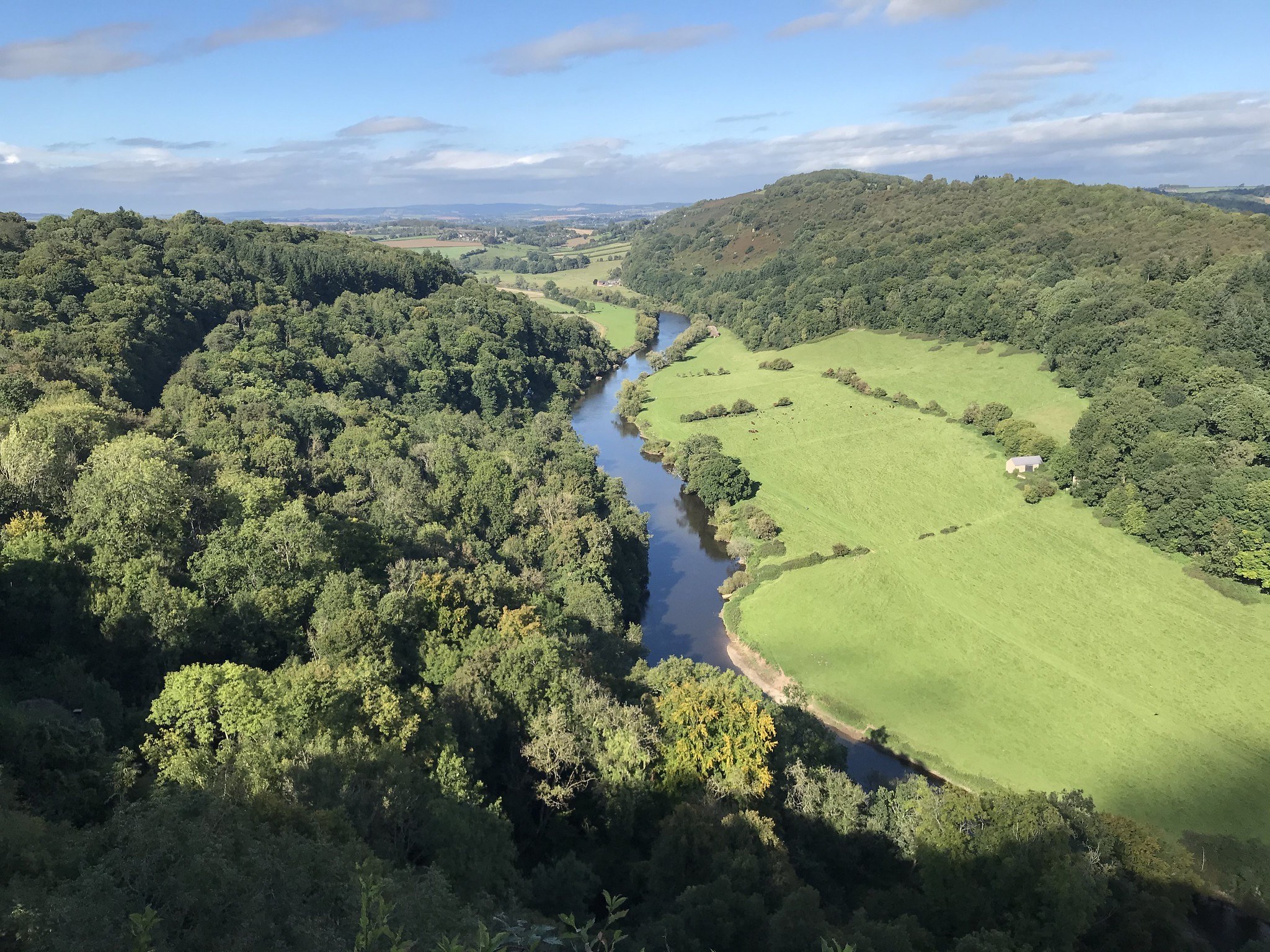
In the 18th century travellers found that unforeseen circumstances abroad (the war with France) forced them to take holidays at home (sounds familiar?) The Wye Tour became increasingly popular and a package tourism of sorts was born.
These early travellers progressed by boat and their packing list included sketchbooks and telescopes. They wore stout shoes to climb up from the river and paint the landscape from key viewpoints.
As it’s 250 years since William Gilpin’s book popularised the Wye Valley. I decided to make my own 2 day Wye Tour by car from Ross on Wye to Chepstow, heading Over the bridge to Wales . We aimed to discover all the things to do in the Wye Valley as it meanders towards the Severn Estuary and then onward to the sea.
This article may contain affiliate links that provide commission on purchases you make at no extra cost to you. As an Amazon Associate I earn from qualifying purchases.
Table of Contents
Ross on Wye
My trip down the Wye Valley started at the pretty town of Ross on Wye, known as the Gateway to the Wye. Here 18th century travellers on the Wye Tour would have boarded their boats in front of the Hope and Anchor inn.
Many of the buildings in this Herefordshire market town date back to the 17th and 18th century. You could easily while away an hour or two here before following the River Wye southwards.
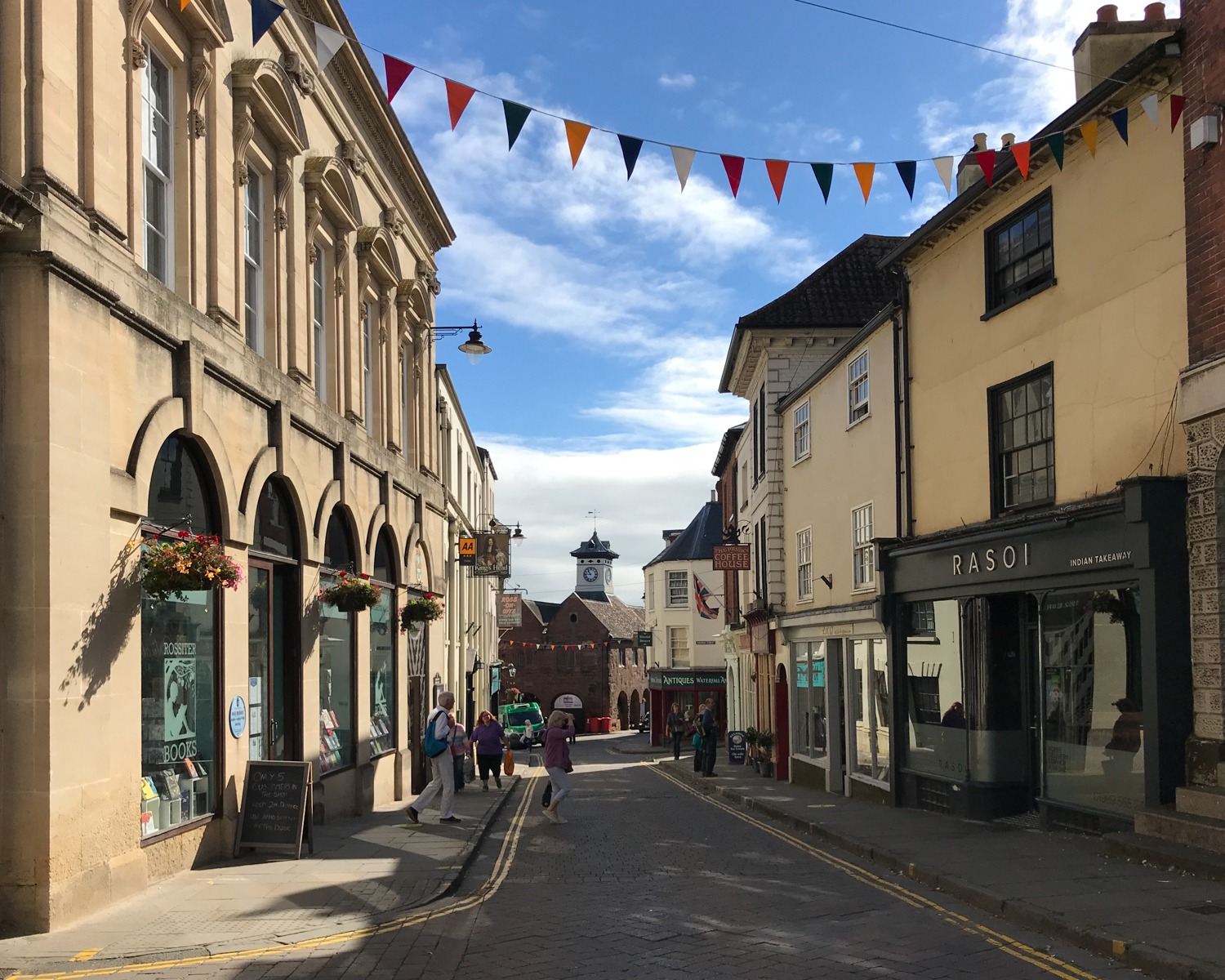
Things to do in Ross on Wye
At the heart of the town is the Market House. It was built in the mid 17th century as the focus for markets that by then had been held in the town for many years. A visit to the Market House is one of the first things to do in Ross on Wye.
Markets are still held twice a week under the stone pillars and around the building. On the 2nd floor is Made in Ross , a shop selling locally produced arts and crafts. It’s the ideal place to pick up an authentic souvenir. The Market House is open daily currently from 11am.
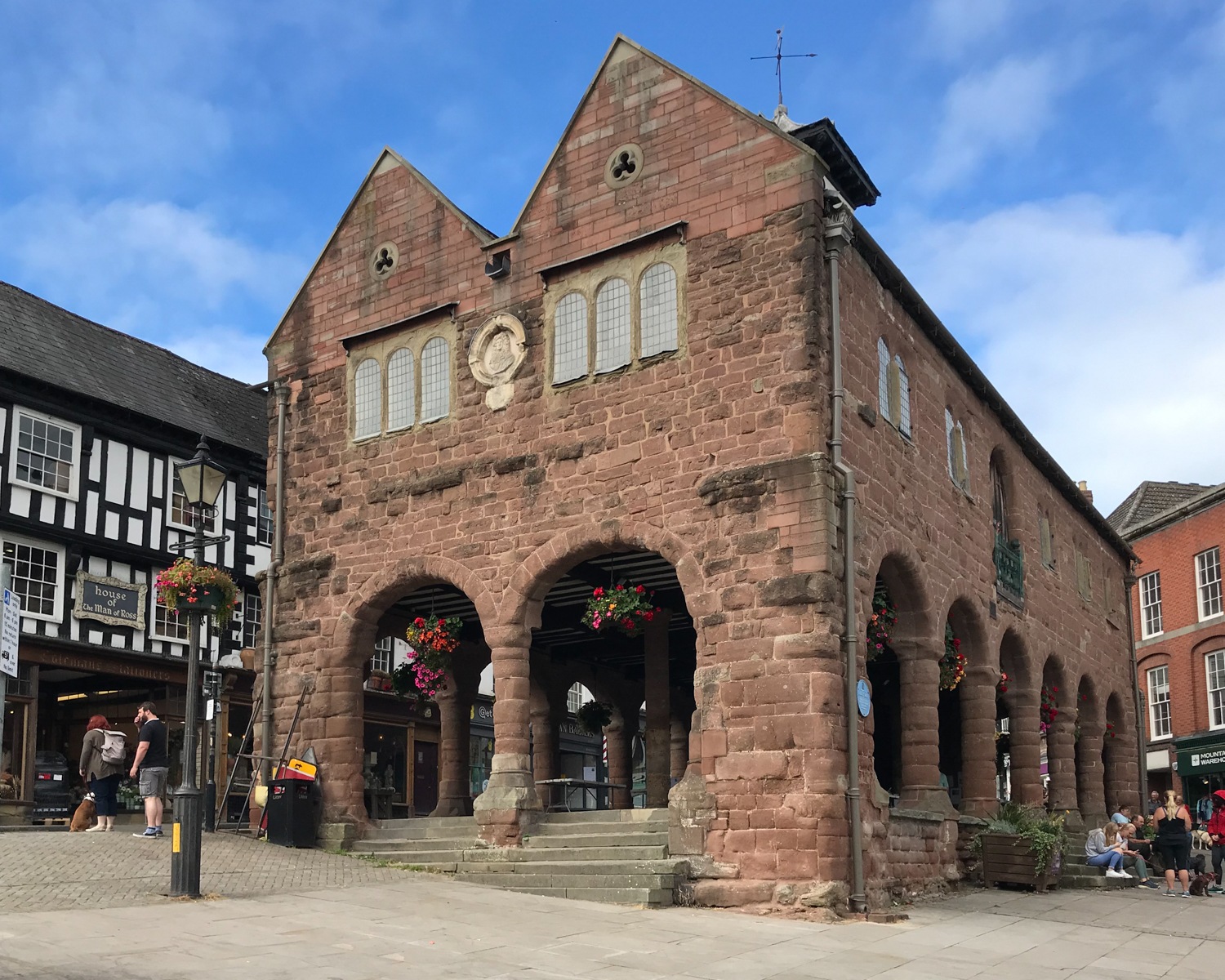
I wandered around the streets that lead off from the Market Hall. It was easy to see that Ross on Wye is a haven for lovers of antiques and vintage. If this is your passion, check out the bottom of Broad Street.
Broad Street shopping
Here there are a number of shops selling everything from bric a brac to fine furniture. There’s a Ross Vintage shopping trail , with a leaflet that you can download. It lists 18 different shops that lovers of retro and vintage can find around town.
This part of the Wye Valley also seems to have an affinity for book lovers, with the Hay festival being held just upriver at Hay on Wye. There’s some nice bookshops, although sadly the atmospheric Ross Old Book Shop seemed to have closed.
I was also extremely tempted by the Tudor Sweets shop with its nostalgic range of cherry drops and licorice sherbet dips. There are lots of other independent shops stocking everything the country lady, salmon fisherman or walker in the Wye Valley might need.
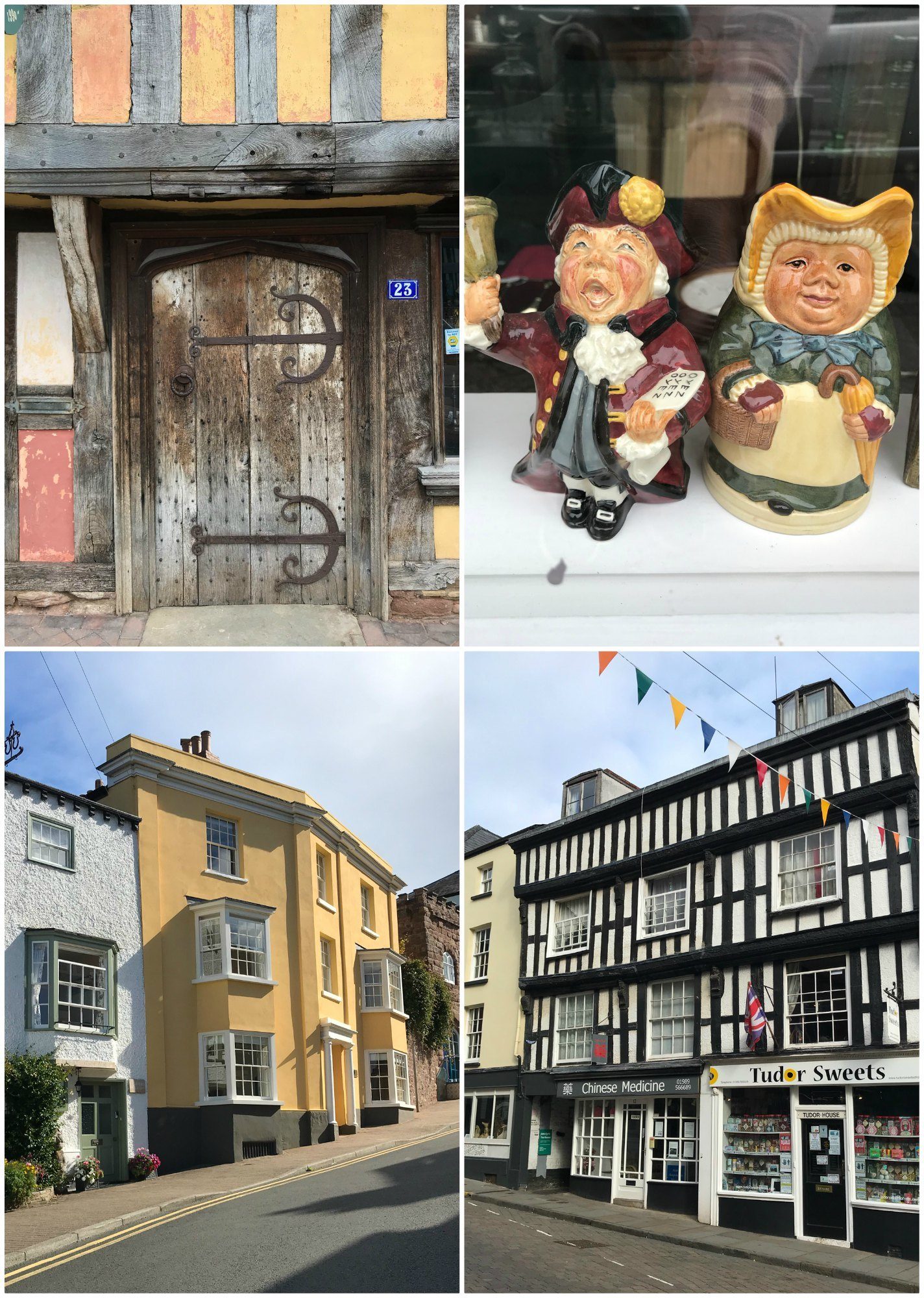
Be sure to read about the foodie town of Abergavenny, Wales – things to do, where to eat and stay
The Prospect in Ross on Wye
After exploring the streets around the Market House, I wandered up the hill to St Mary’s Church. This landmark spire can be seen from all around the town.
It’s a pretty looking church, but mainly worth a visit for the small park beside it known as The Prospect. Here you can get an excellent view over the River Wye. You’ll also see the next hamlet of Wilton where the bridge crosses the river.
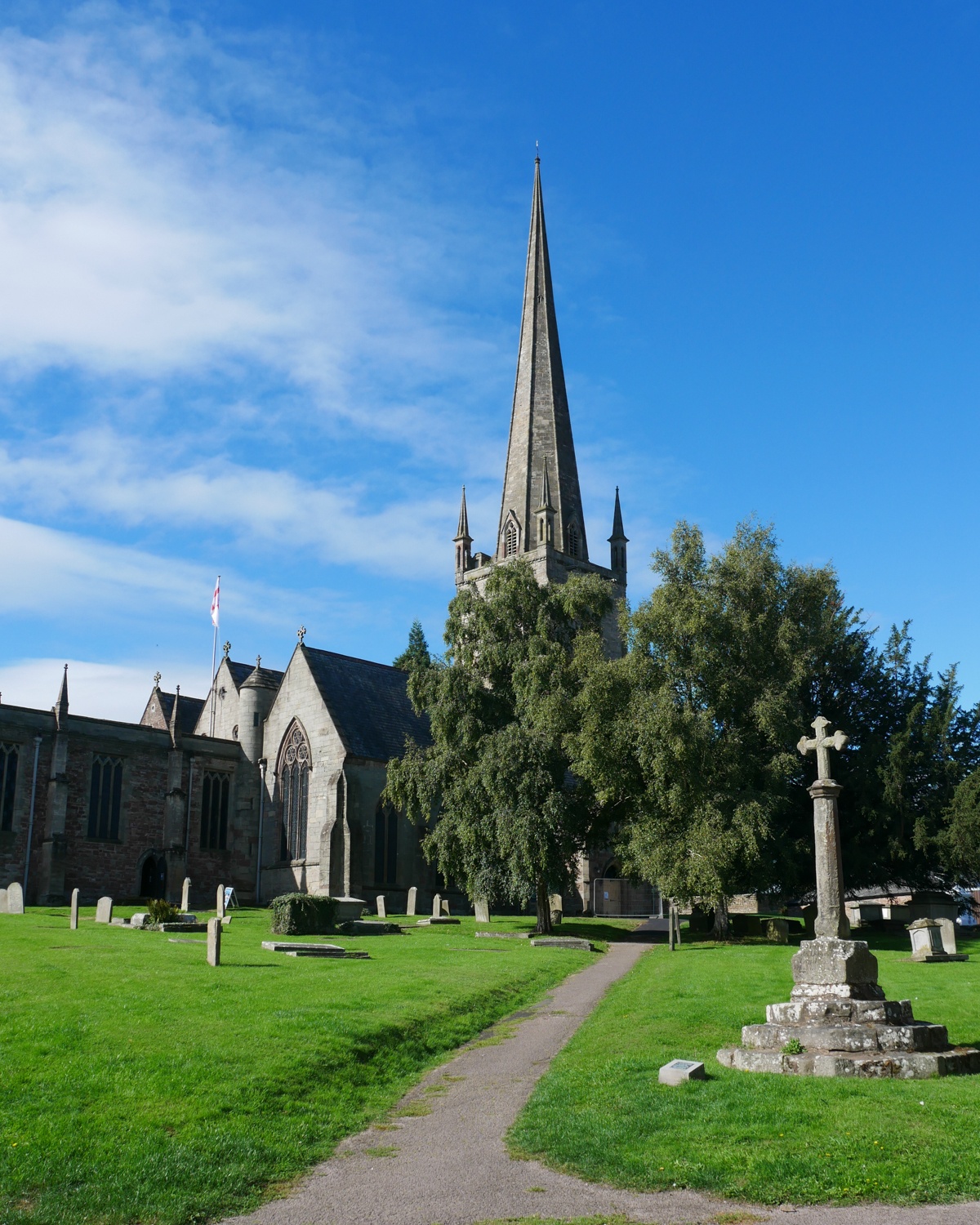
The Prospect was laid out in 1700 by John Kyrle, known as “The Man of Ross”. Originally this public pleasure garden covered a larger area, with stone gates and a sundial. A fountain provided clean water for the town.
You can see the black and white timbered house behind the Market House where John Kyrle lived. The pub that’s named after him is at the top of Wye street that leads down to the river. There’s more information about The Prospect on the Museumwithoutwalls.uk website.
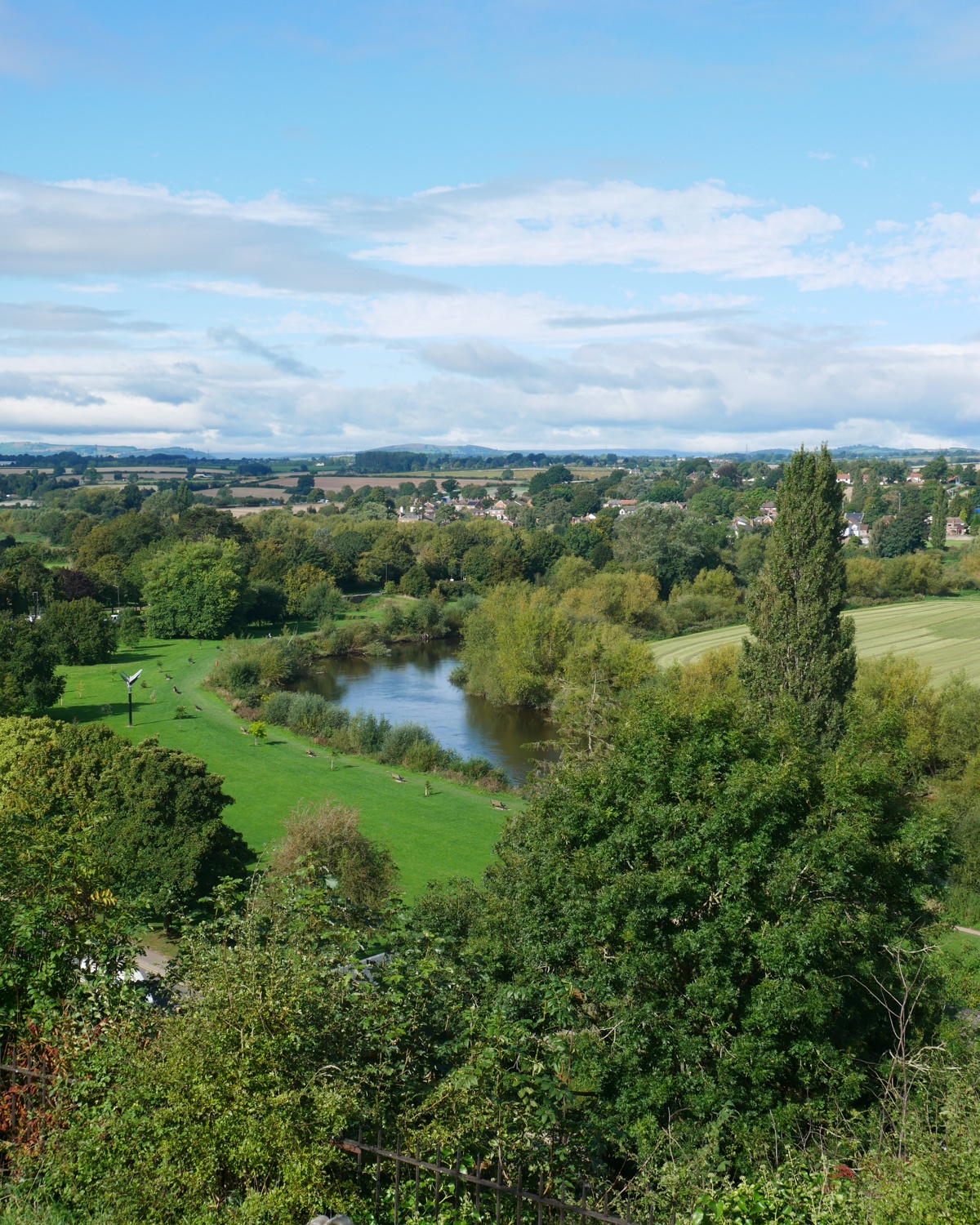
Ross on Wye river walk
My walk took me down Wye street, with its pretty, pastel painted cottages to the Hope and Anchor Inn. Travellers on the Wye Tour would board the boats here to take them down river.
Although I didn’t see any pleasure boats, this is still one of the places that you can get dropped off by the many companies offering canoe hire and tours on the River Wye. Check out the River Wye canoe hire based nearby.
If you have time, take a 15 minute walk along the river until Wilton Bridge comes into sight. Here 18th century tourists on the River Wye tour might view the romantic ruin of Wilton Castle.
Originally a 12th century Norman castle, it was burned down in the English Civil war. It’s now privately owned and only occasionally open for guided tours but still makes a pretty sight.
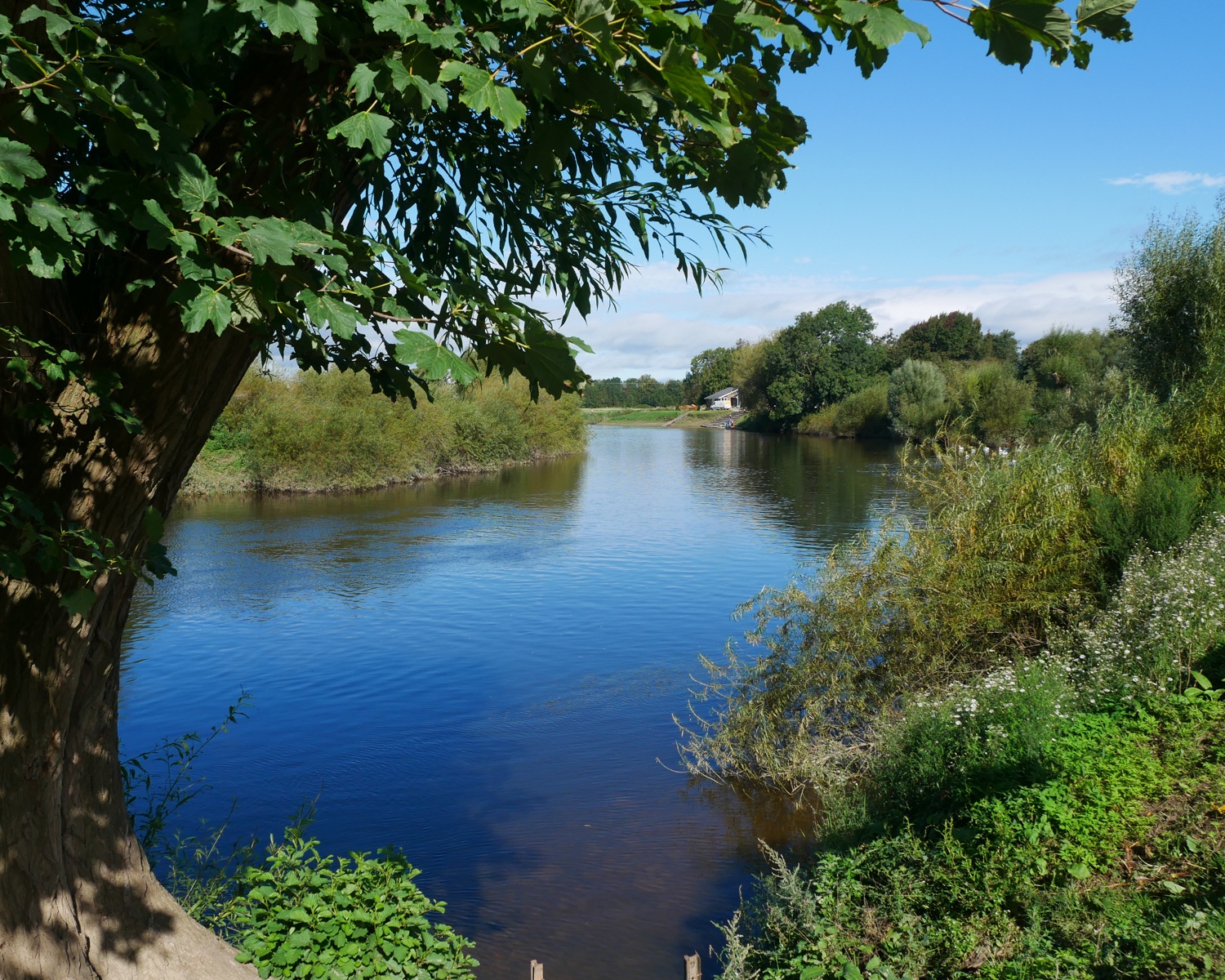
Check out this guide to Big Pit and the Blaenavon Industrial Landscape in South Wales
Restaurants in Ross on Wye
Although I didn’t have time to stop in Ross on Wye, there are a few places I passed that looked worth a stop.
No 3 Ross on Wye (2 Gloucester Rd) – for lunch (check out the well priced lunch menu) or dinner with modern European style.
Leonards at No 39 (39 High Street) – more of an evening place for cocktails and dinner.
Truffles Delicatessen (46 High Street) – a good place to buy your picnic with deli sandwiches, cakes and local produce. Buy your lunch here and walk down to the riverside or up to The Prospect to find a picnic spot.
Hotels in Ross on Wye
If you’re looking for a hotel with location and heritage, you can’t beat The Royal Hotel in Ross on Wye. It is set on the hill below St Mary’s church, with views over the Wye.
This historic inn was the main place to stay for 19th century travellers starting their Wye Tour. Now it’s part of the Greene King group, with pub style food and rooms decorated in classic style.
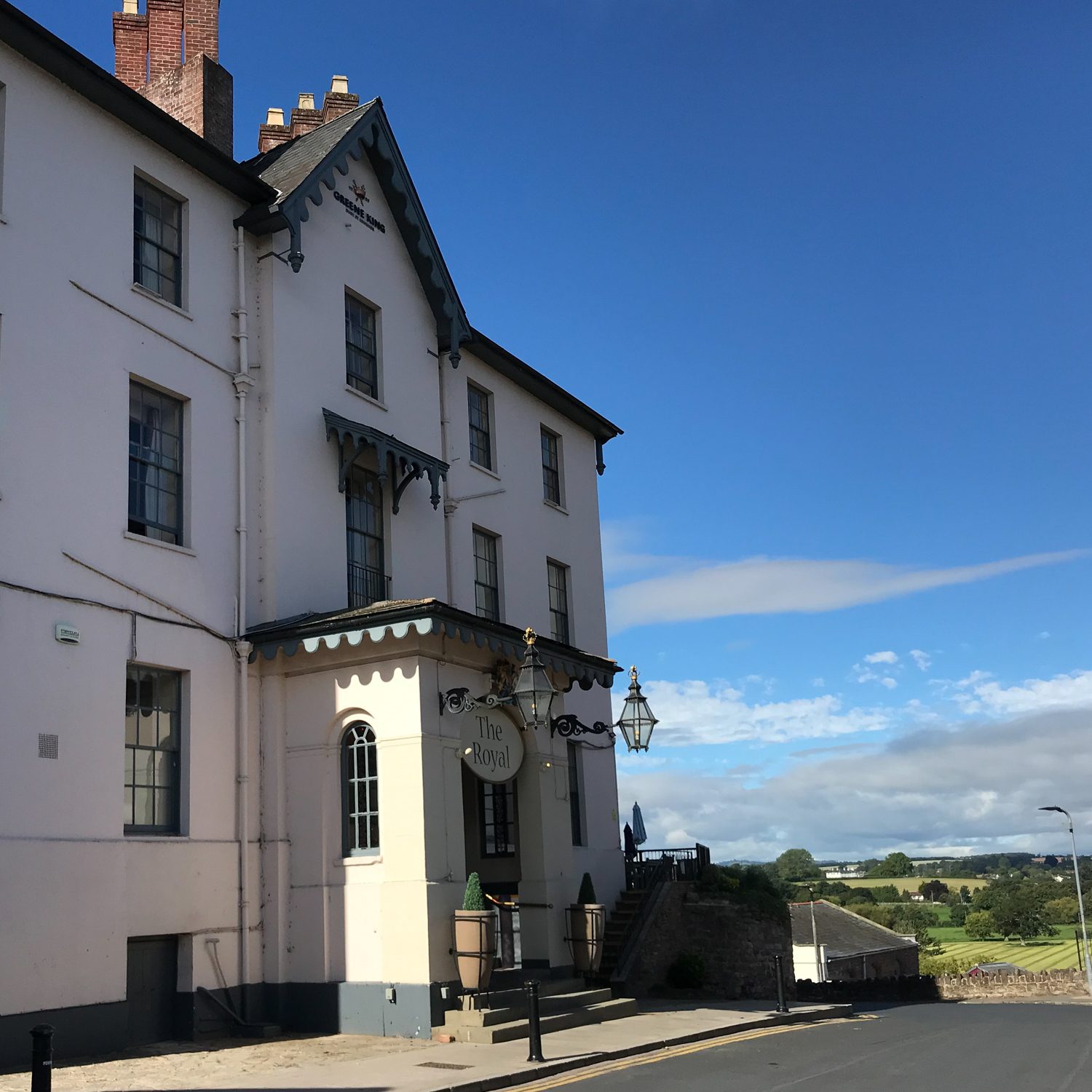
A good alternative is one of the numerous bed and breakfasts in Ross on Wye like the Radcliffe Guest House on Wye Street close to the river. If you are travelling by car, check what parking is available before you book guest houses. They may be in historic properties that don’t have much parking space.
There are also some nice places to stay in nearby Wilton, just a short walk or drive from Ross on Wye, including Orles Barn Hotel . Set in a 17th century barn, this hotel is close to the A40 in Wilton, with a well regarded restaurant serving local and seasonal produce.
More information to plan your visit is available from the Visit Ross in Wye Tourism website | Parking available in several pay and display public car parks | Public toilets in Swimming Pool car park (charges) and Croft Court shopping centre
Explore Tredegar Wales – in the footsteps of Aneurin Bevan, father of the NHS
Goodrich Castle in the Wye Valley
A 15 minute drive from Ross on Wye through Wilton and along the A40 brought me to Goodrich Castle. This was the first stop for travellers on the Wye Tour, making a picturesque ruin set high above the river.
The red sandstone walls that remain today were built in the 13th century by French nobleman William de Valence, the uncle of the English King Edward I. Although William de Valence was viewed by the other English nobles as a foreigner, the castle at Goodrich was designed to be a powerful symbol of his power and royal connections.
Read about 15 fun things to do in Carmarthenshire, Wales
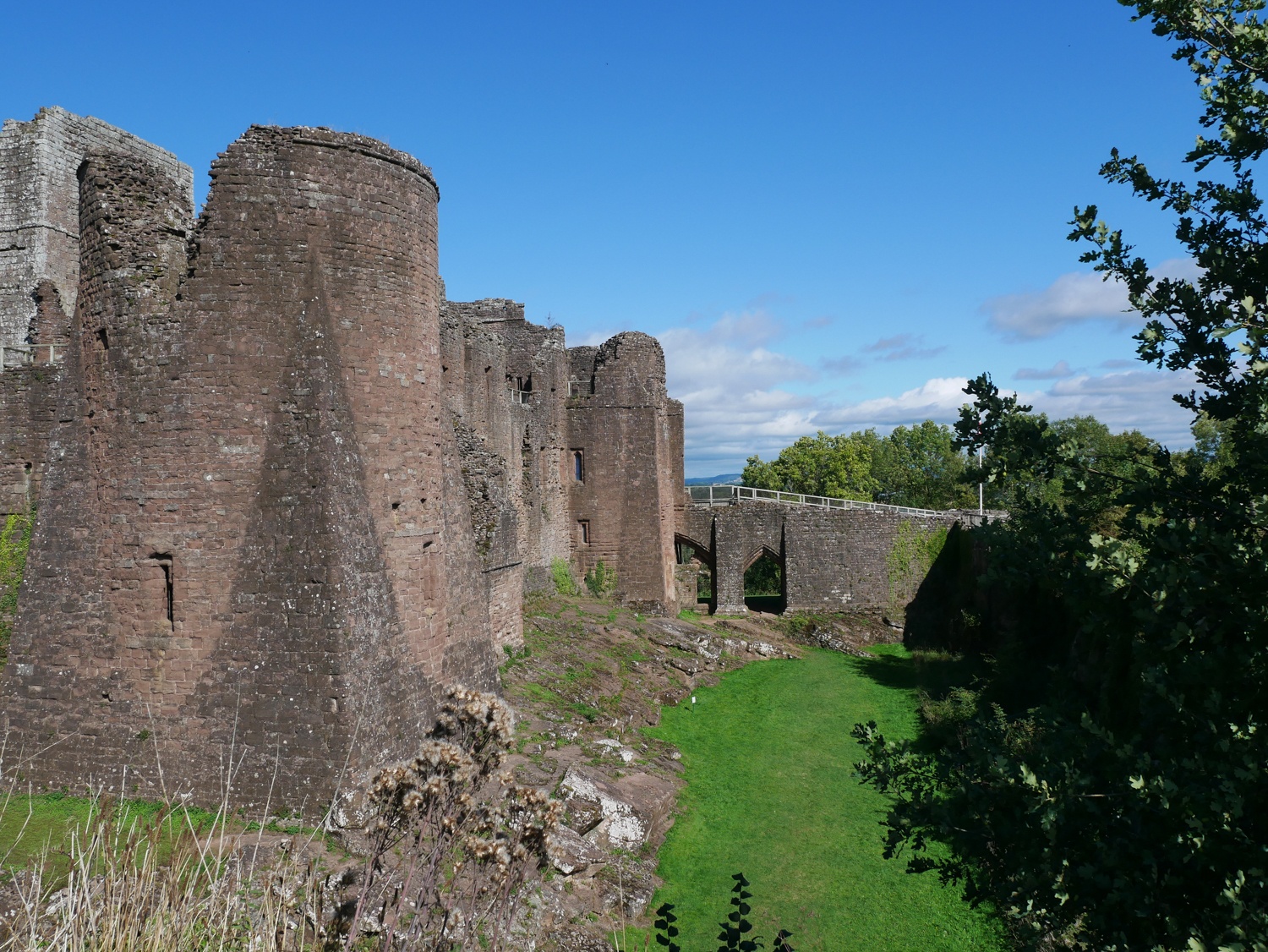
Visitors entered over a drawbridge through a narrow gatehouse to enter the central courtyard. Entrances lead off it to the Great Hall, chapel, kitchens and private apartments of the Lords of Goodrich.
The information panels show the castle at the time of William de Valence and his wife Joan de Valence, who retained Goodrich castle after his death. During their tenure the castle was both a military fortress and a comfortable home that displayed the wealth and prestige of its noble owners.
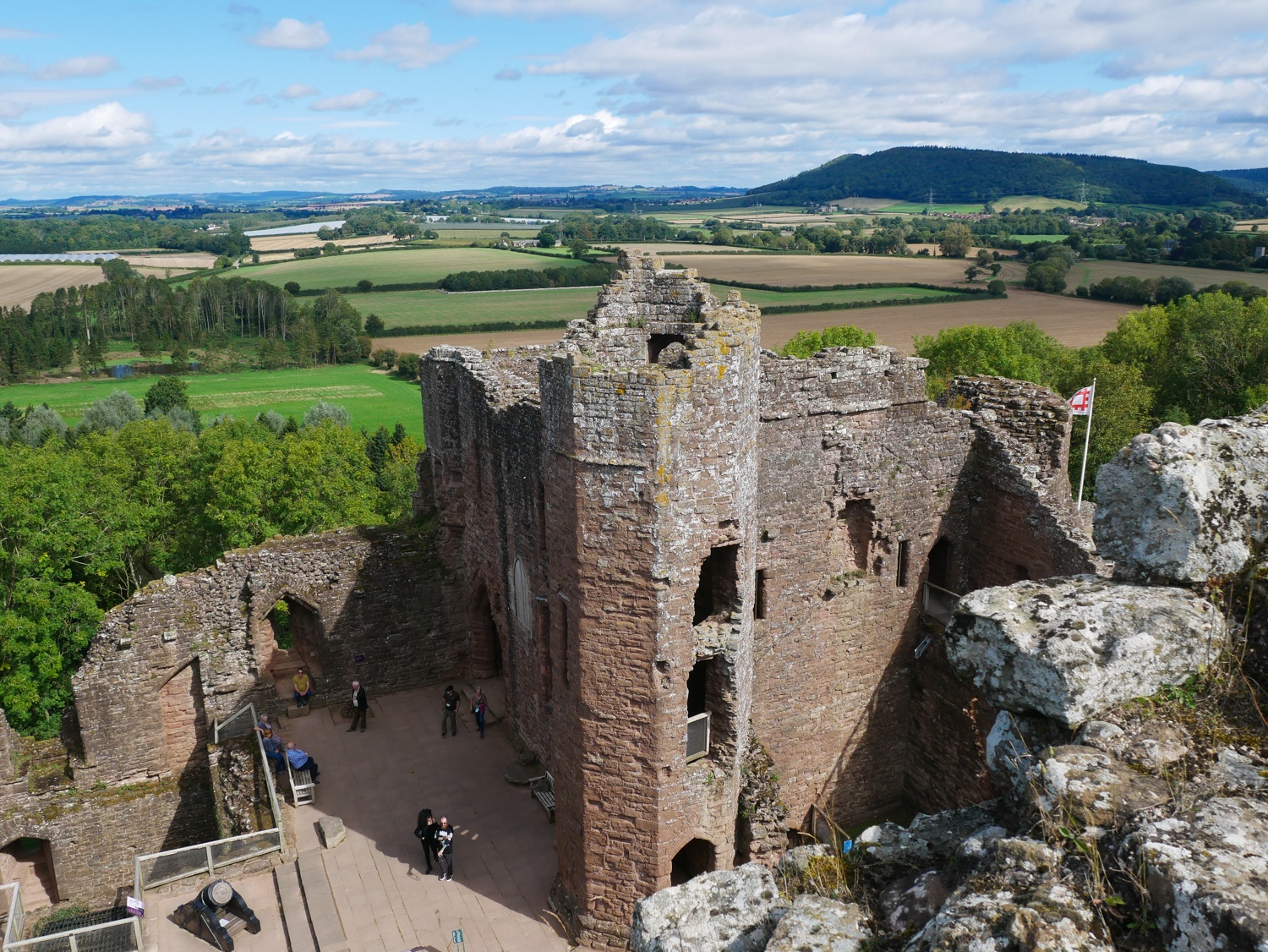
In the castle courtyard, look out for the canon Roaring Meg and the pile of cannonballs. These were used when Goodrich castle was besieged by parliamentary forces in 1645.
Extensive Wye Valley views
If you get a chance, it’s worth climbing to the top of the keep. Be warned the stairs are very narrow and dark, but be rewarded with some extensive views over the Wye Valley.
Another scenic area that you can visit close to the Wye Valley is the Forest of Dean – read about all the things to do in the Forest of Dean
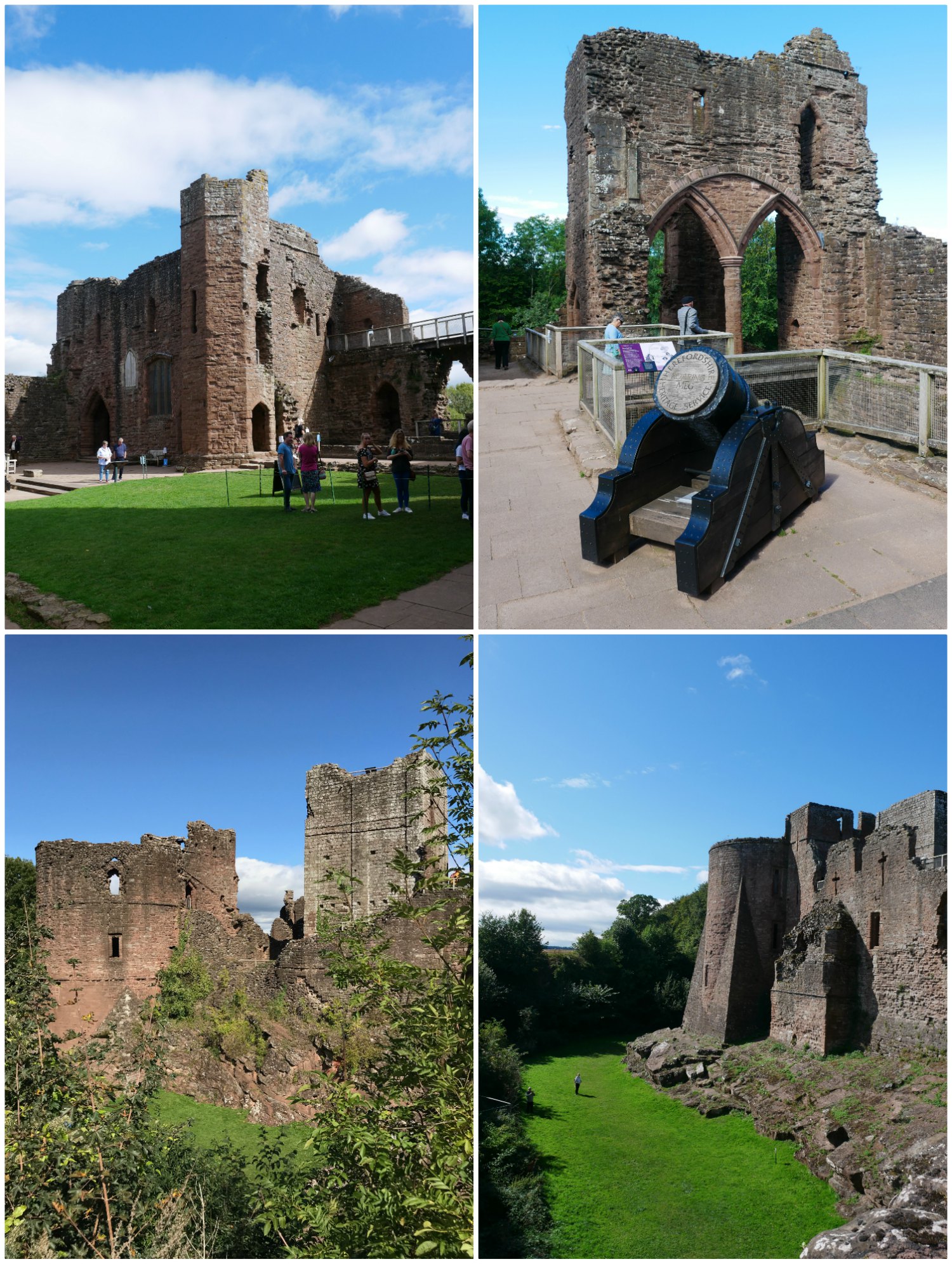
Goodrich Castle is managed by English Heritage and there’s a useful audio guide that you can download before you go. Find the Guide ID Podcatcher App then search for Goodrich Castle. Download the audio guide using the password EHGoodrichCastle.
More info: Goodrich Castle website | Open daily 10-5 and 10-6 on weekends Tickets from £9, free for English Heritage members + Parking charge | Toilets at the visitor centre by car park
Where to eat and stay near Goodrich Castle
There’s a pleasant cafe serving sandwiches and other refreshments at Goodrich Castle just outside the ticket office. You can use it even if you are not visiting the castle (parking charges apply). All the seating here is outside so this is one for good weather. There are also tables where you can eat your picnic.
For something more substantial, the best place is the Hostelrie at Goodrich . This gothic looking pub is located just by the turning from Goodrich village up to the castle, so you can’t miss it (closed Monday and Tuesday). They also have a few rooms if you are walking the Wye Valley Walk or touring the area and want a place to stay in this area.
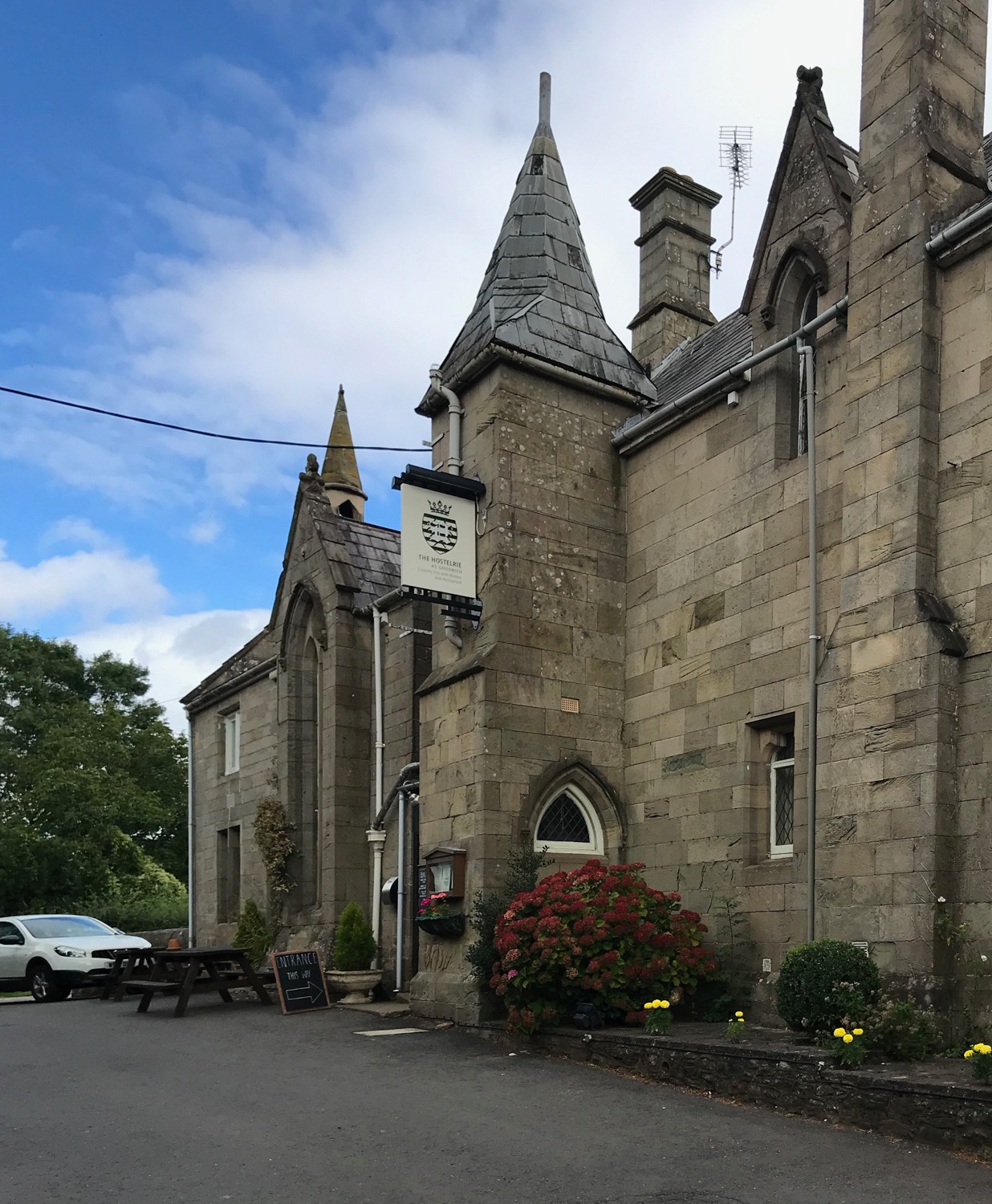
Symonds Yat in the Wye Valley
The Wye River continues to loop around as it flows southwards, although the A40 brings you in only 15 minutes to Symonds Yat. This is one of the famous locations in the Wye Valley and is at the heart of the Wye Valley Area of Outstanding Natural Beauty . The designation was awarded in 1971 to allow the special landscape of dramatic limestone gorges, broadleaf woodland and lush meadows that border the River Wye to be protected.
Things to do at Symonds Yat
I headed first to one of the most famous viewpoints of the Wye Valley at Symonds Yat Rock. Set on a rocky outcrop high above the village of Symonds Yat, it’s the site of an iron age hill fort.
If the weather is good, this is a great place to start as there’s a large car park (charges apply) managed by Forestry England . There’s also toilets and the Symonds Yat Rock log cafe with outdoor seating close to the viewpoint.
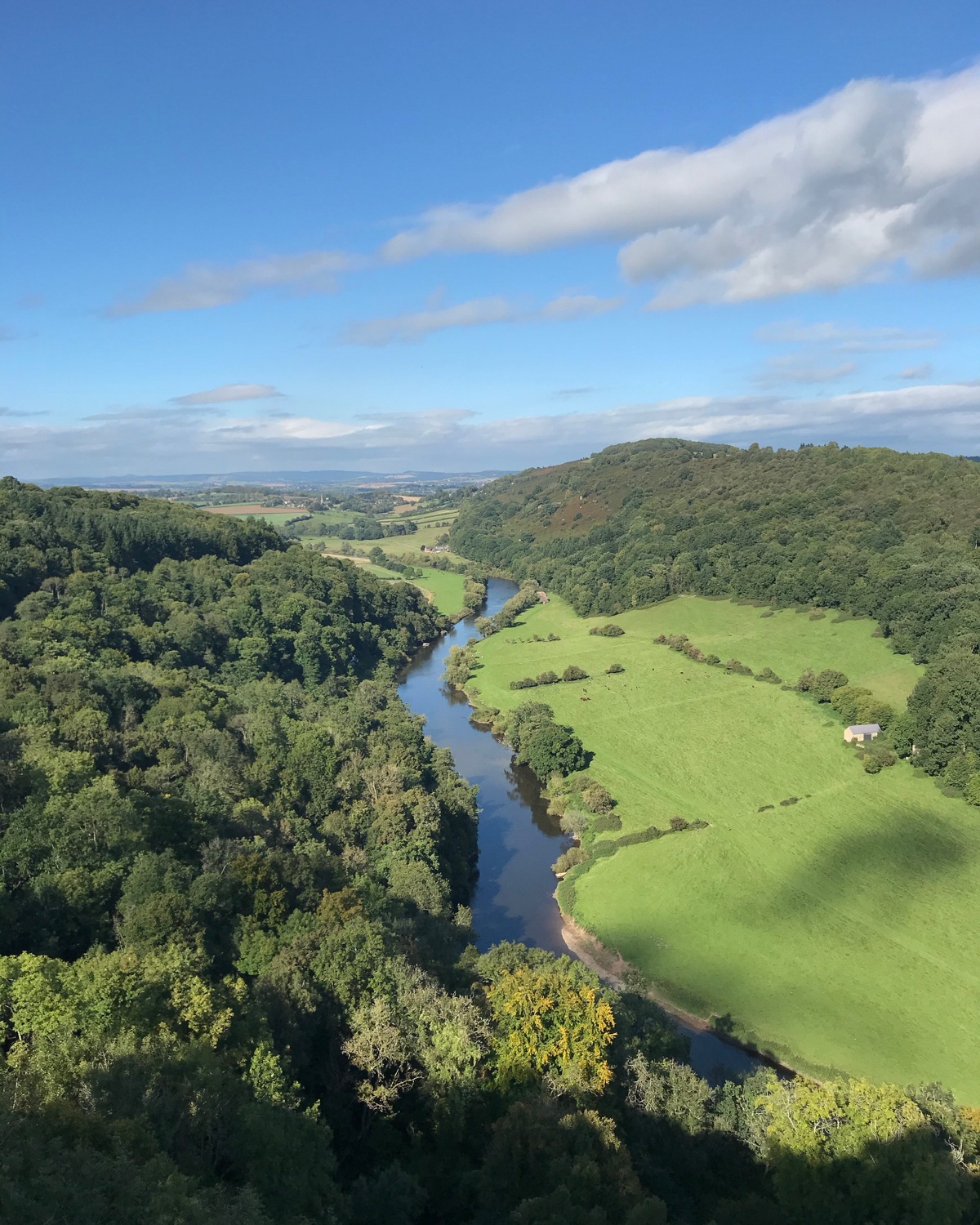
The rock is also a lookout point for the Peregrine falcons that nest in the cliffs high above the river. Watch for other birds such as hawks, buzzards and owls. You’ll probably find a birdwatcher stationed there with a big pair of binoculars.
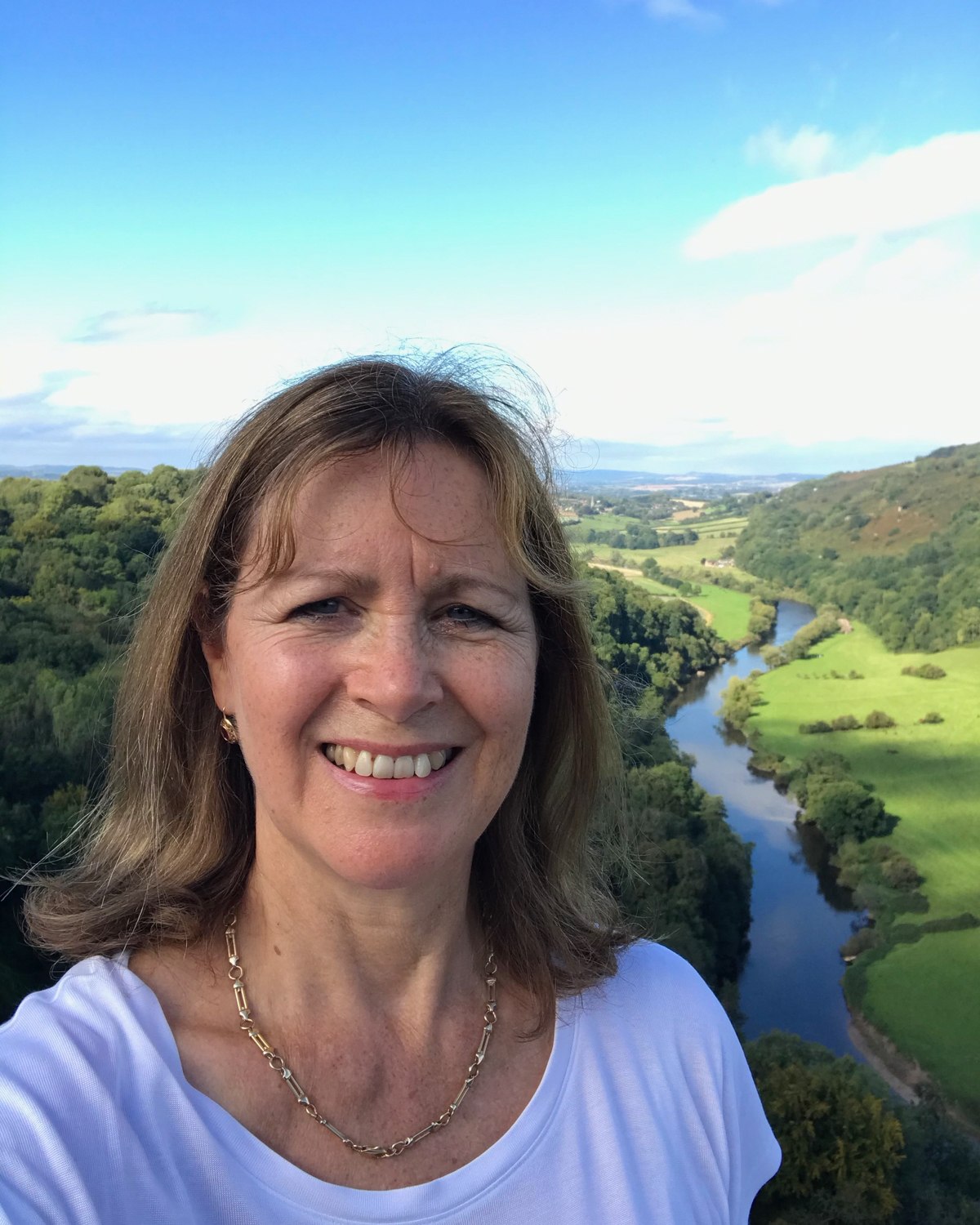
From the car park there are several marked walking trails and a cycling trail you can take. These are well signposted and range in length and difficulty – more information here . If you’ve brought a picnic, set it out at one of the wooden tables near the log cafe or around the woodland car park.
Walkers will want to explore some of the scenic trails in South Wales. Read about walking in the South Wales Valleys
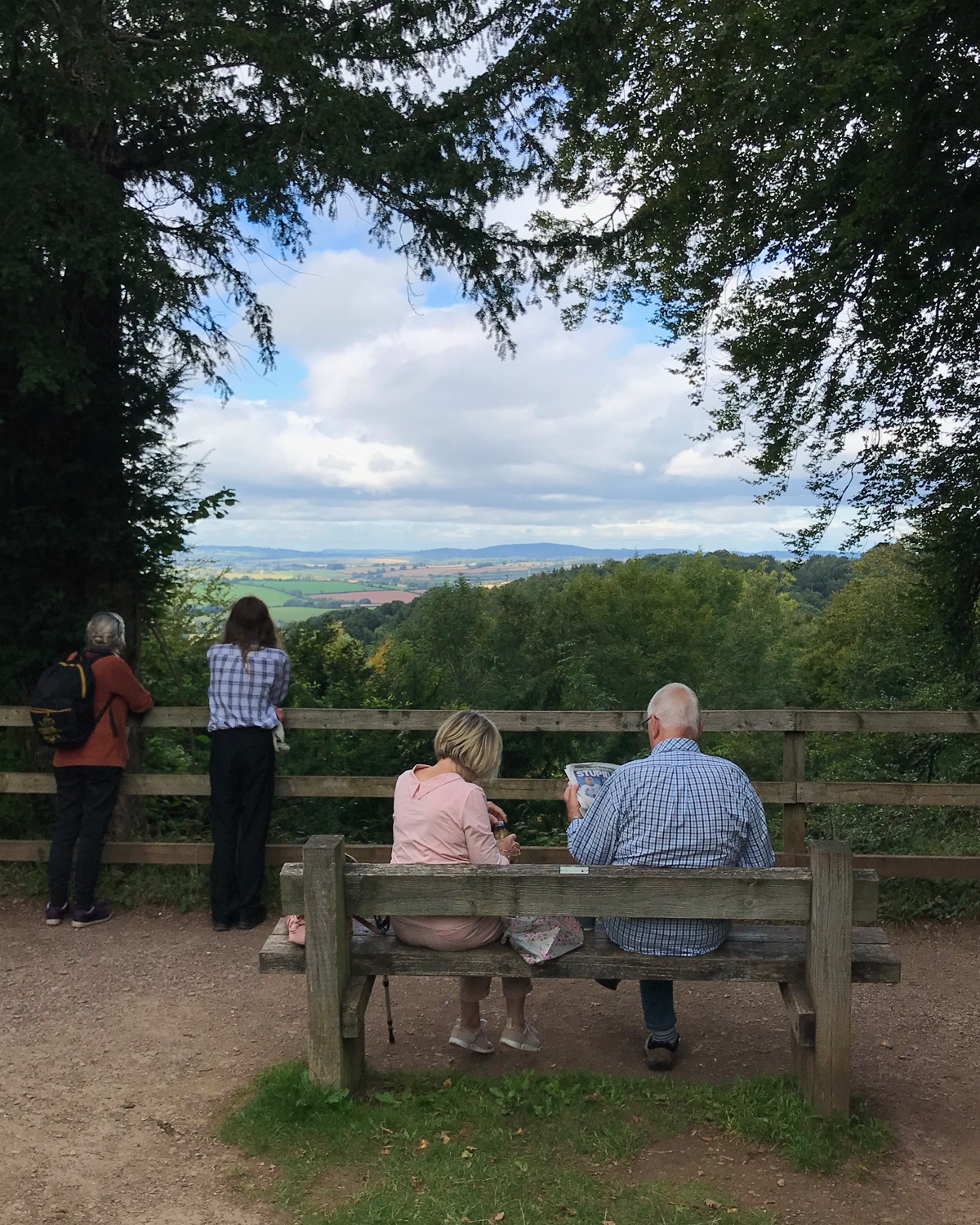
Symonds Yat East
The village of Symonds Yat is divided into East and West by the River Wye. Two sides of the village were historically joined by hand pulled ferries secured by cables. These were operated all along the river by the inns that lined its banks.
You have to imagine the River Wye in past centuries as the main route of transport for goods and people through the area. It was the equivalent of a motorway with the riverside inns acting as service stations.
Now there are only two hand pulled ferries remaining. They are operated by Ye Old Ferrie Inn at Symonds Yat West and the Saracens Head Inn at Symonds Yat East.
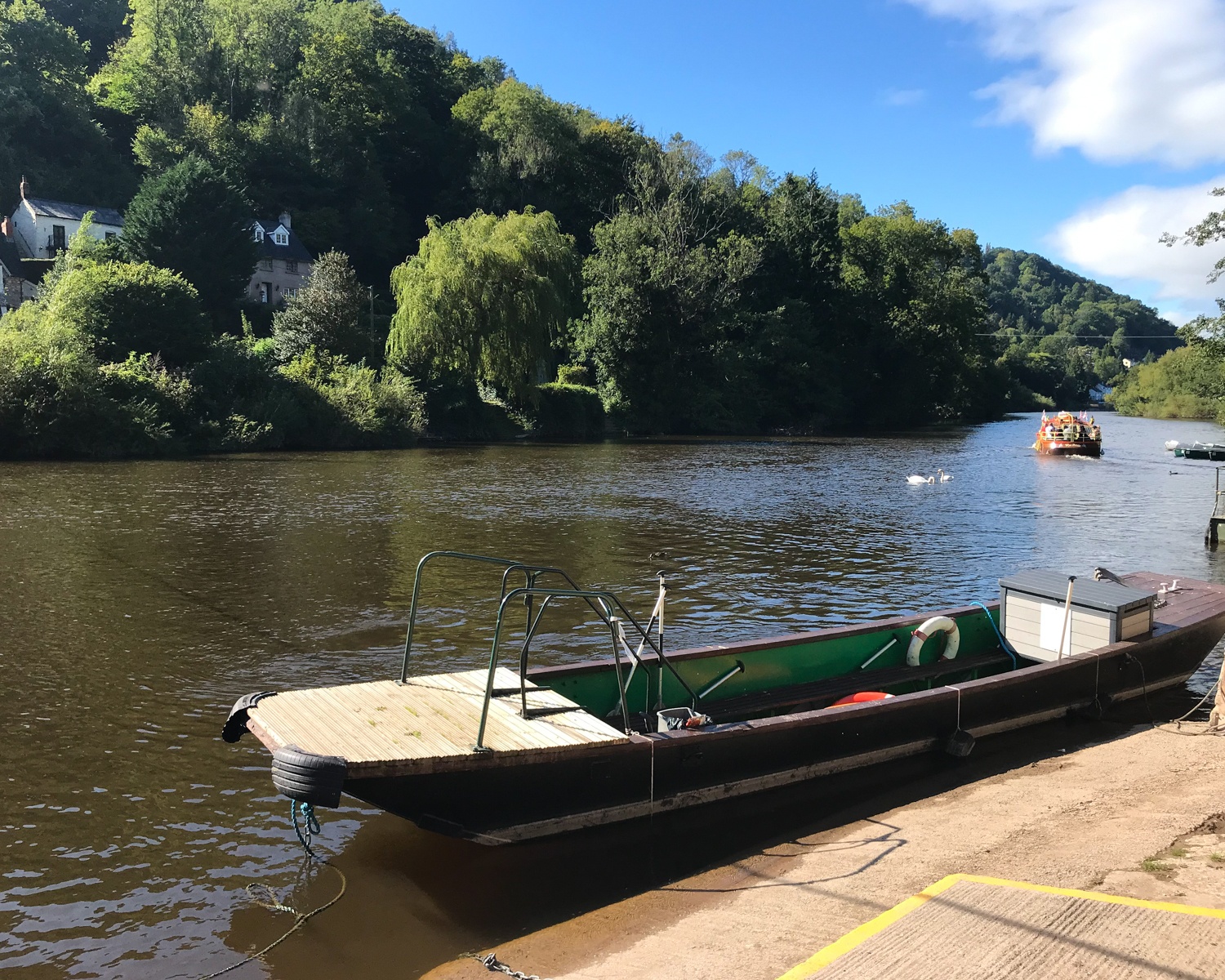
When I visited, the ferries had been damaged by flooding in February 2020 when the Wye breached its banks. The nearest crossing point for Symonds Yat is the road bridge some way up river. Or, the Bibins rope bridge is for walkers downstream.
This means that you may need to plan which side of the river to visit, via car or walking and it’s probably most convenient to start at Symonds Yat East as I did.
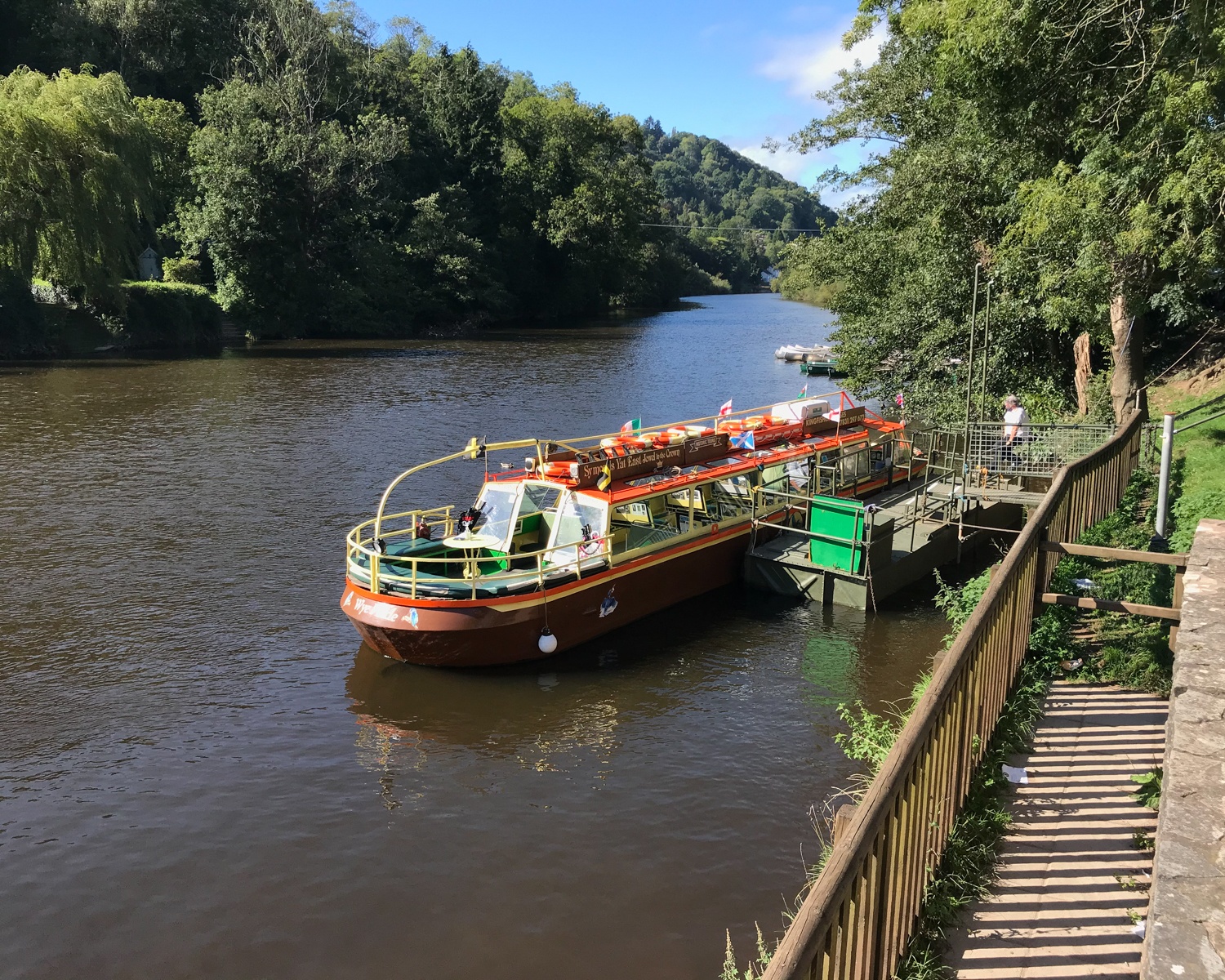
Rather than moving my car from the Symonds Yat Rock car park, I decided to walk down the hill on the Highmeadow Trail. This was a pleasant 20 minute walk downhill to the river.
If you decide to drive down, the road is quite narrow but there are two public pay and display car parks (coins only) by the river. One is by the Wyedean canoe and Adventure Centre and the other by the Royal Lodge.
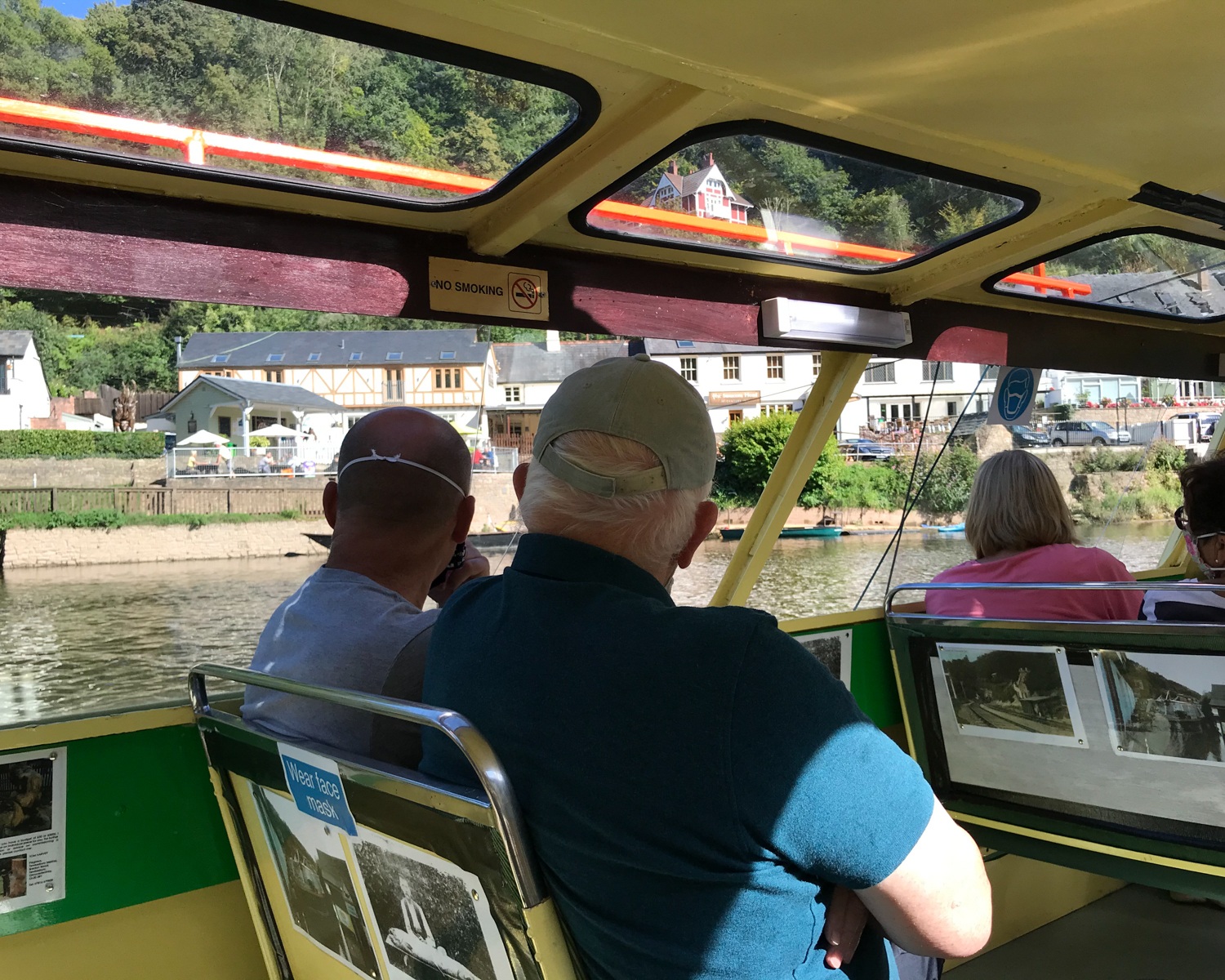
A stroll along the river
As I walked along the river, I spotted the Kingfisher cruises river boat outside the Saracens Head Inn. It was about to leave so I boarded (£8.50 pay on board) for a 45 minute cruise up river.
The pleasure cruise seemed to be running hourly (information from the Saracens Head) and made a relaxing way to see the river. You’ll hear commentary about points of interest along the way.
The cruise took us first up river passing geese, ducks and heron. We saw numerous leisure canoes which are easy to hire for a few hours to explore the river.
On our return we went a short way downstream but there are rapids just below Symonds Yat East with a course used by kayakers. We turned round here and returned to disembark at the Saracens Head Inn.
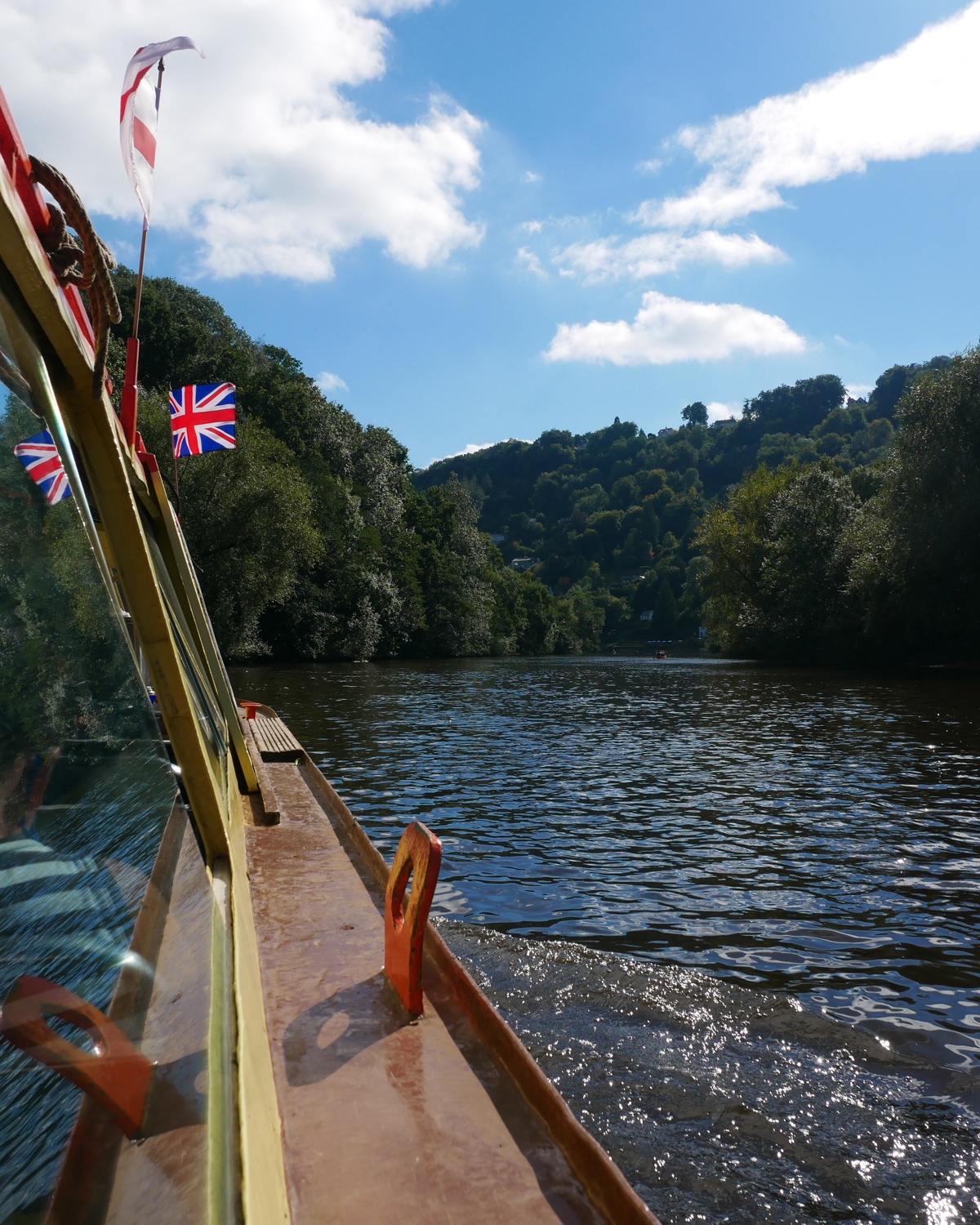
The interesting commentary from the Kingfisher’s captain told us about the salmon fishing that is popular on the River Wye. We learned about the recent floods that had seen most of the pubs and buildings along the river flooded up to their ground floor windows. As a result many places were closed for repairs.
The Wye Valley canoes
Canoeing is one of the most popular River Wye activities to try and there are many companies that will rent you canoes for a day or few hours. You’re dropped off higher up the river, so you can make your way down with the current.
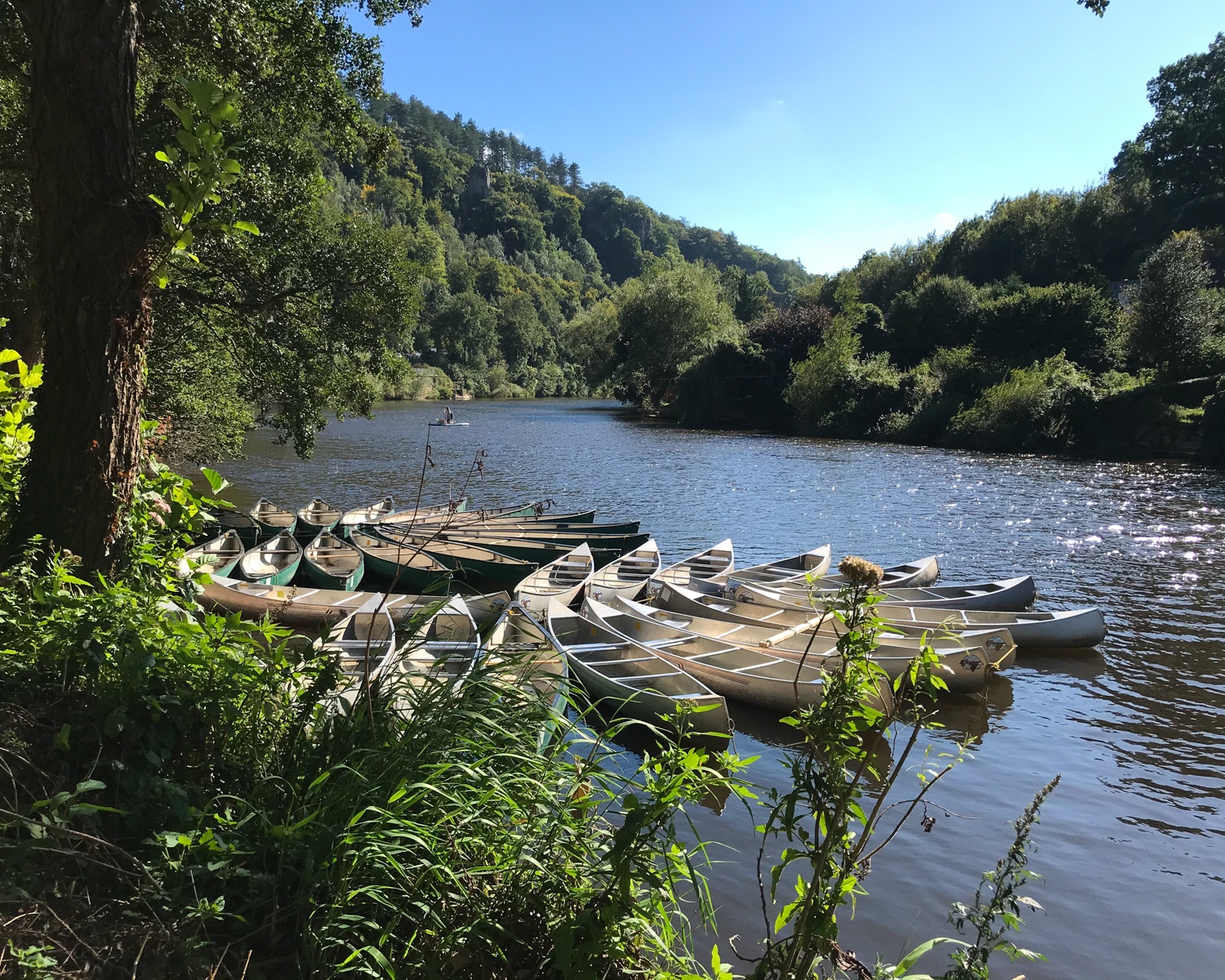
At Symonds Yat East there’s a large canoe centre at WyeDean Canoe and Adventure Centre . Here they will rent you canoes as well as arrange other adventure activities such as paddle boarding, rock climbing and abseiling.
It’s advisable to pre-book these activities as you will need to be dropped off with the canoes to a point higher up the river. But, if you just want to try a canoe out for an hour you can turn up here and see if they have some available for hire.
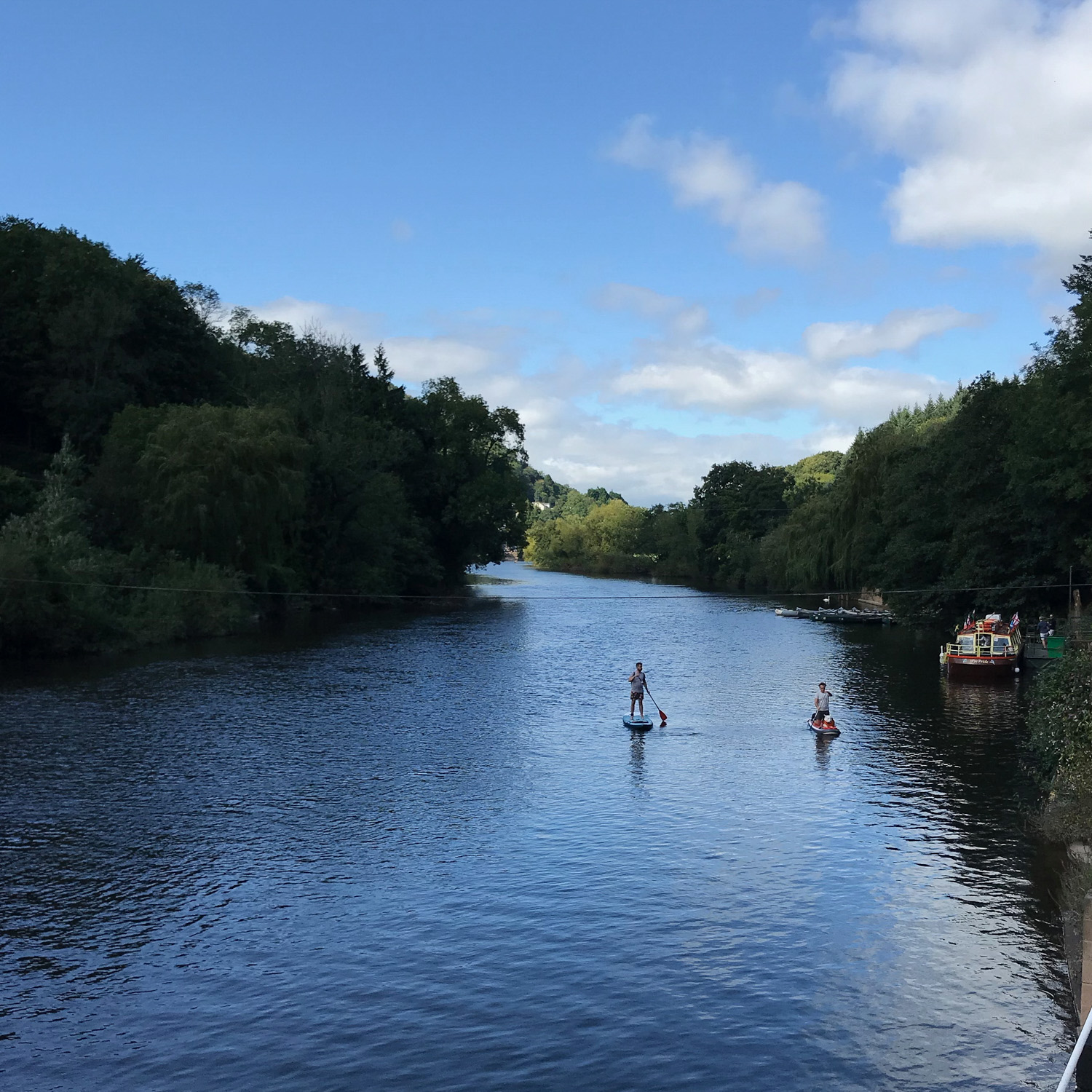
Other canoe hire specialists in the area include Canoe the Wye at Symonds Yat West, Wye Adventures at Symonds Yat, so check out what the different companies can offer.
Symonds Yat river walk
There are numerous walks in the Wye Valley. If you want a quick one from Symonds Yat East, just follow the river path downstream until you get to the Bibins rope bridge across the river. Walk back on the other side to where you can take the hand drawn ferry back across to the Saracens Head Inn.
This is marked on the Symonds Yat trails map as the Peregrine path. Be sure to check first if the hand drawn ferry is operating, as otherwise you’ll need to retrace your steps to cross the river again at the Bibins rope bridge.
The Chalet at Symonds Yat
There’s a striking red chalet at Symonds Yat East, set on the hillside above the Saracens Head Inn. It was brought to the valley by train in 1912 as a flat pack house made of Norwegian pine. More recently it has found fame as the home of the main characters Otis and Jean in the Netflix series Sex Education.
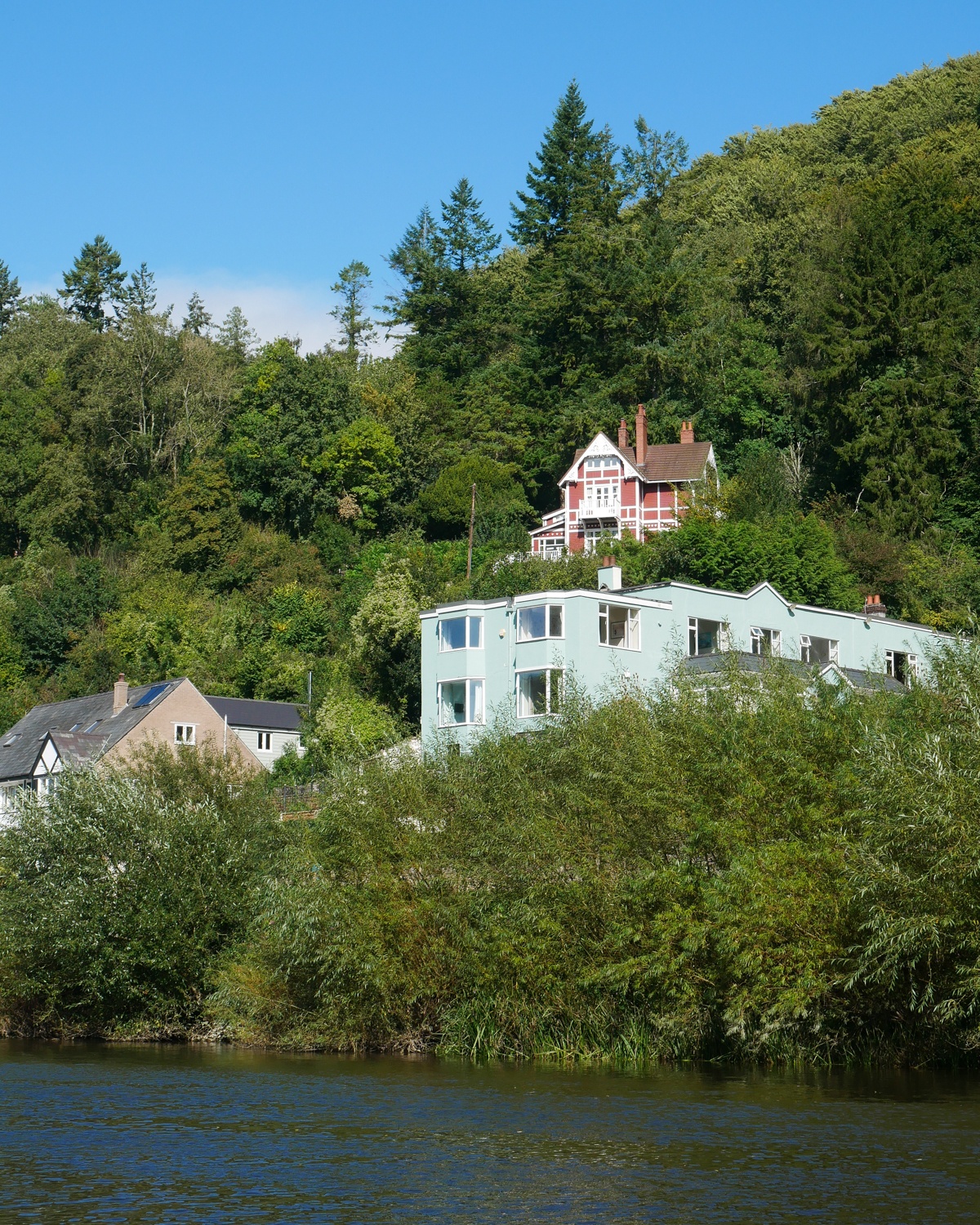
I’ve enjoyed watching the series, especially the scenes set in the Wye Valley. Otis and his mother Jean, played by Gillian Anderson, hang out on the terrace with spectacular views over the river. The Chalet is also available to rent as a holiday house.
Although The Chalet is a private house with a gated driveway, you can get a closer look if you walk up the forest path to Symonds Yat Rock that starts beneath the Royal Lodge.
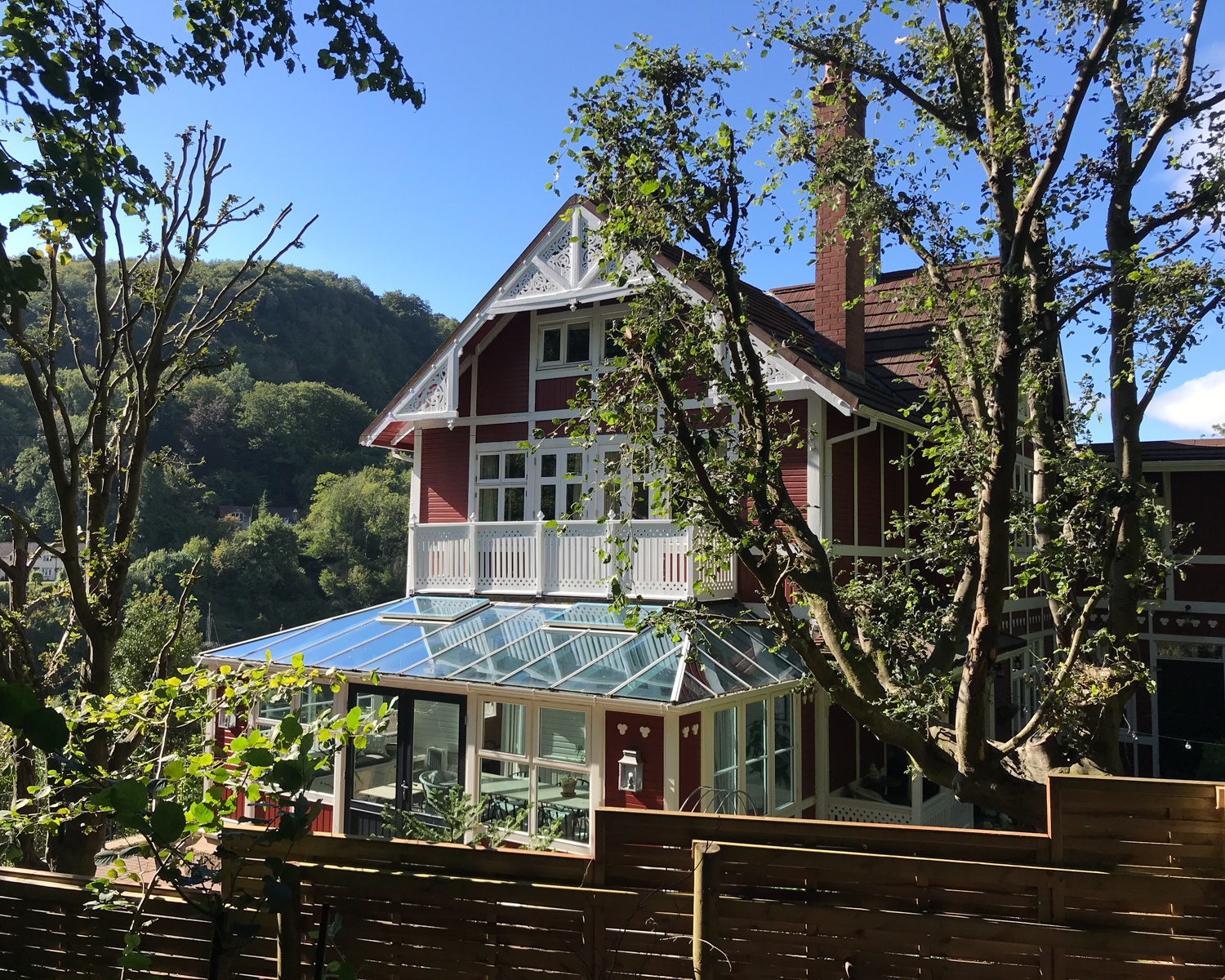
Where to eat at Symonds Yat East
There are a couple of pubs where you can eat at Symonds Yat East, the Saracens Head Inn and the Royal Lodge . The Saracens Head Inn is the most obvious choice. There’s an outdoor terrace as well as inside seating and a riverside kiosk selling drinks, snacks and ice creams.
The Royal Lodge Hotel a little further along the bank also serves lunch and dinner. They too have an outdoor terrace above the car park, overlooking the river.
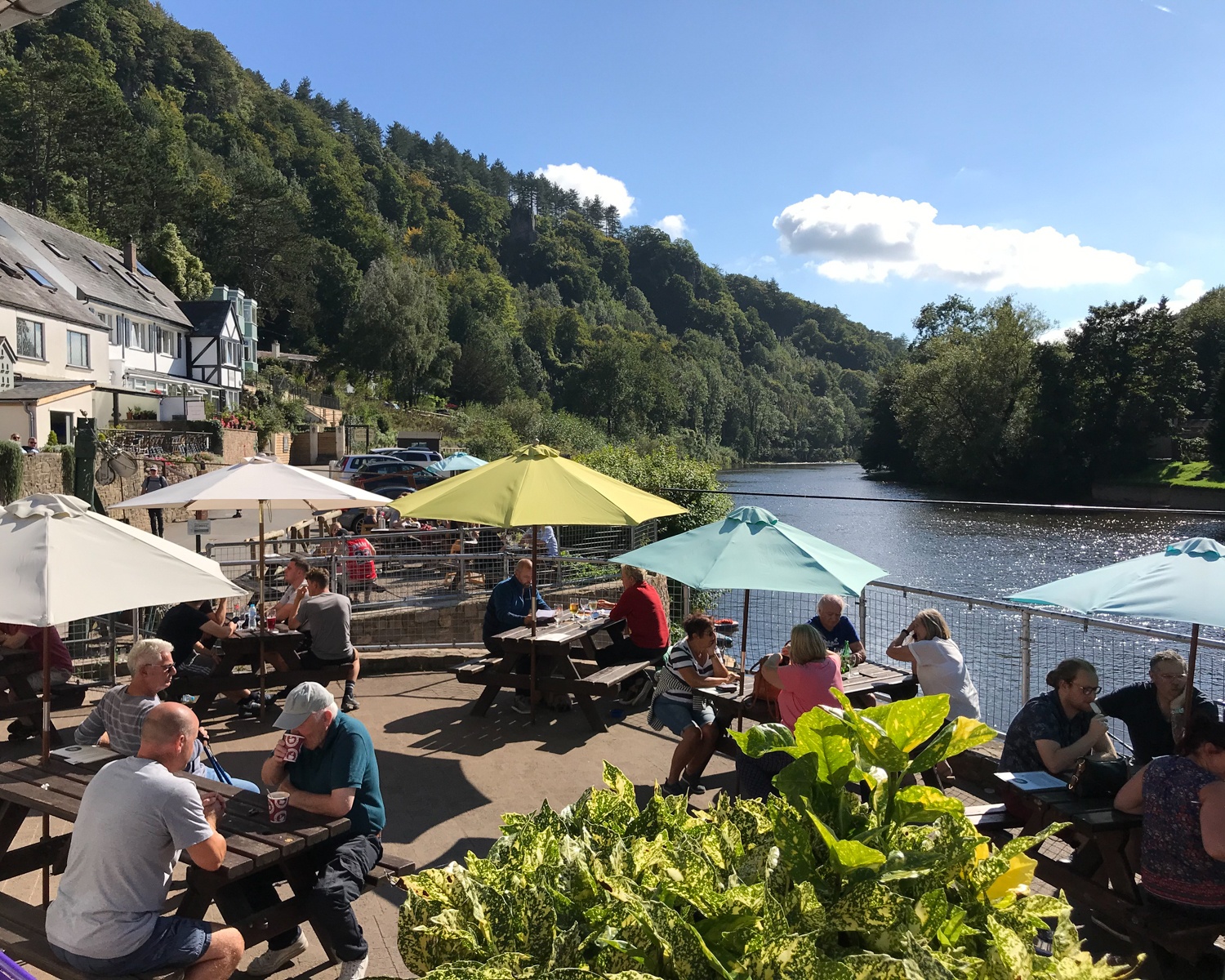
Hotels at Symonds Yat East
If you’d like to stay in Symonds Yat East, there’s accommodation at both the Saracens Head Inn and The Royal Lodge . I haven’t stayed in either, but for position I would probably choose The Royal Lodge. It has a quieter setting, more space and a garden area for guests. For style I’d choose the Saracens Head which has more stylish decor.
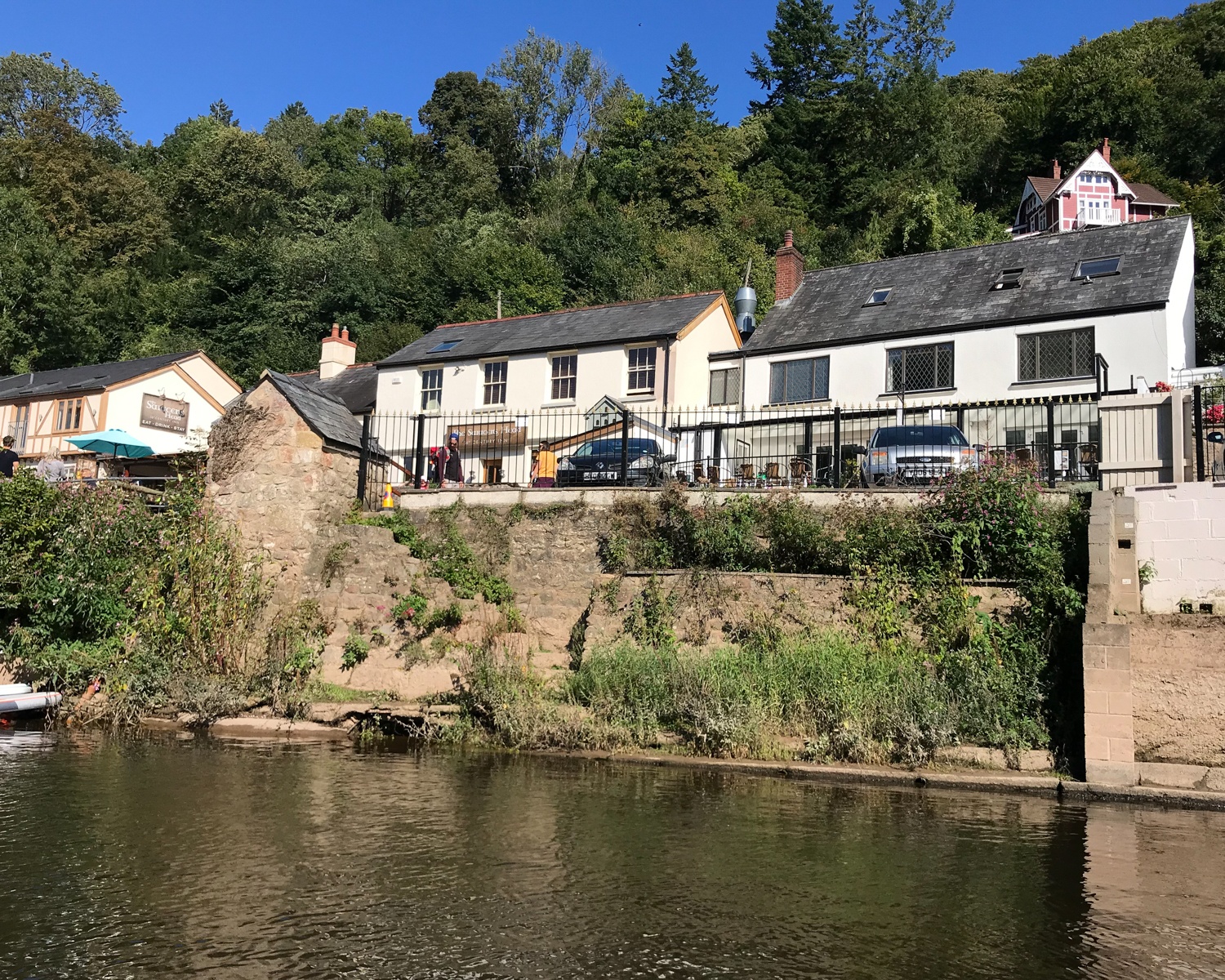
Saracens Head Inn – One of the ancient inns on the river with 12 bedrooms and stylish, contemporary decor.
The Royal Lodge – 26 comfortable guest rooms of various sizes on the site of a royal hunting lodge. Originally had its own private steam railway station that ran until 1959.
There are also numerous bed and breakfasts ( check out these on Airbnb ) in the area that are a short walk or drive from Symonds Yat – or take a look at all the other hotels in the Symonds Yat area .
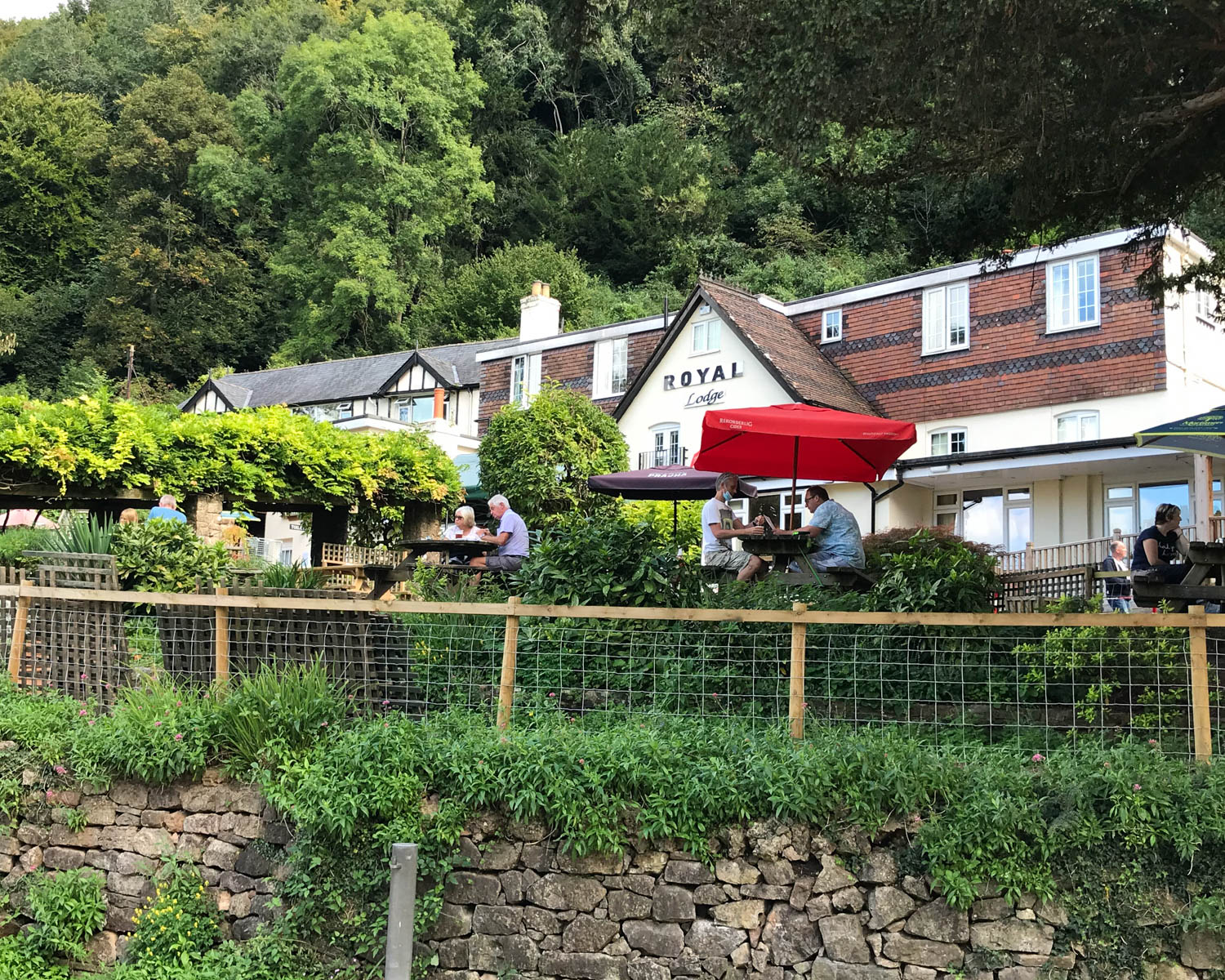
Symonds Yat West
After exploring Symonds Yat East for an hour or so I took the car and drove to take a quick look at Symonds Yat West on the other side of the river. I crossed at the road bridge upstream since the hand drawn ferries were not operating at the time of my visit.
If you approach from the A40, take the turnoff at Whitchurch signposted for Symonds Yat West. A short way down this road you’ll find Symonds Yat West Leisure Park, with a pay and display car park and a number of things to see.
I was curious to take a look at the St Dubricius church by the river, which had been pointed out on the Kingfisher cruise. This medieval church is a popular setting for weddings and funerals.
There’s a jetty for guests to arrive by boat, as they would have traditionally done in the past when the river was the main way of getting around. It’s worth paying a visit in June when the tulip tree here is covered with yellow and orange blooms.
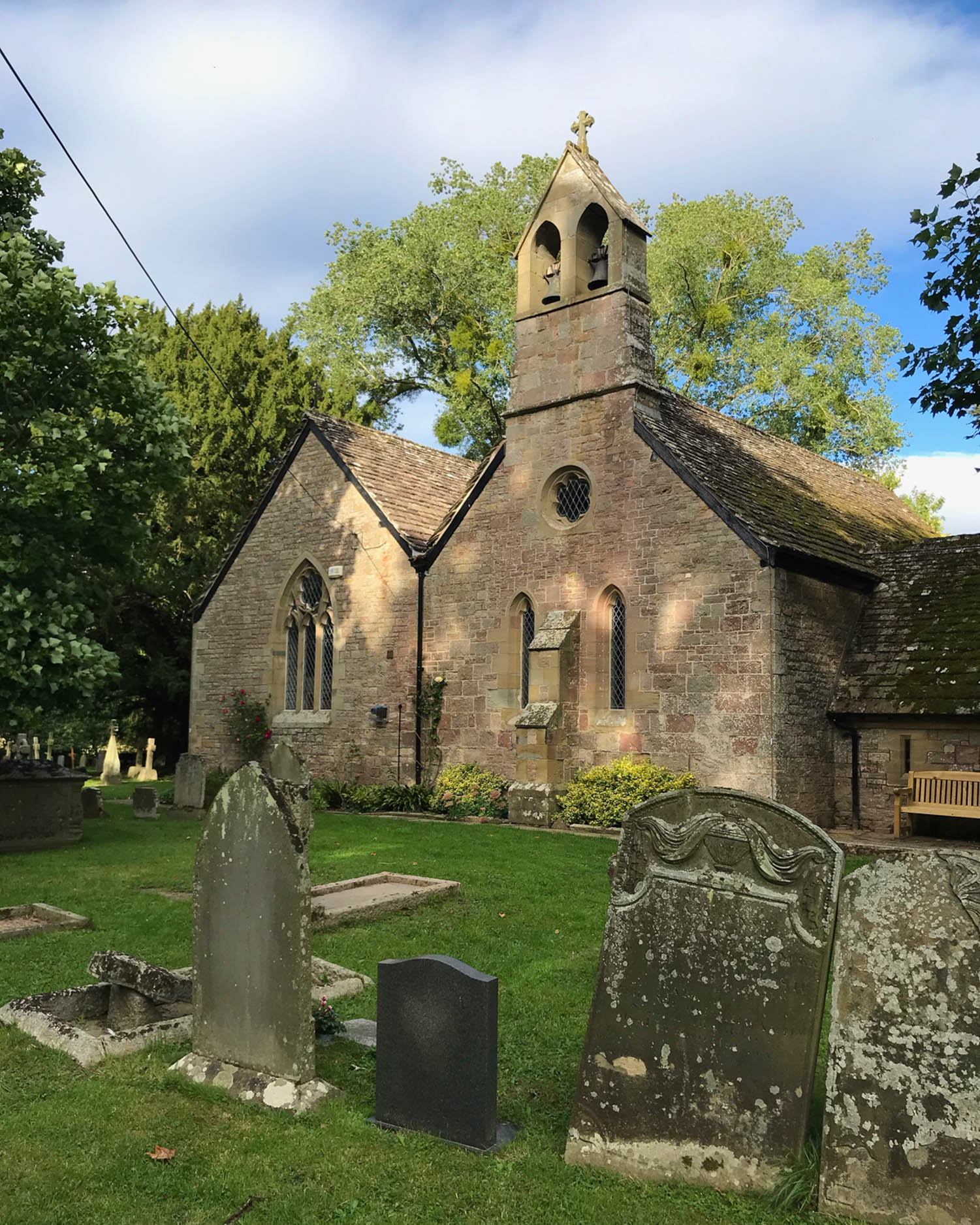
Other things to do in Symonds Yat West
The Wye Valley Butterfly Zoo – A glass indoor butterfly house that’s full of exotic butterflies, with a mini golf course outside.
The aMazing Hedge Puzzle – This Jubilee maze was planted in 1977 and is a traditional hedge maze with a romantic temple at the centre.
River Wye Camping – a pleasant campsite and caravan park with views over the River Wye.
Lady Cristina River cruise – similar to the Kingfisher Cruises, this will take you on a 45 minute cruise up and down the river between Easter and October.
Canoe Hire from Ross on Wye Canoe Hire or Wye Canoes
There was also an amusement arcade, ice cream kiosk, tea room and the Riverside bar next to a residential caravan site.
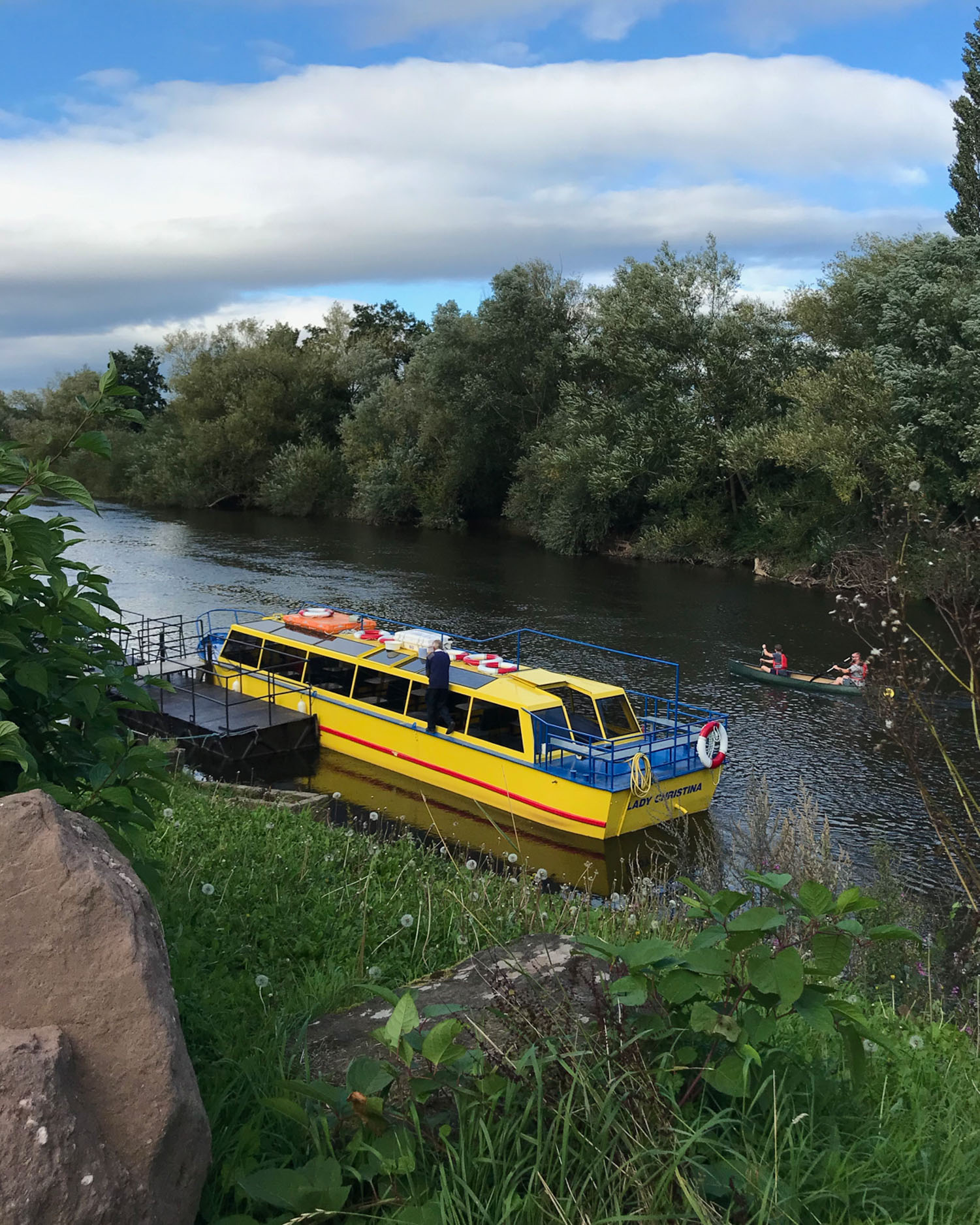
If you are looking for a pub lunch in this area, try the Old Court Hotel or continue up the road to Ye Old Ferrie Inn . For the latter, be aware that the road gets very narrow. There’s a car park by the river for pub customers or you can park in the pay and display car park just before it at the Paddocks Hotel.
You can also book accommodation at both the Old Court Hotel and Ye Old Ferrie Inn . Or, stay at one of the many bed and breakfasts ( check out these on Airbnb ) around Symonds Yat.
Monmouth in the Wye Valley
The riverside town of Monmouth, capital of Monmouthshire was traditionally the halfway point of the Wye Tour. Here 18th century travellers would spend the night, before continuing their river journey down to Chepstow.
The town dates back to Roman times, built at the crossing place of the river, where the smaller River Monnow flows into the Wye and trade on the river could be controlled.
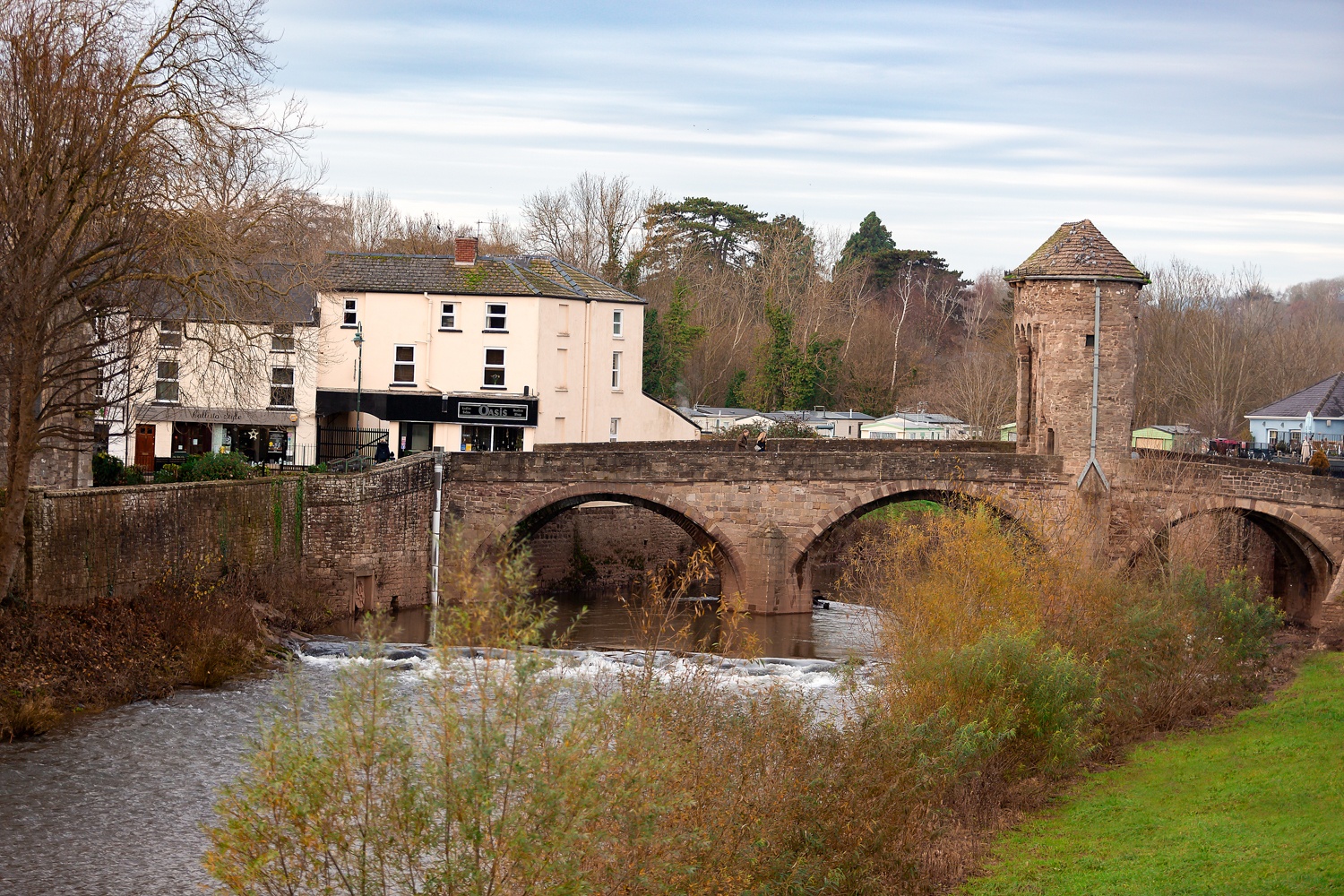
Things to do in Monmouth
I only passed through Monmouth briefly but wish I’d had more time. There a number of things to do in Monmouth that would make a pleasant hour or two looking round.
The heart of the old town is the Shire Hall, an imposing stone building that was built in 1724. This was the site of the Shire court, with markets being held in the surrounding square.
The last treason trial was held after the Chartist uprising of 1839 was held here. You can also see the statue in front of the building of Charles Rolls, founder of Rolls Royce motor company who grew up in Monmouth.
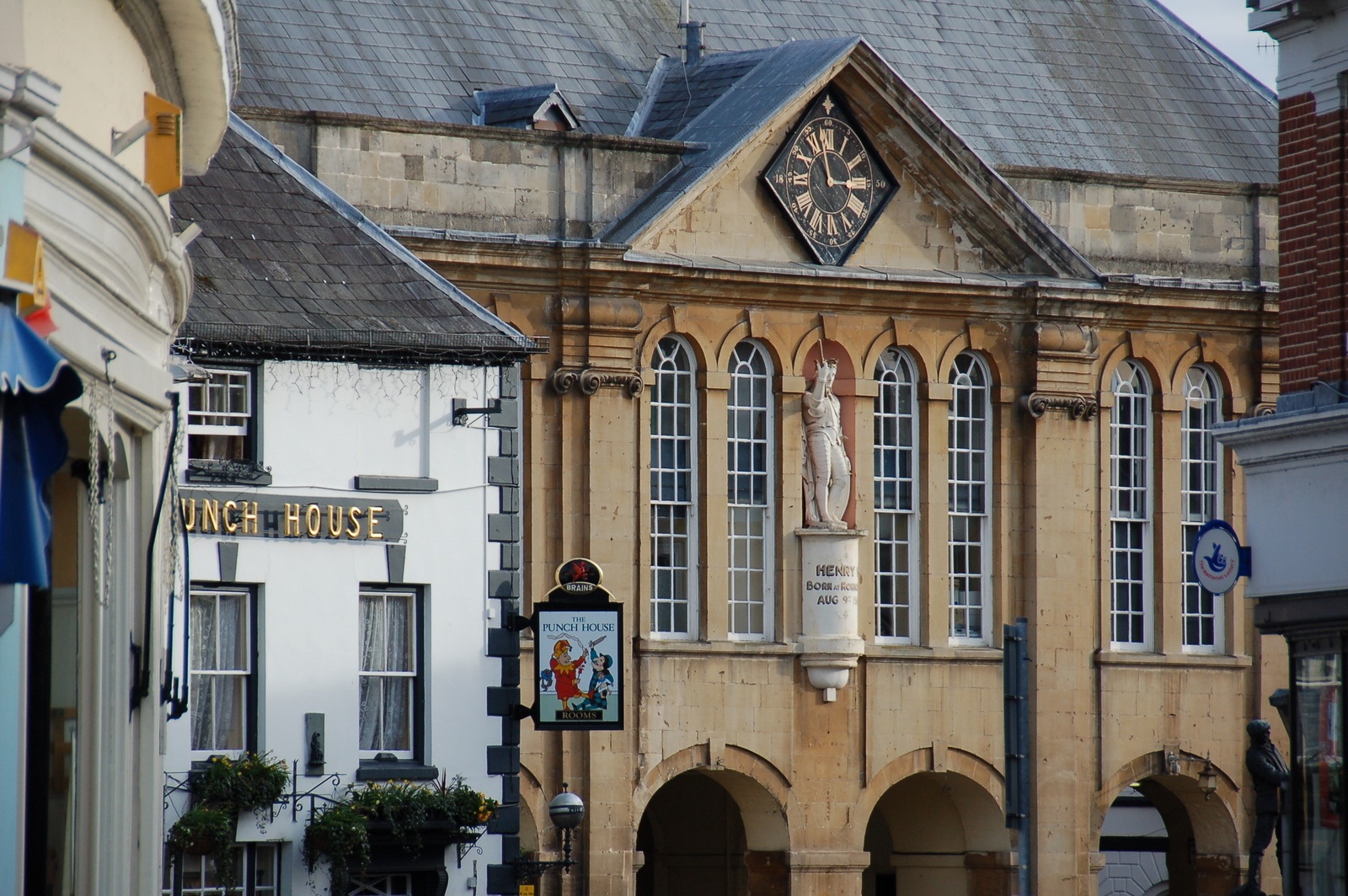
Monmouth also has connections with Admiral Horatio Nelson. He visited the town in 1802 as part of the Wye Tour and was much feted during his visit.
Until the 1850s, there was a strong shipbuilding trade at Monmouth. Nelson was well aware of the importance of wood that came from the forests of the Wye Valley.
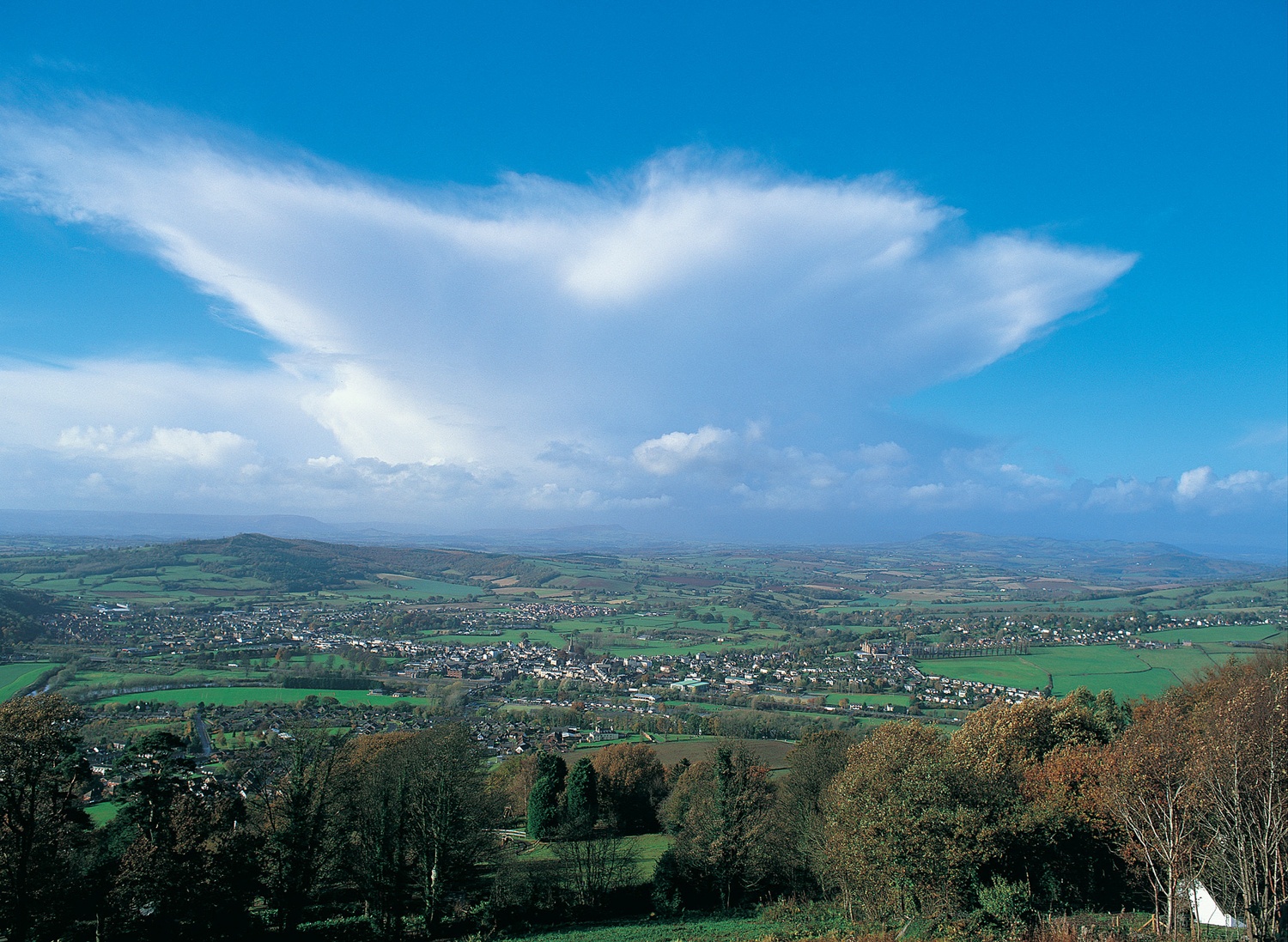
A Naval Temple had been built by public subscription the year before his visit, on the Kymin Hill overlooking Monmouth. It commemorates the role of Nelson and other admirals in the victory over France during the Seven Year War.
During Nelson’s visit with Lady Hamilton and her husband Sir William, he had breakfast at the small circular banqueting house known as The Round House on Kymin Hill (now managed by the National Trust ) and admired the fine views.
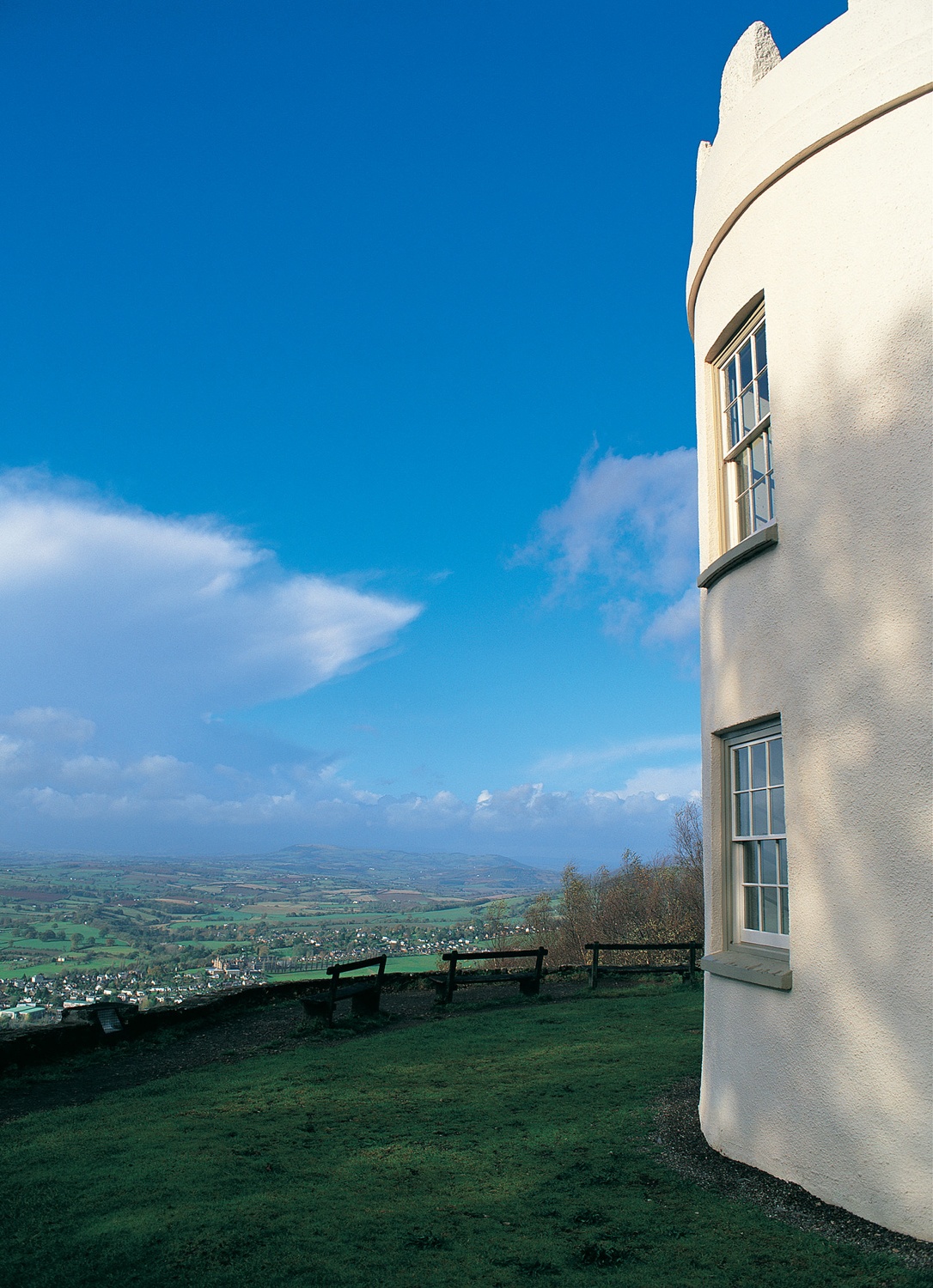
Nelson Museum and Garden
In Monmouth the Nelson Museum founded in 1924 includes a collection of items relating to Lord Nelson. There is a Nelson Garden with a small pavilion on the spot where Nelson passed the evening with his friends.
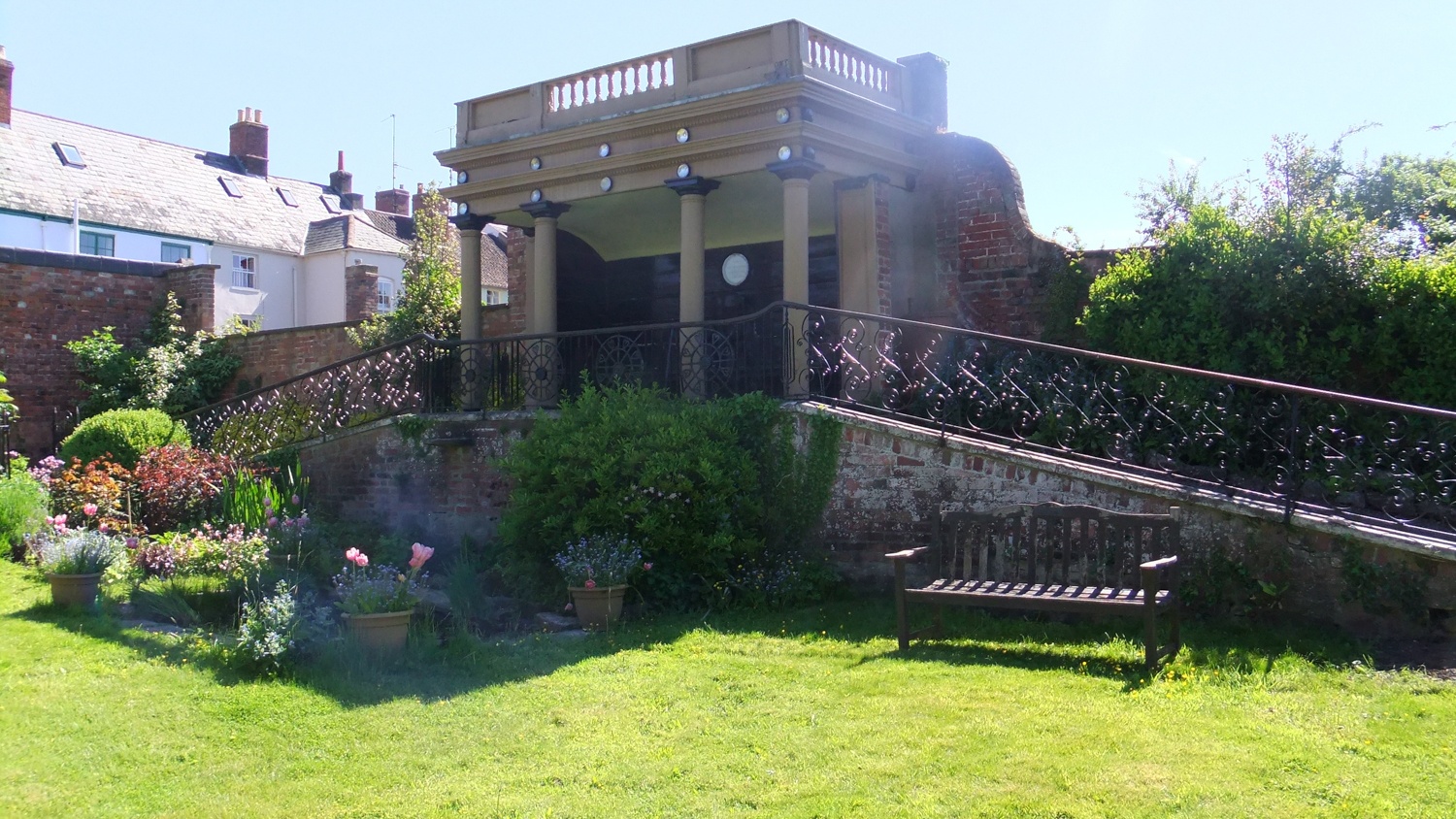
View some remains of Monmouth’s medieval past in the town. You’ll see the ruined tower of the old Monmouth Castle and the Monnow bridge and gate over the River Monnow.
The gatehouse was originally part of the town fortifications. Over time it became a toll booth to control entry into the town.
There’s a great walk nearby that takes you along the Monmouthshire canal. Discover the industrial heritage of this area – read about walking along the Monmouthshire and Brecon canal
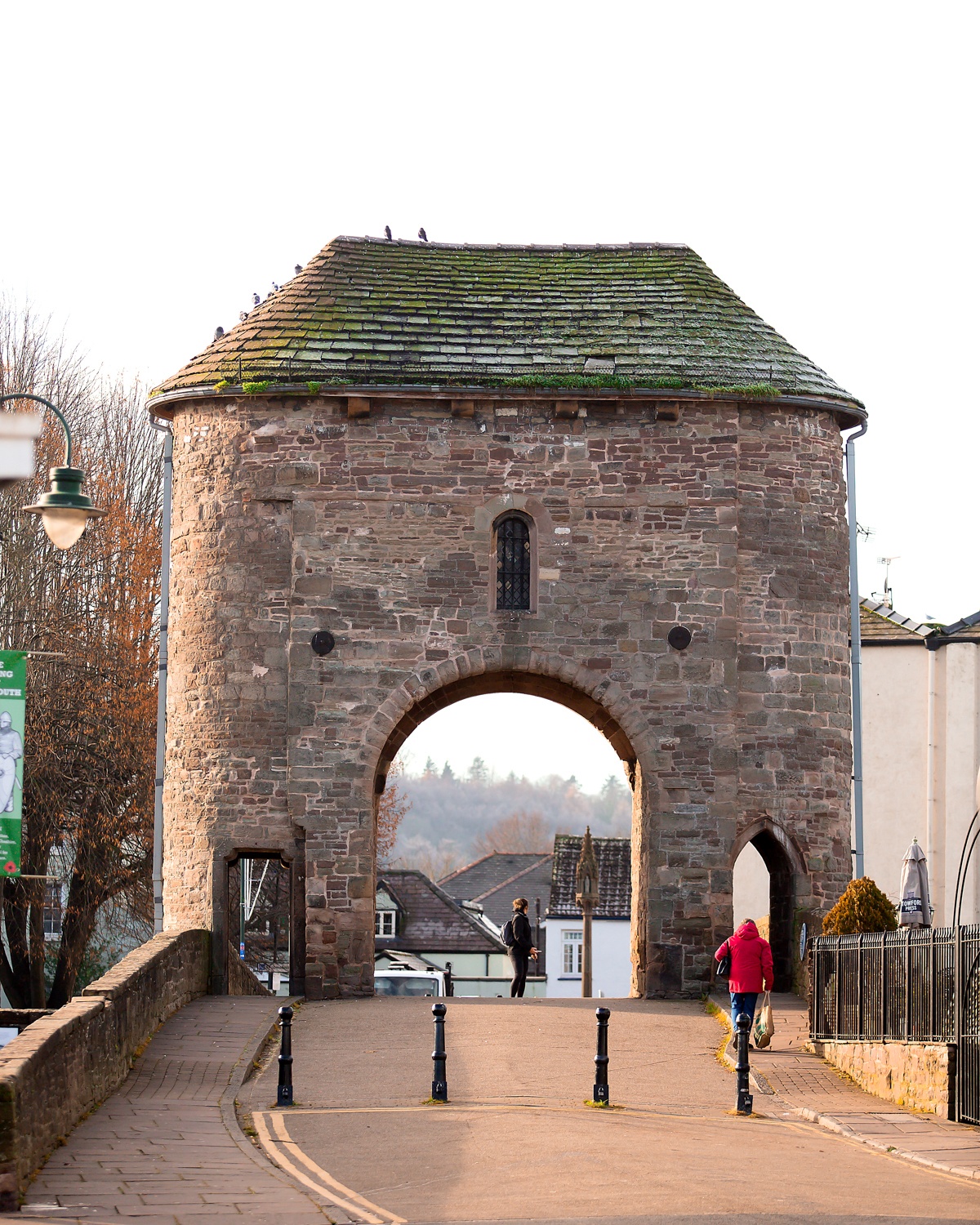
Where to eat and stay in Monmouth
The Whitebrook – if you’re looking for a special experience, book into this restaurant with rooms that’s a short drive south of Monmouth. This Michelin star restaurant offers seasonal menus that incorporate local and foraged plants from the Wye Valley. There are 8 bedrooms decorated in contemporary style.
The Stonemill at Rockfield – In a village just outside Monmouth, The Stonemill has a charming rustic atmosphere with a menu based on local and seasonal produce. Accommodation is also available in their two and three bedroom cottages, Steppes Farm Cottages . This would make a good base for seeing the area.
If you’re planning a picnic, the Marches Delicatessen (102 Monnow Street) is a good place to pick up local cheeses and other artisan produce from the Wye Valley.
Tintern in the Wye Valley
As we drift southwards, the next stop on our picturesque Wye Tour is Tintern. It’s most famous for the massive ruins of Tintern Abbey that dominate the prime spot on the banks of the river.
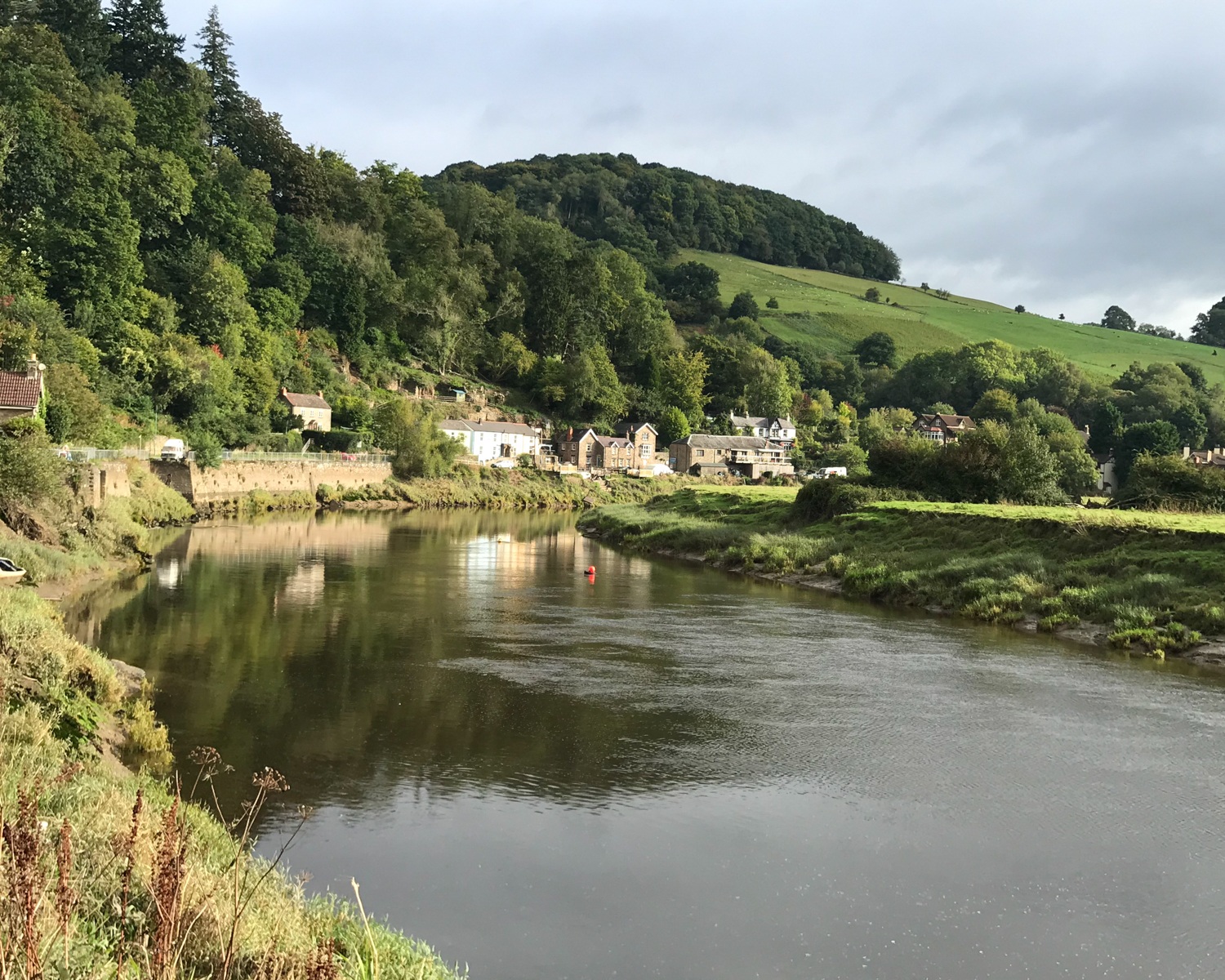
Tintern Abbey
Founded by the Cistercian monks in the 12th century, Tintern Abbey must have once been an enormous hive of activity. It extends over a large area with cloisters, gardens, an infirmary, refectory and guest accommodation for Medieval travellers.
The Abbey has been one of the most popular Wye Valley attractions since the 1750s, the interior of the nave is laid to grass to make it easy for visitors to walk through the ruins.
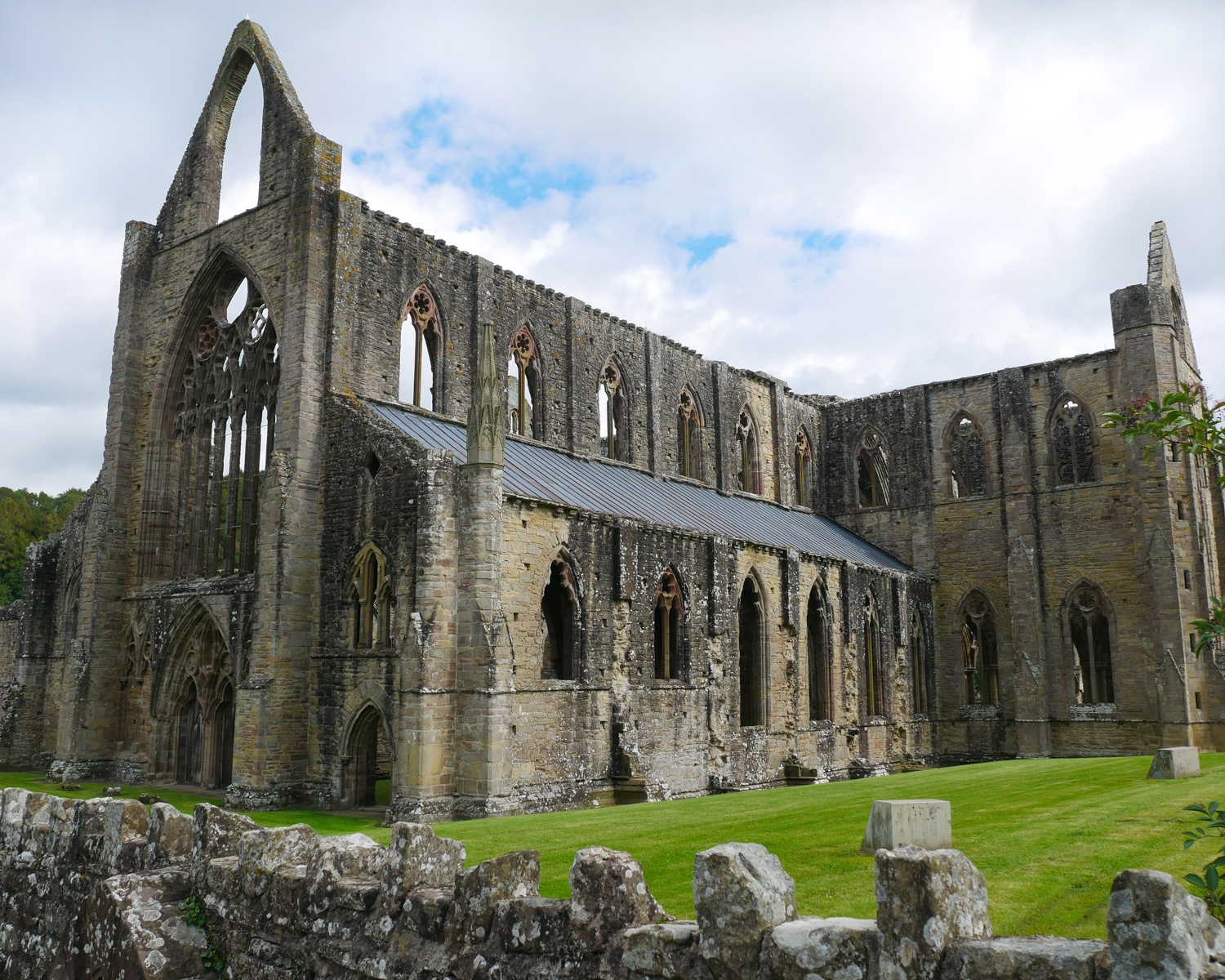
At the time of my visit the nave was closed for repair of the stonework. Unfortunately it was not possible to walk inside the buildings where you get some of the most atmospheric photos.
However you can still wander around the outside of the abbey structure and through the ruins of other monastery buildings. Watch for the information signs to tell you what each building was used for.
More info: Tintern Abbey CADW website | Parking outside the Abbey (charges apply) | Toilets inside the Abbey visitor centre and public toilets also adjoining the car park | The Anchor Inn is a pleasant pub for lunches next to the Abbey. There is also The White Monk, a small tea shop and deli shop serving ices creams.
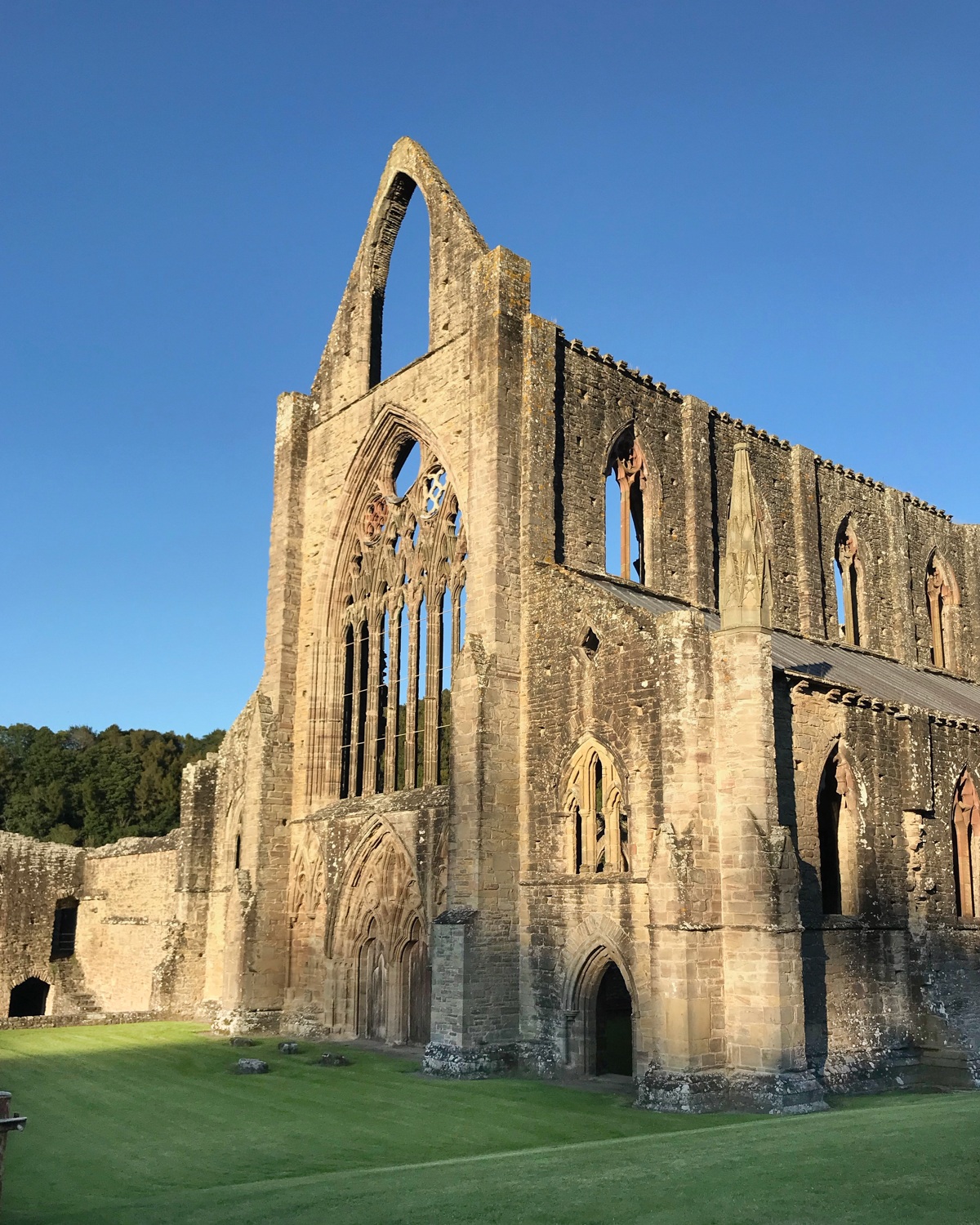
The Wireworks Bridge
In the 1870s, the railway reached Tintern, allowing even more people to visit. This now quiet part of the valley was busy with industry with several foundries specialising in the production of iron wire.
You can learn more about this industrial heritage by following the Angidy Trail , a 5 mile walking route through the Angidy Valley at Tintern.
There’s more fascinating industrial heritage to be found in the South Wales valleys which are very close. Read about 16 fun things to do in the valleys of South Wales
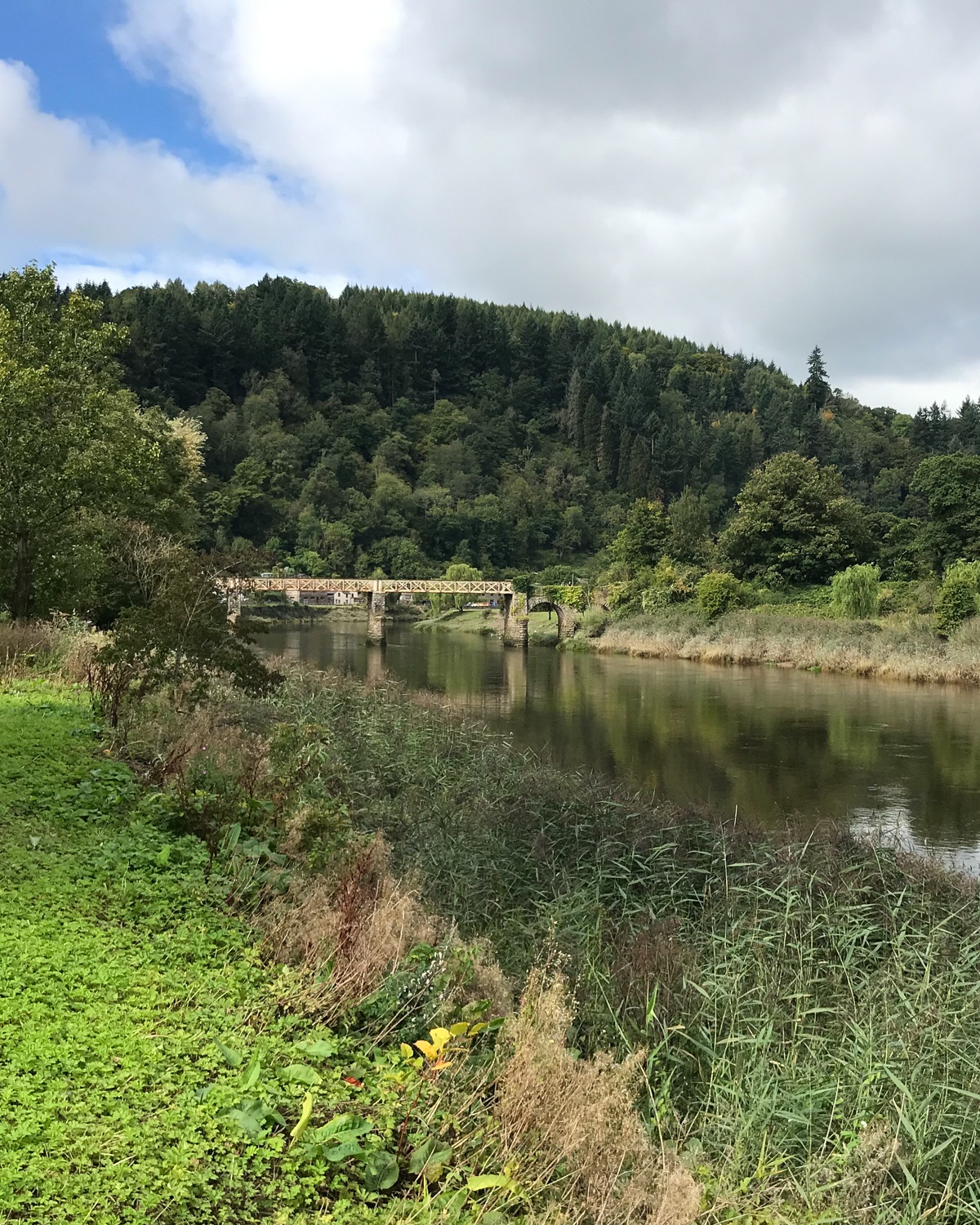
The Wireworks Bridge is part of this industrial history and crosses the Wye within sight of Tintern Abbey. It once brought the railway across the river to the valley mills and furnaces. This picturesque metal bridge has more recently found fame as one of the filming locations used in the Netflix series Sex Education.
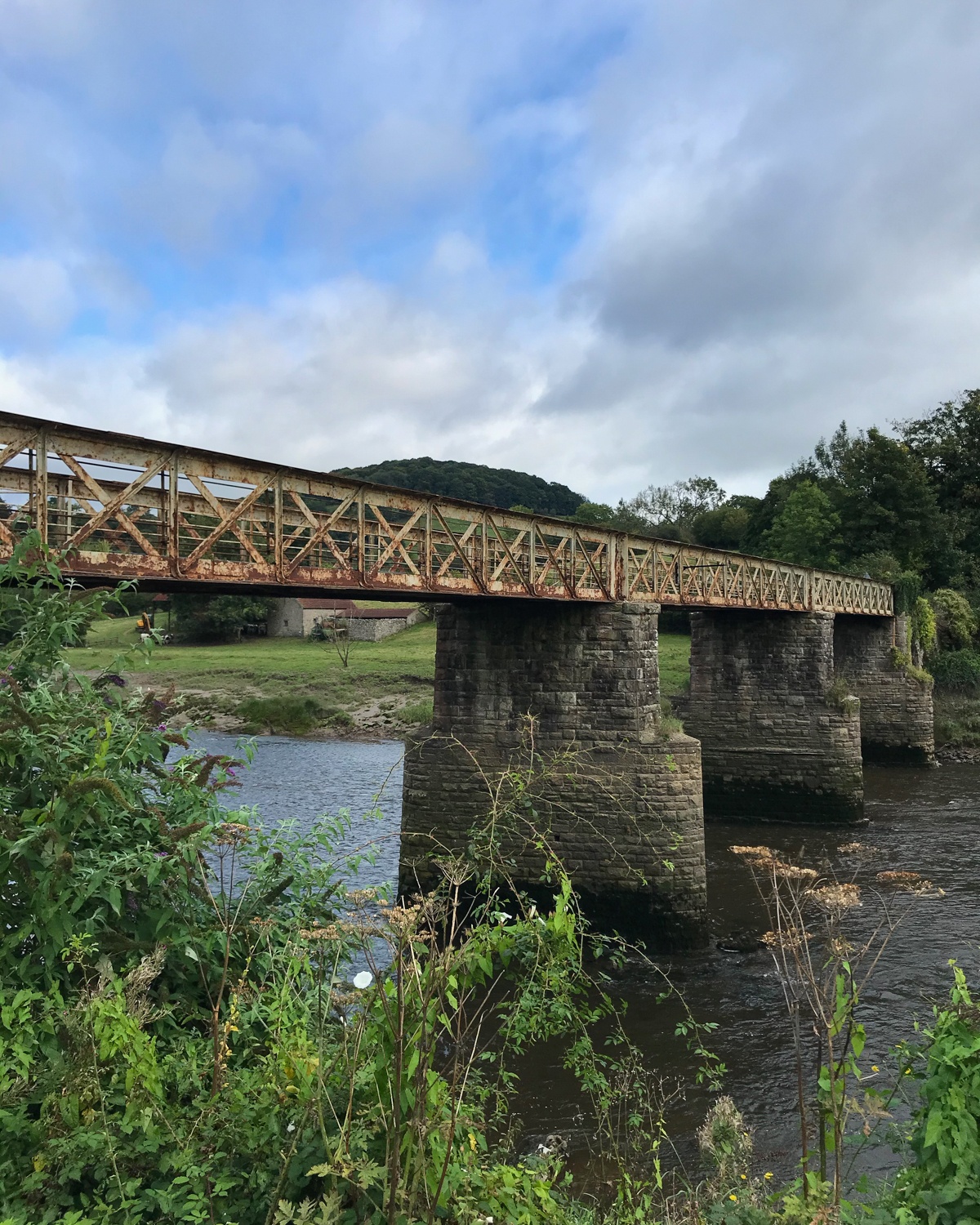
The bridge is also popular with walkers and by crossing it you can follow a steep path up the hill to a viewpoint. Known as The Devil’s Pulpit, it offers a fine view back over Tintern Abbey.
I only had time to follow the path a short distance over the bridge. Otherwise I would have liked to have climbed right to the top for some nice photos!
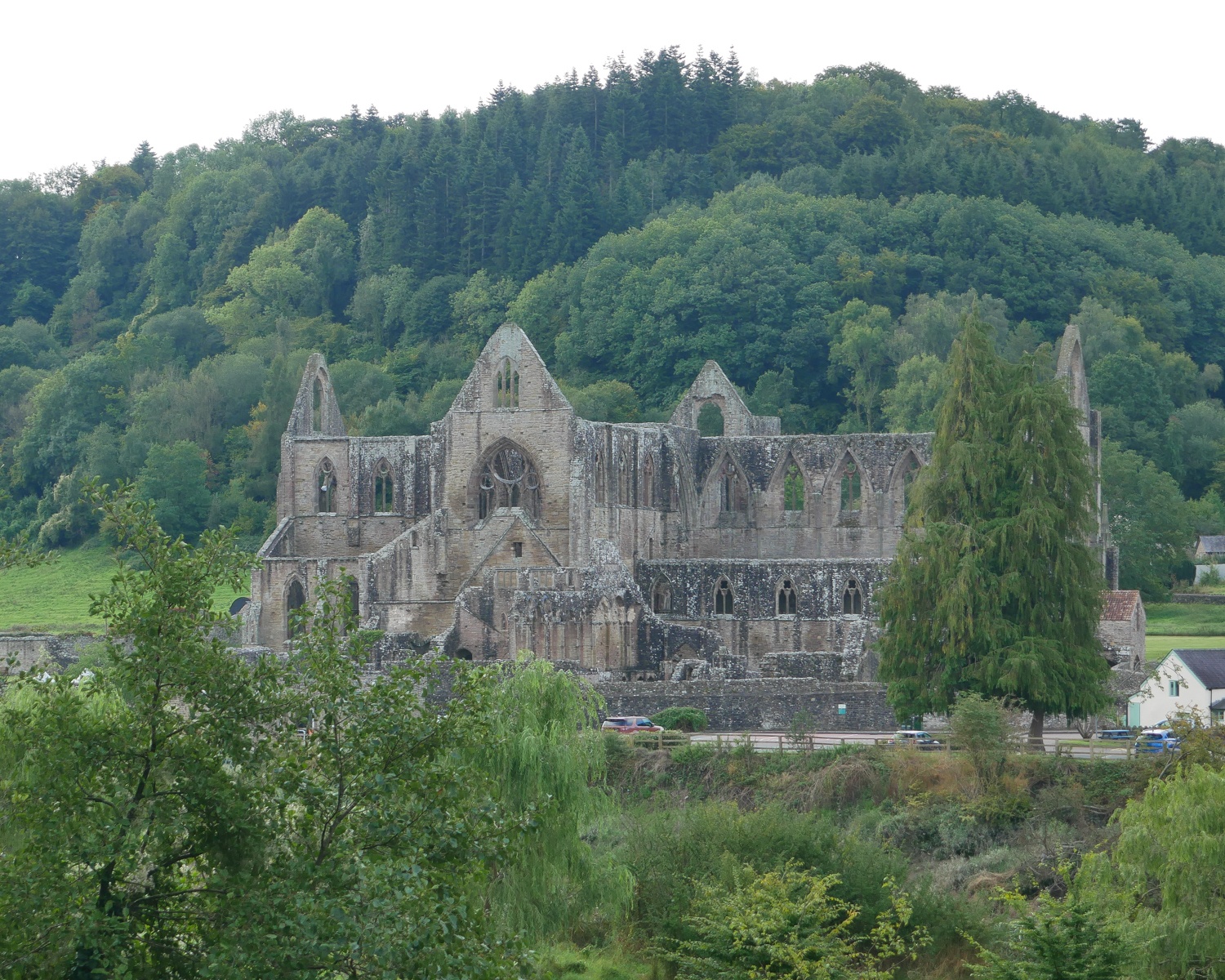
Wye Valley Sculpture Garden
A little further up the valley I visited the Wye Valley Sculpture Garden . It is open through the summer by appointment for groups and in February when the woods are filled with snowdrops.
Photographer and artist Gemma Wood has created the garden over the last two years, by adding her own sculptures and remodeling the mature garden. It was originally created by her parents who ran one of the first vegetarian guest houses in the area.
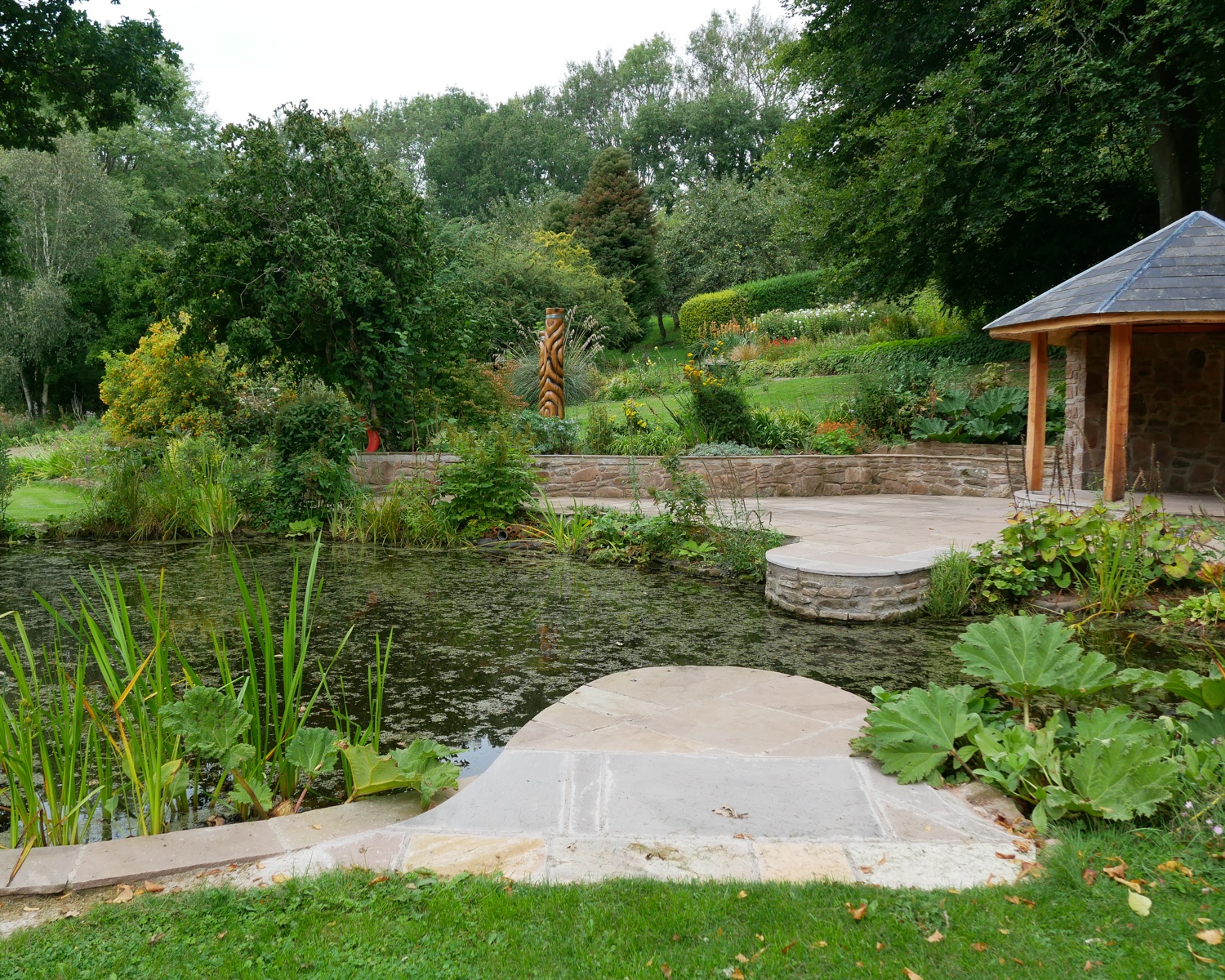
This beautiful garden established on the south facing slopes of the valley combines the formality of paths, arbours and stonework, with a wilderness of mature trees, shrubs and borders combined with an orchard and woodland area.
As you wander around the garden, Emma’s own sculptures are thoughtfully placed to draw the eye. Her organic forms seem in harmony with their natural surroundings made from local wood, slate or stone.
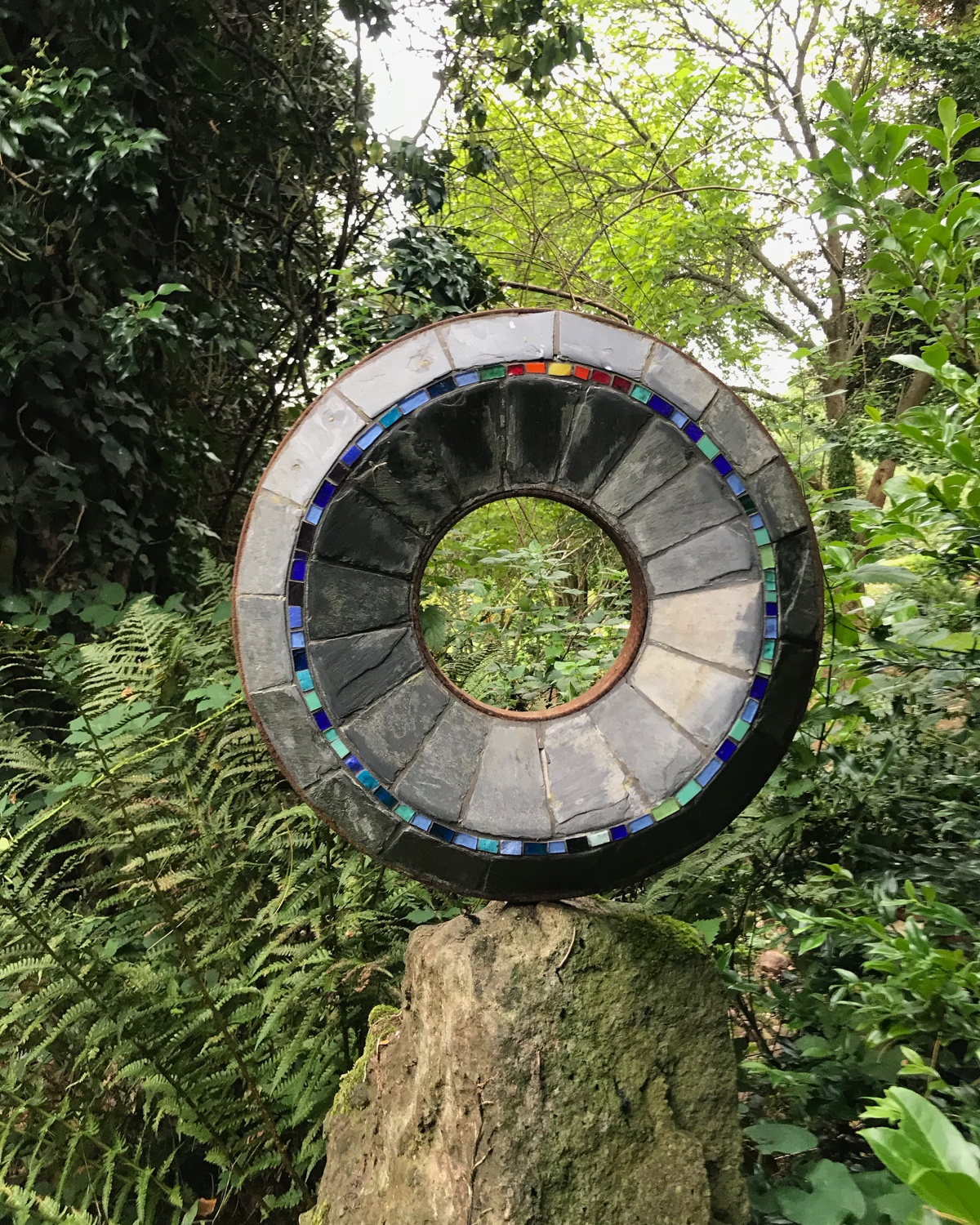
The garden is full of atmosphere, with the rich smell of apples on the ground in the old orchard. Gnarled trees reach their lichen covered branches to the ground like fingers.
On one weekend in February the garden opens to show off the collection of snowdrops created by Gemma’s parents that clothe the ground in the woodland area. Gemma runs the garden single handed, so it’s currently only open on Sundays in the summer. I highly recommended a visit if you’re there at that time.
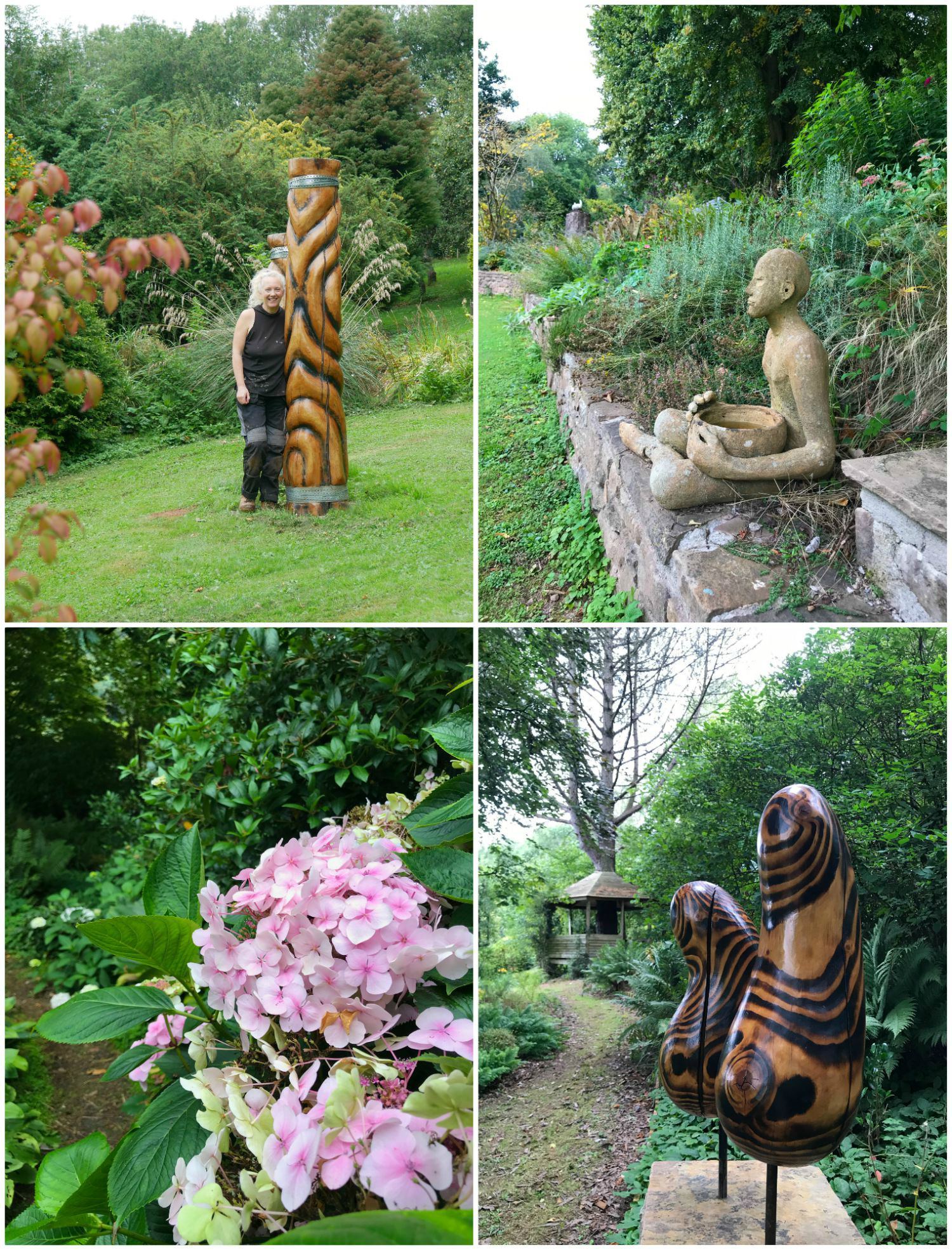

Parva Farm Vineyard
Close by is the Parva Farm Vineyard , run by Judith and Colin. They have a smallholding with sheep and cattle as well as making wine, mead and cider. It’s believed that this sunny, south facing slope was used to cultivate vines by the Cistercian monks of Tintern Abbey and there’s a self guided tour route around the vineyard.
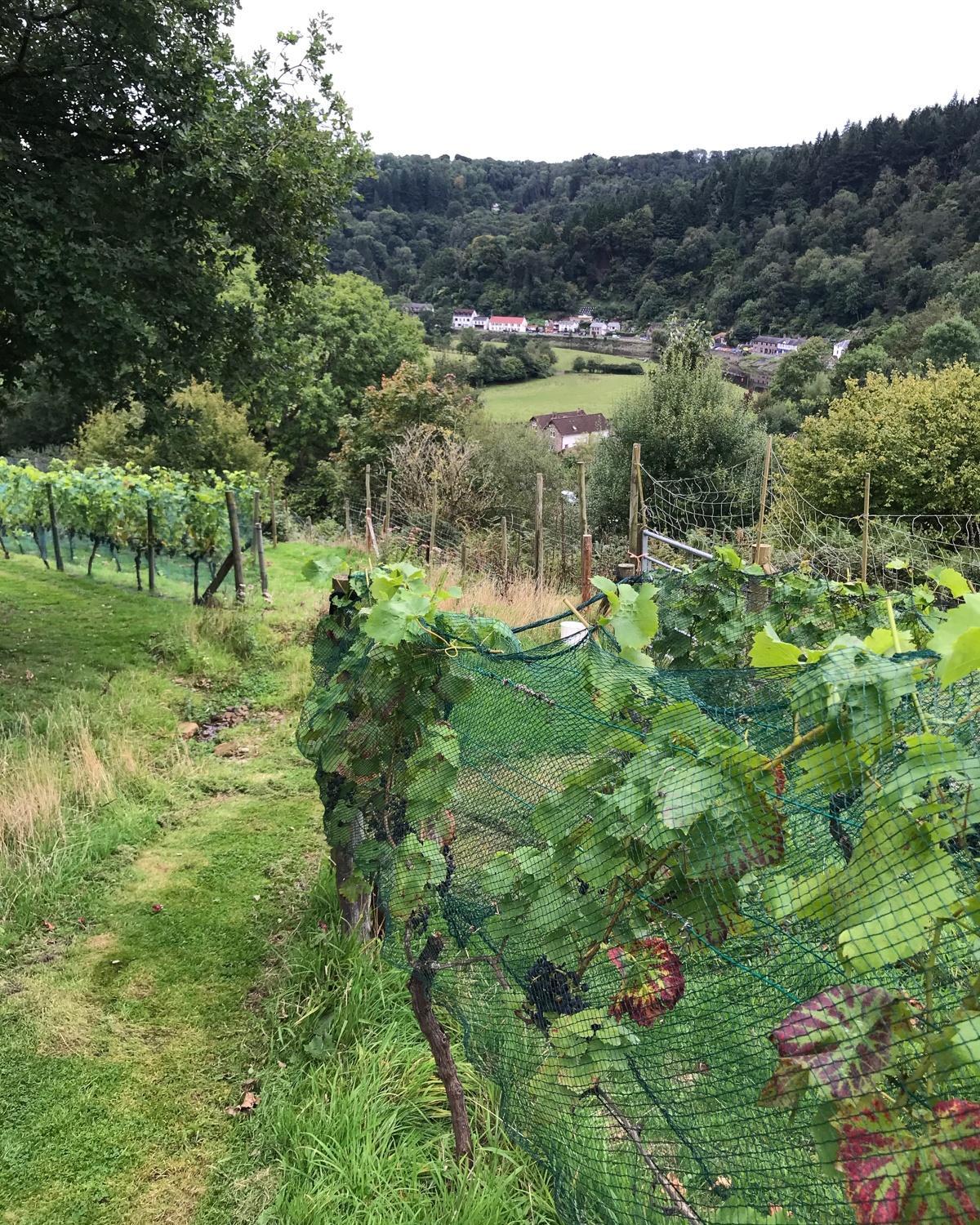
Different varieties of grapes are grown here to show visitors. Most of the wine is made from varieties such as Pinot Noir, Bacchus, Muller Thurgau and Seval Blanc, with the white wine varieties growing best in our cooler northern climate.
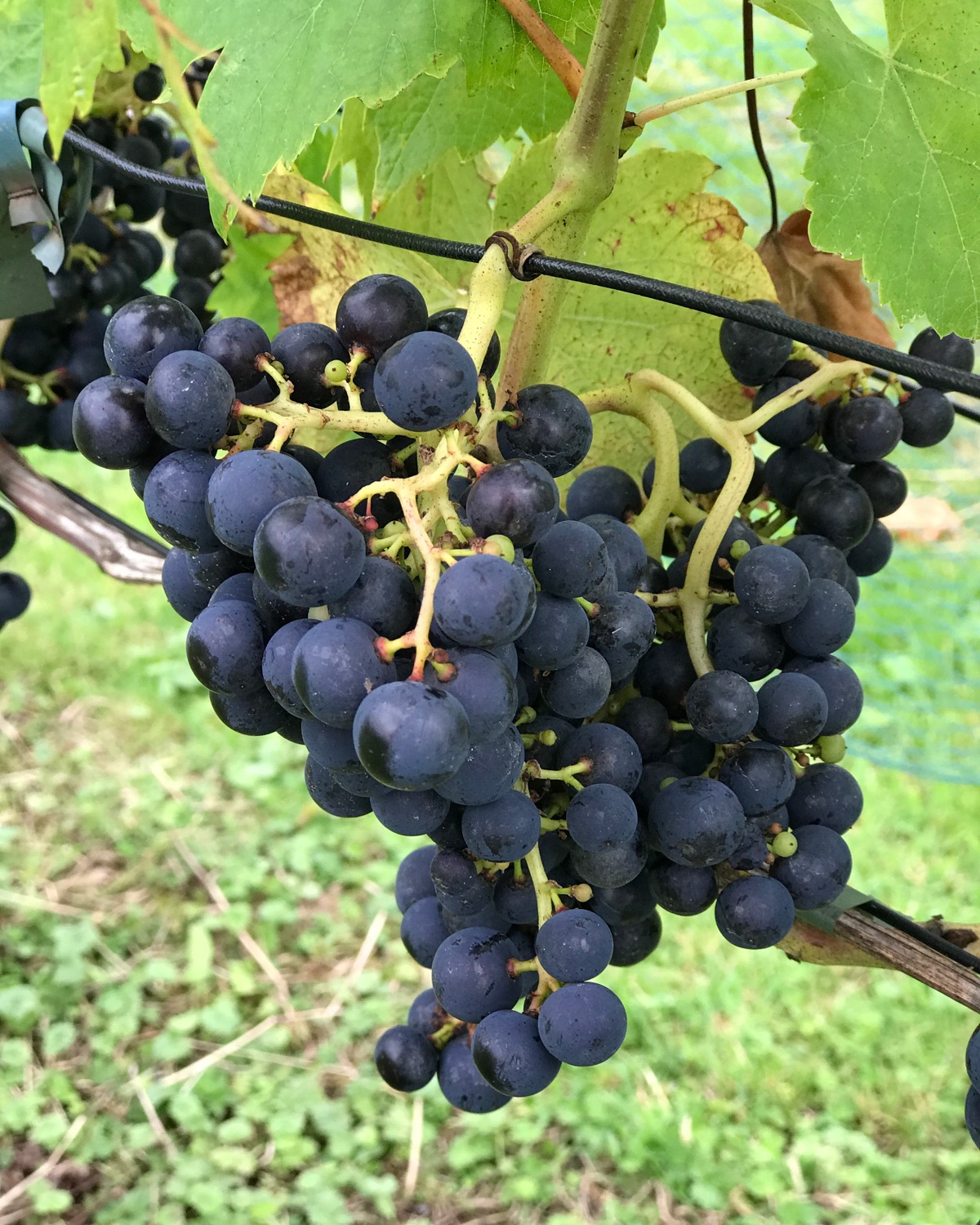
The farm shop is open several days a week and you can then make an informal wine tasting. You can buy the delicious wines, including the bottle of white sparkling wine I had to take home, the Wye Valley’s answer to champagne!
Kingstone Brewery
Just beside the Wye Valley sculpture garden, another enterprise that’s well worth a visit is Kingstone Brewery . This four barrel microbrewery creates real ales that are brewed and bottled on site.
Although tasting sessions are currently on hold, you can visit the small brewery shop and purchase a few different bottles. There’s a selection of nine different ales from the amber Abbey Ale to the No 1 Premium Stout and malty Tudor Ale. Also look out for the Kingstone beers on draught in local pubs and in bottles to purchase from local shops.
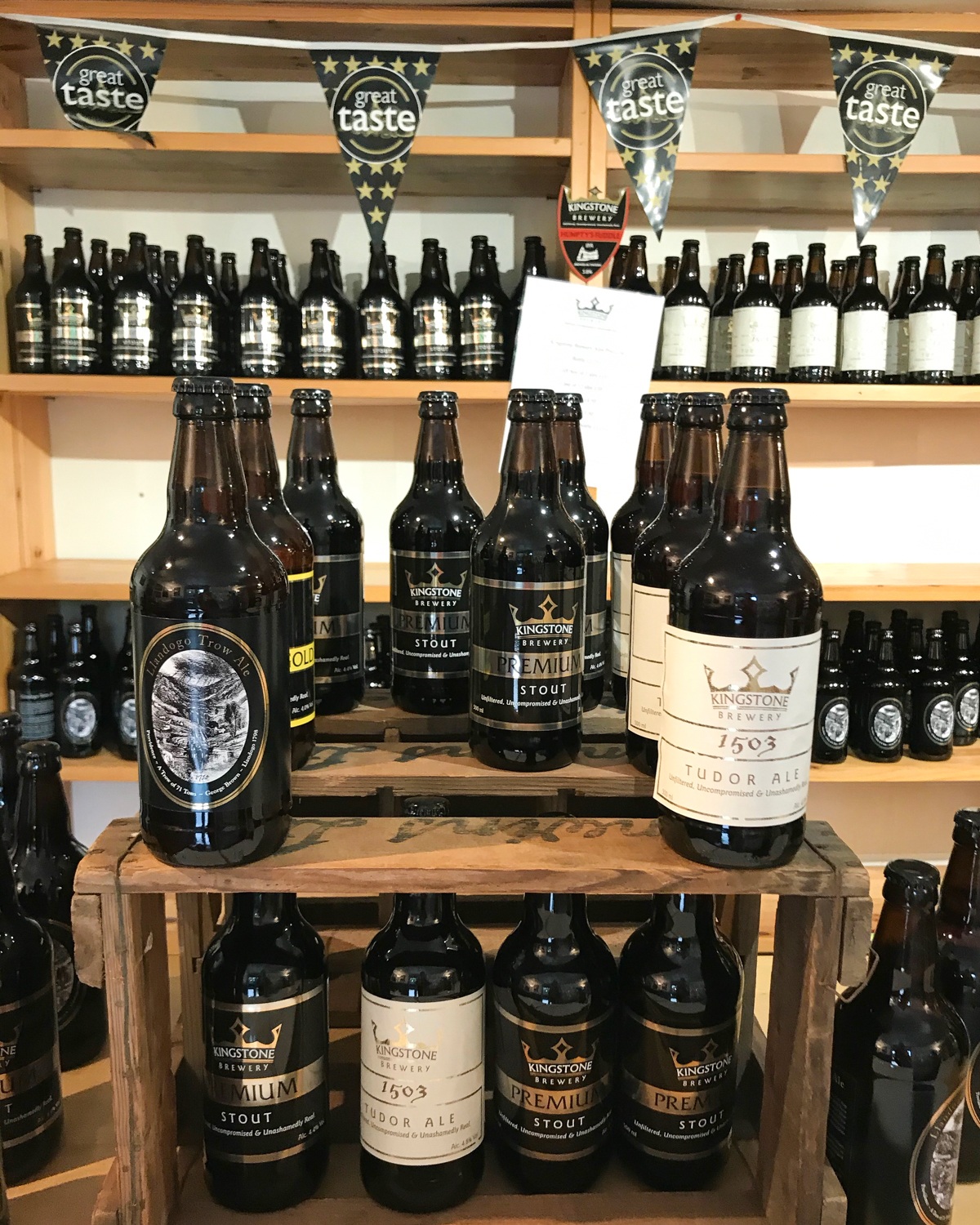
Looking for an interesting place to stay that reflects the rustic character of the Wye Valley? There’s simple accommodation beside the brewery in 5 wooden cabins and one converted horsebox at The Hop Garden .
Each of the cabins has a bathroom and kitchen, with wood burning stoves. They give that feeling of glamping in the woods, but with all the comforts of home.
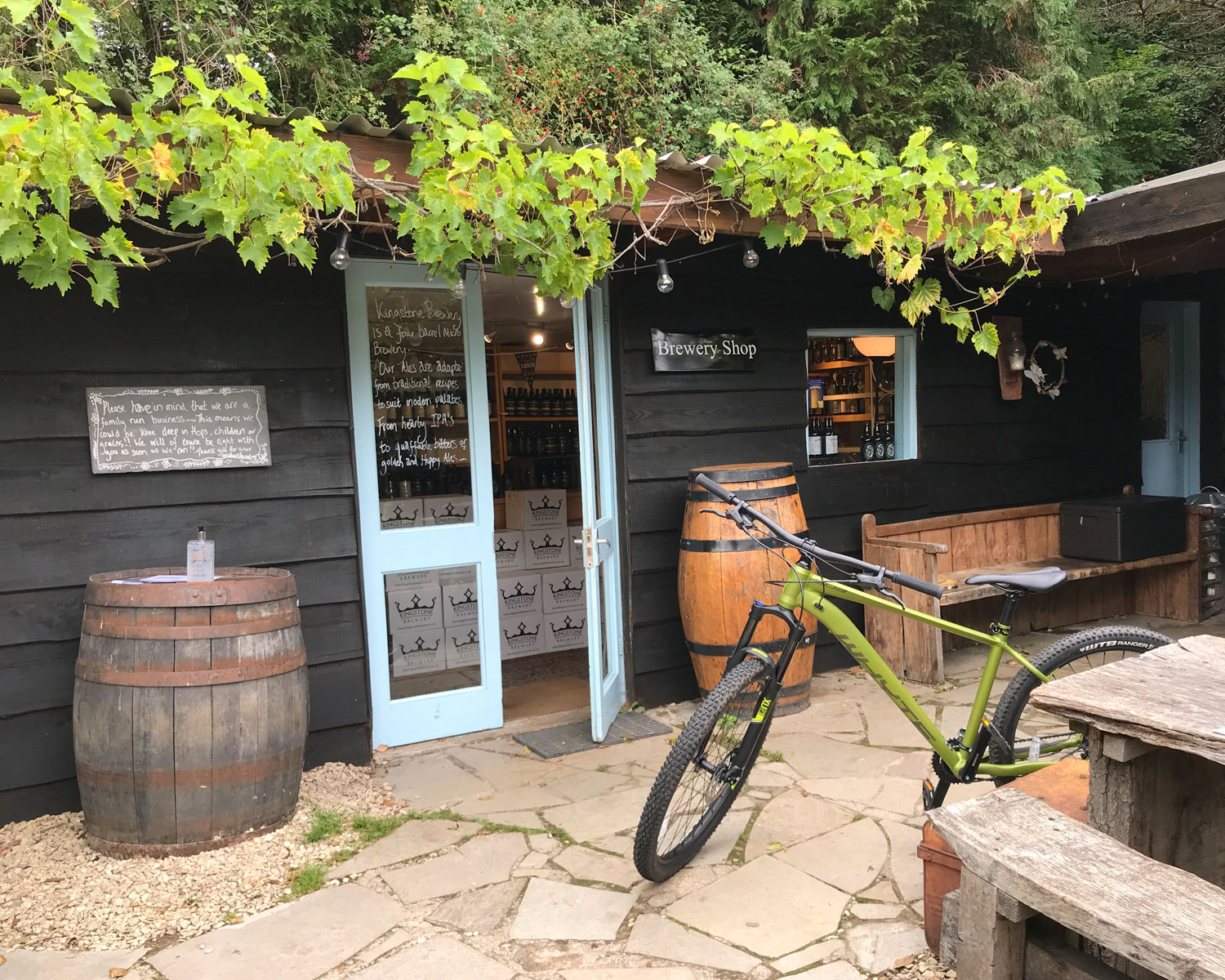
Also based at the same location is The Wye Valley Experience . It offers mountain bike hire and canoe experiences in the Wye Valley. They also have e-bikes for those who want to have all the fun but none of the pain!
Tintern Old Station
After having visited the Wye Valley Sculpture Garden, Parva Farm Vineyard and Kingstone Brewery, which are all clustered together, I was ready for a spot of lunch. I found a great place just across the road at Tintern Old Station tearoom .
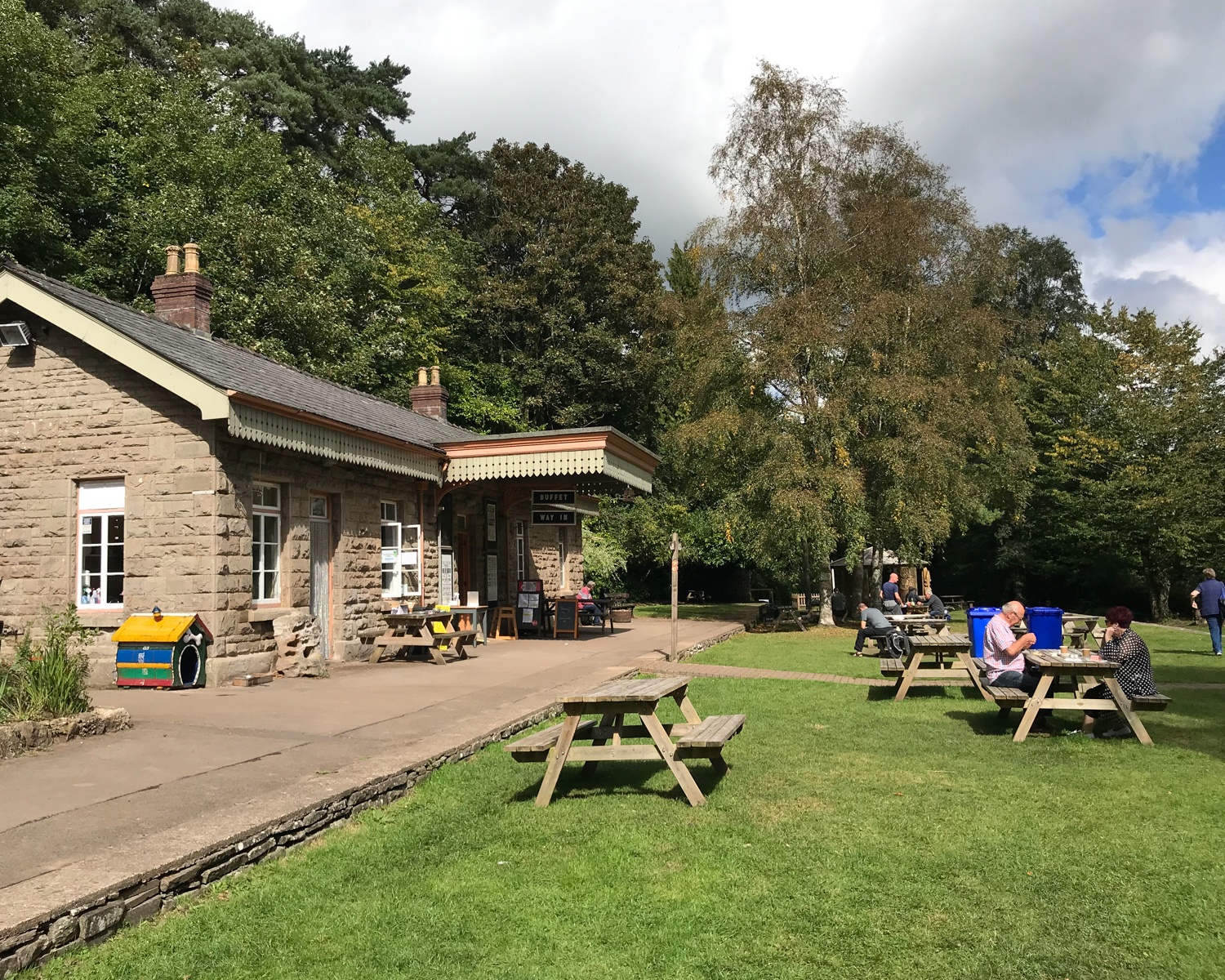
As the name suggests, the tearoom is located in what was once the Victorian station for Tintern. The line running from Chepstow to Monmouth closed in 1959.
This 10 acre site is now a park and visitor attraction. You’ll find an old signal box and railway carriages as well as wooden sculptures of legendary figures and a children’s play area.
This is a lovely place to stop if you are walking on the riverside path from Tintern. Enjoy a barista style coffee, sandwiches, cakes and light meals at lunchtime until mid afternoon.
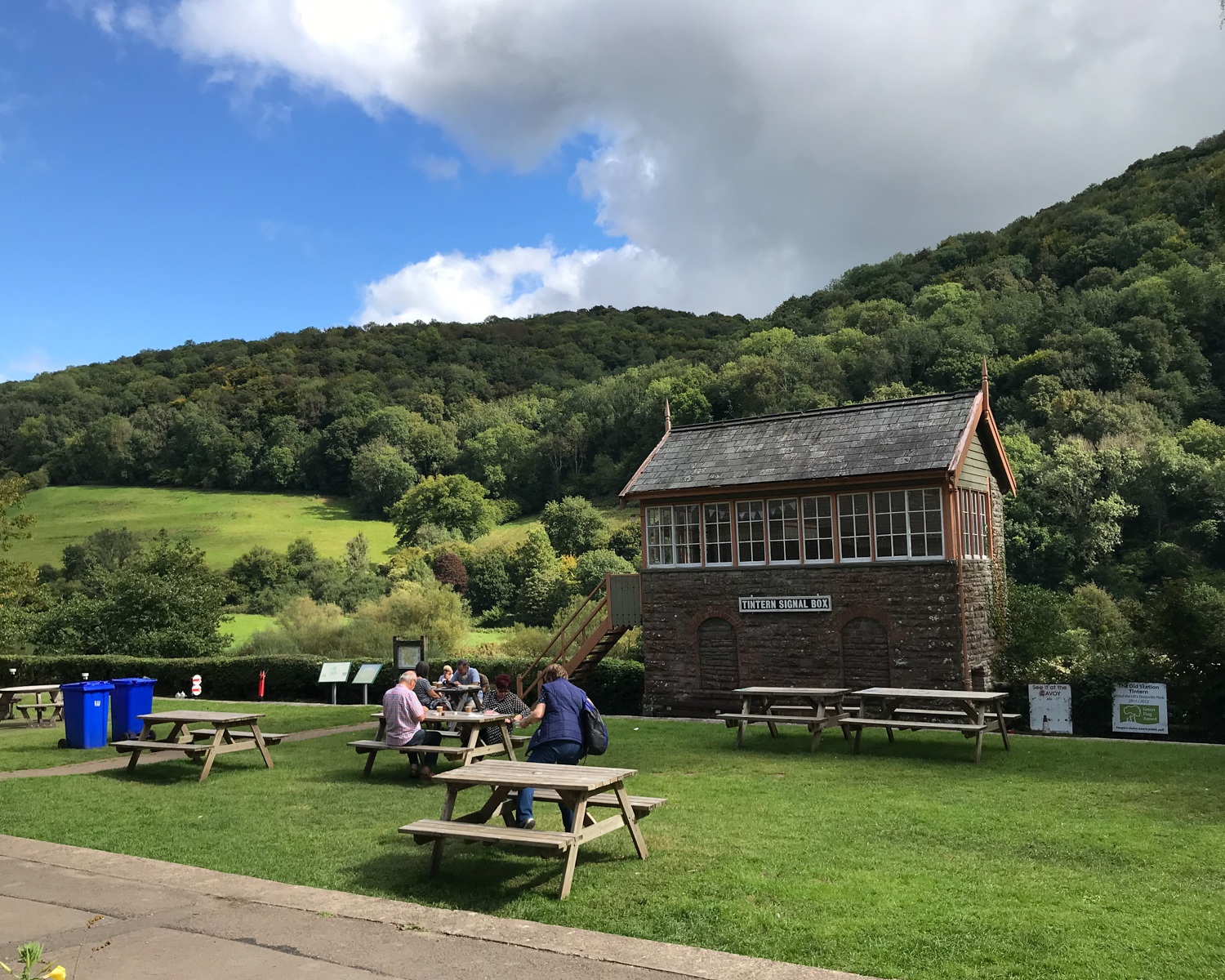
Where to eat in Tintern
In addition to the places mentioned you might buy local beverages such as the Parva Farm Vineyard and Kingstone Brewery. There are numerous nice pubs in Tintern where you can stop for lunch or an evening meal.
Look out for The Wild Hare (formerly The Royal George) where there’s plenty of parking, The Rose and Crown or The Anchor Inn if you’re looking for traditional pub fare. Also worth a stop is The Filling Station , a small cafe near Tintern Abbey which is popular with walkers and cyclists.
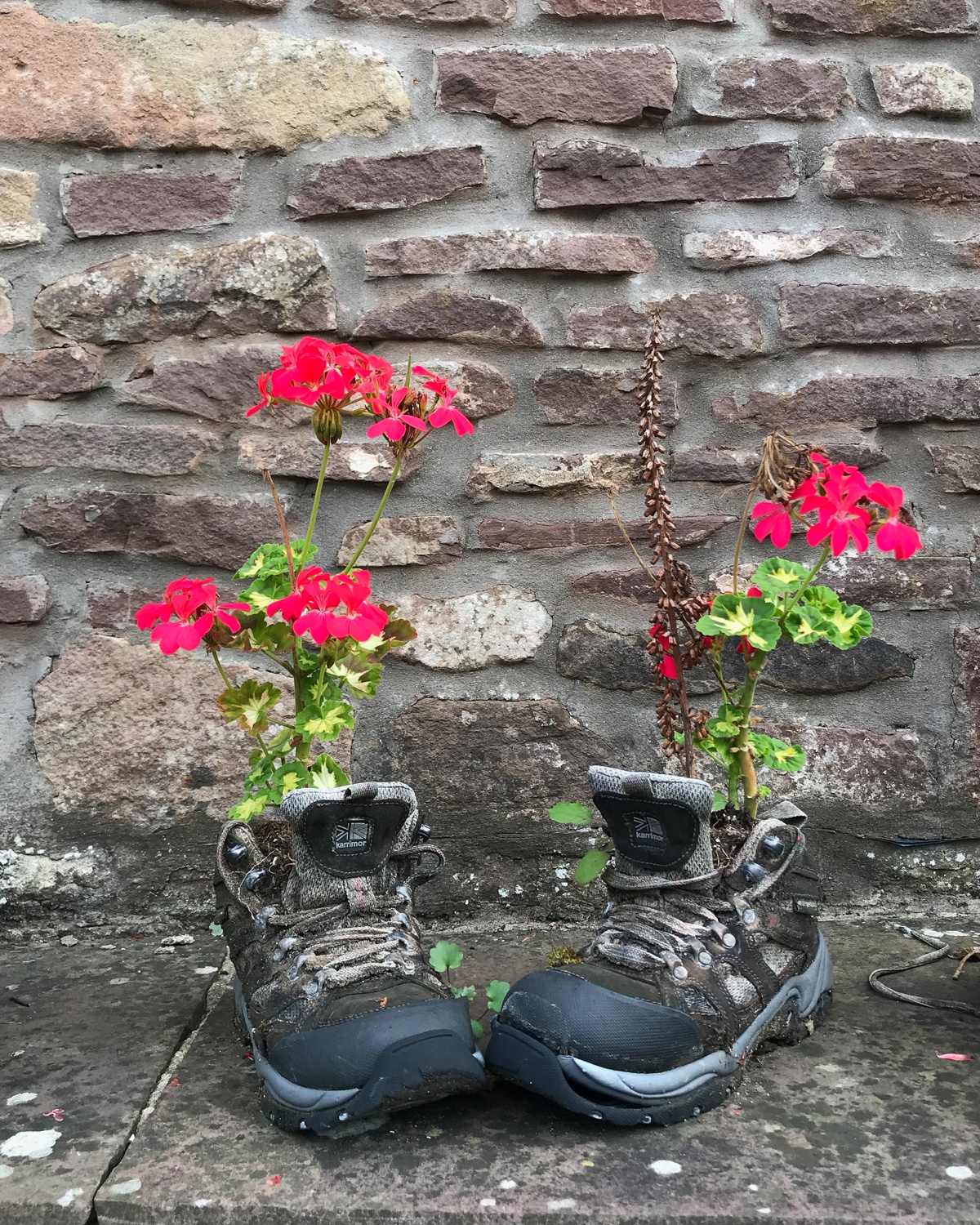
Where to stay in Tintern
While I didn’t stay overnight in Tintern, there are a few places in the village or nearby that looked very nice.
The Wild Hare – This country inn in the heart of Tintern has 14 stylishly decorated bedrooms, 4 of which are dog-friendly (formerly The Royal George.)
The Chicken Shed – This 4 bedroom cabin just outside Tintern sleeps 8 people and has won awards for its architecture. It features floor to ceiling windows, polished concrete floors and modern design with cosy comforts like a wood burning stove.
Hidden Valley Yurts – For those who love glamping, this meadow site just outside Tintern has 5 Mongolian Yurts and The Lake House, a 2 bedroom self catering cottage.
Penterry Holidays – Orchard Cottage is a 1 bedroom stone cottage. Anne’s Retreat is an en suite 1 bedroom converted shepherd’s hut, either of which would make a cosy retreat for couples.
The Hop Garden – Five wooden cabins and a converted horsebox with bathroom, kitchen and wood burning stoves. A feeling of glamping in the woods, but with all the comforts of home.
Take a look at more hotels in Tintern and the many B&Bs available in Tintern with AirBnB
Chepstow was the final stop on my Wye Valley tour. Here the River Wye widens out to meet the Severn Estuary and flows into the Bristol Channel.
Where the river appeared bright and sparkling further up stream, by Chepstow it becomes tidal, looking flat and muddy. It makes lazy curves as it makes its way towards the sea.
Things to do in Chepstow
The most popular of things to do in Chepstow is a visit to the castle that sits high on a cliff, guarding the entrance to the town. Chepstow Castle was built above the Wye, on a strategic curve of the river where it was easy to control the trade passing up the Wye as far as Hereford.
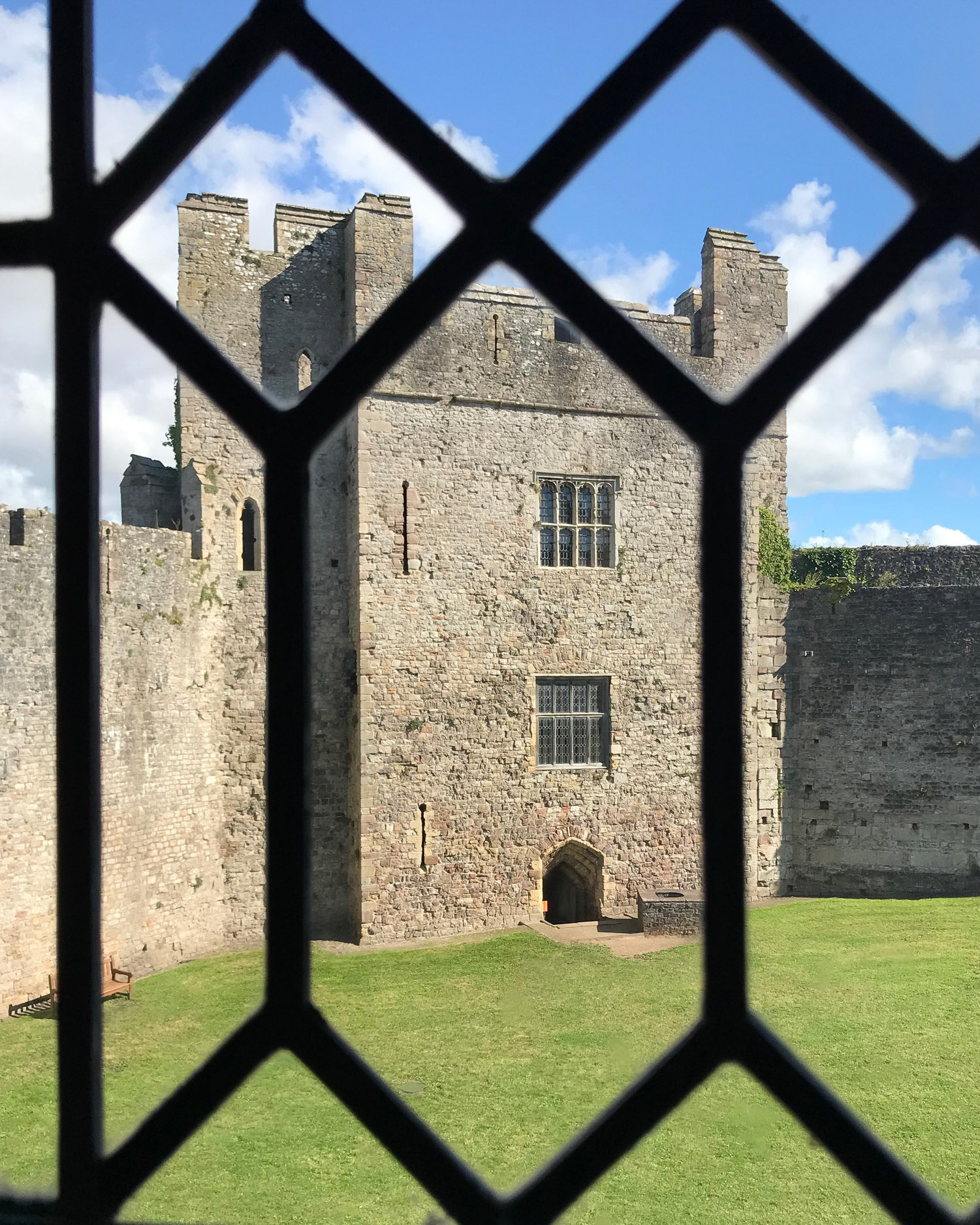
On one side all windows of the castle look towards the river. Gunports in the ramparts on the other side could be trained to resist any attack coming from the side of the town.
The castle was largely built in the 12th century by William Marshall, a talented knight who attracted royal patronage. He became a friend and loyal supporter of King Henry II and his son Richard the Lionheart. This was clearly a castle that was built to mean business!
More info: Chepstow Castle website with CADW | Car Park in front of the car park (charges) | Public toilet in the car park | There is no cafe at the castle but lots of places to eat on the riverside or a short walk away in the town.
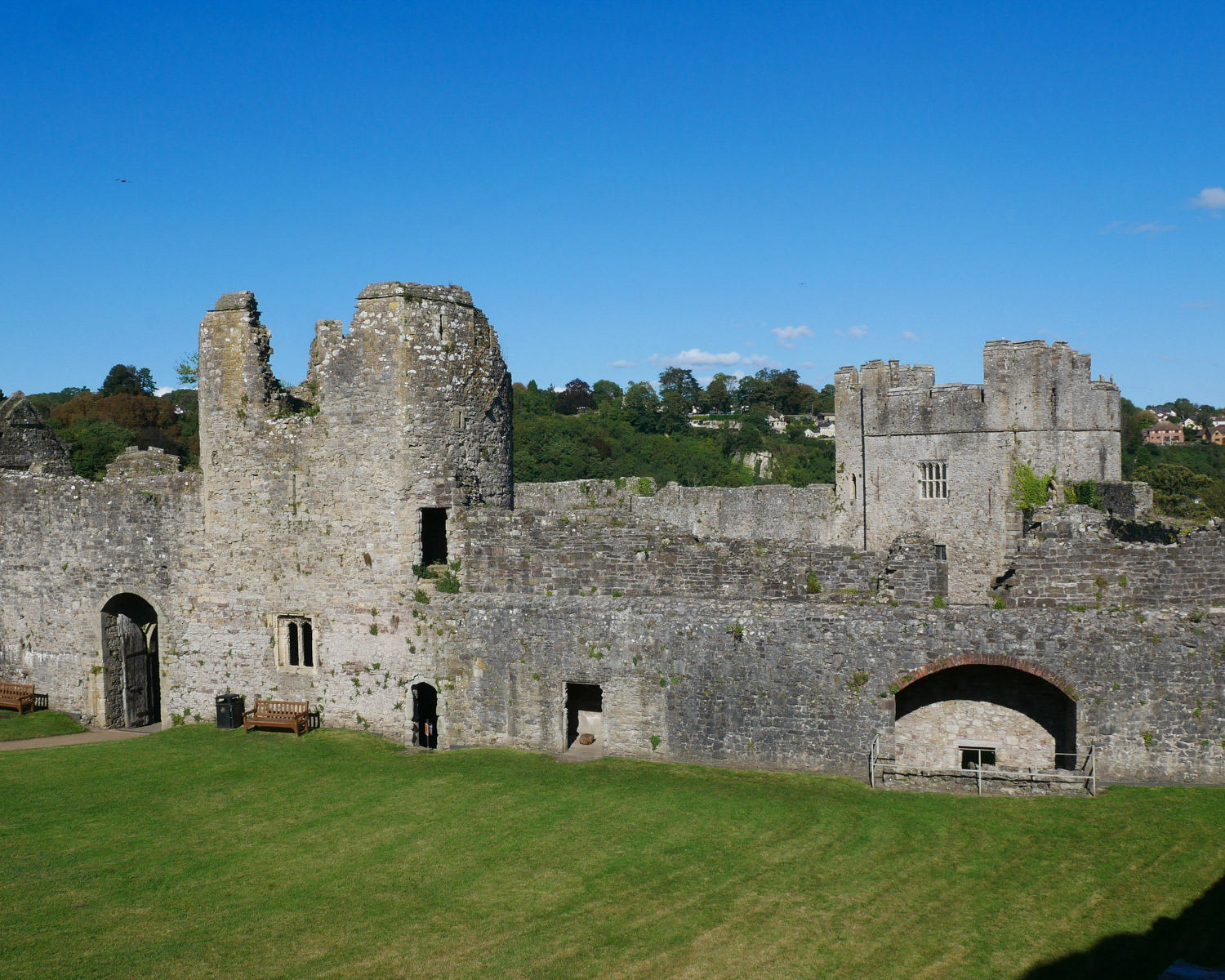
Opposite the castle car park is the Castle Museum which was closed when I visited. It houses a collection of engravings, prints and paintings from the artists who were inspired by the Wye Tour.
The Old Wye Bridge
From here, it’s pleasant to continue down Bridge Street to the pretty iron work of the Old Wye Bridge which was built in 1816 to replace older wooden bridges. This was the main crossing point of the river at Chepstow until Brunel’s railway bridge was built in the 1850s.
The graceful curves of the Old Wye Bridge are underpinned by sturdy stone pillars that need to withstand the high tidal range and strong currents of the River Wye at this point.
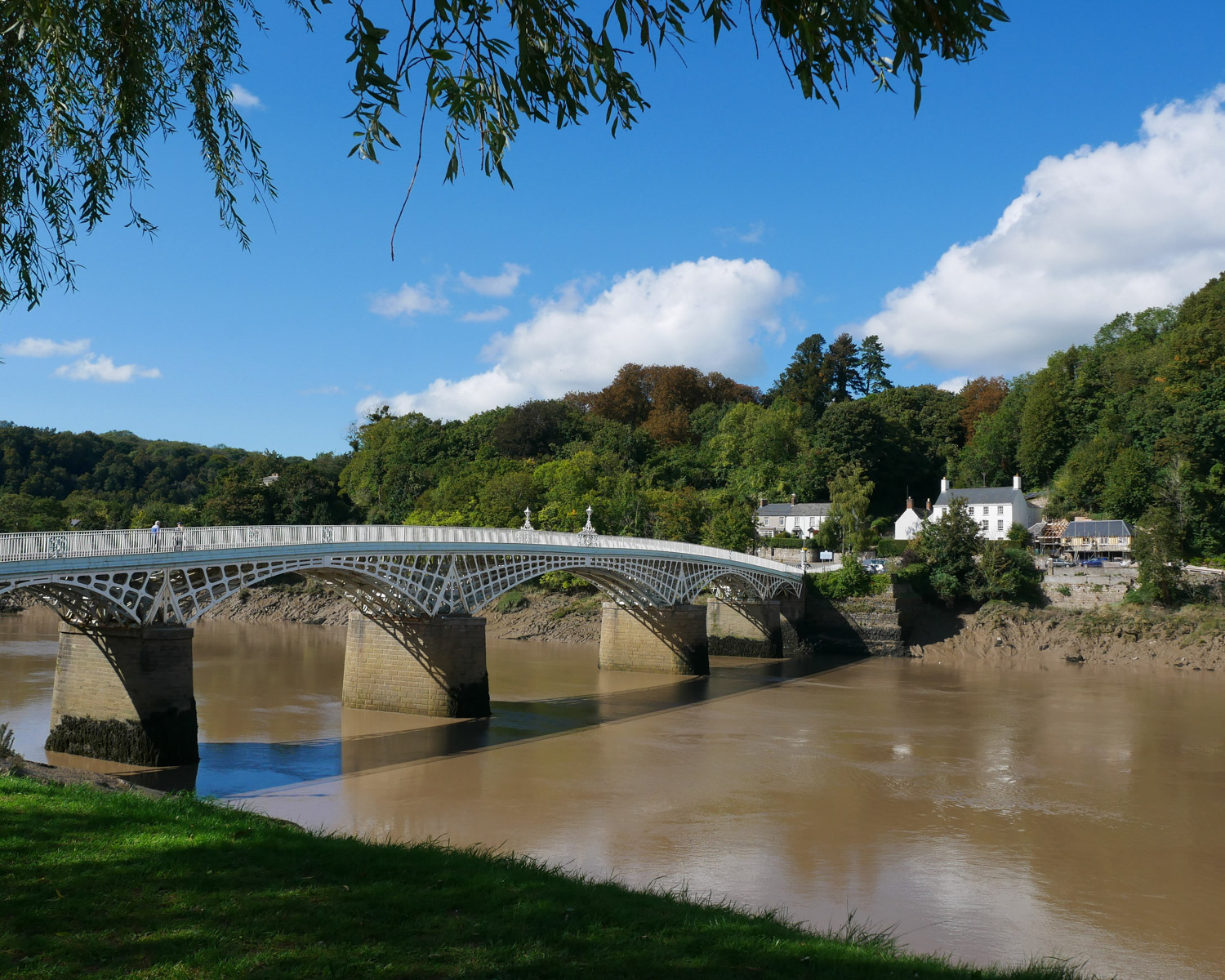
Continuing past the bridge is a pretty stretch of river with a couple of pubs where you may like to pause for a drink and a bite to eat. Try the Riverside Winebar and the Boat Inn , both of which have outside seating.
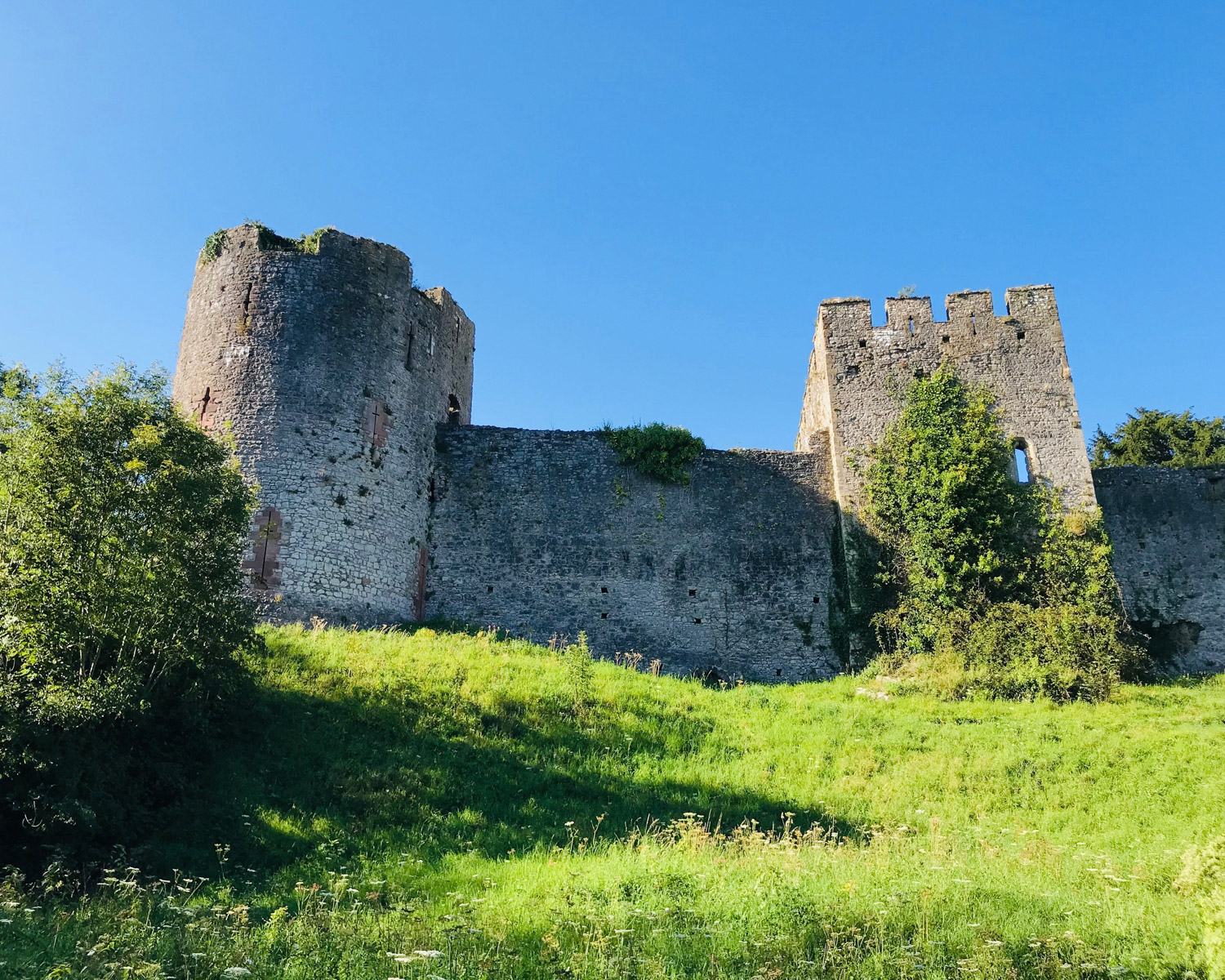
As an alternative you could skirt around the grassy banks below the castle, the stone walls rising grey above you on the path that takes you to the top of the town. Then walk back through the 16th century town gate. This was the place in the medieval city walls where people might pay a toll as they came to market or trade in Chepstow.
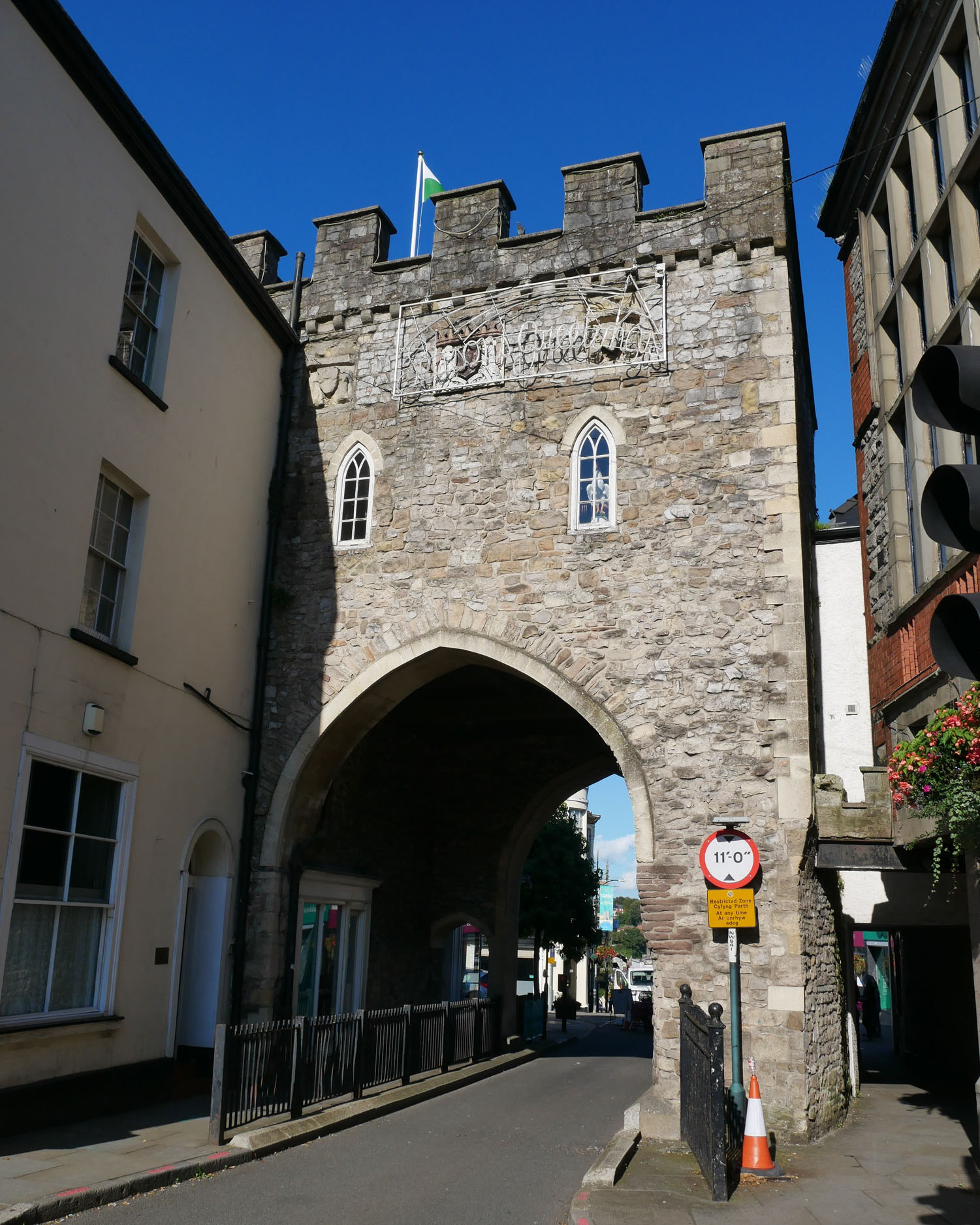
The high street that leads down from here is full of the normal shops. There are some pretty streets in the lower part of town, where elegant Georgian houses mingle with much older cottages.
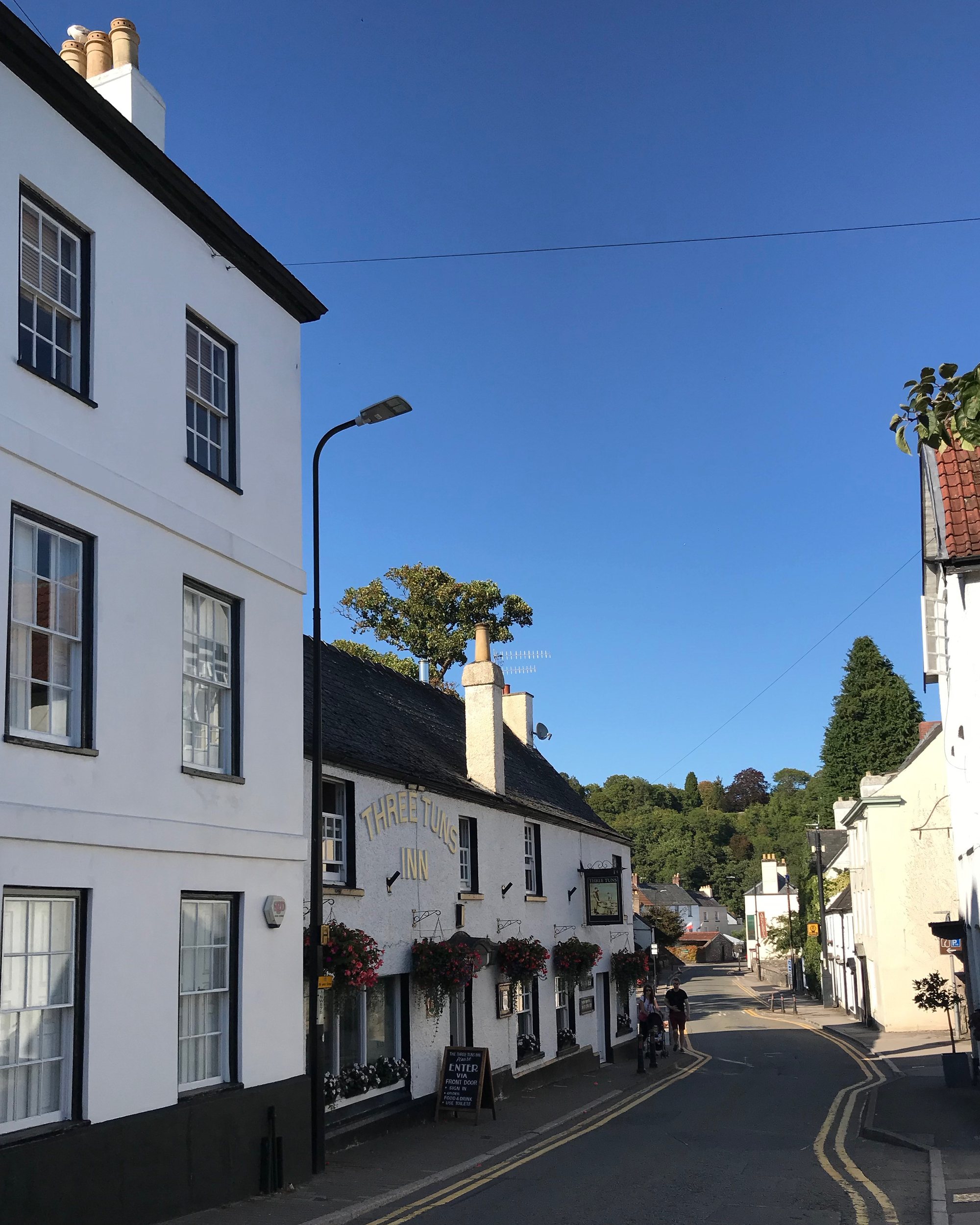
Where to stay in Chepstow
18th century travellers would traditionally end their Wye Tour at The Beaufort , a 16th century coaching inn in the heart of Chepstow. If you want somewhere a little more luxurious, Delta Hotels by Marriott St Pierre is set in a 14th century manor house on the edge of Chepstow.
Take a look at more hotels in Chepstow and the many B&Bs available in Chepstow with AirBnB.
Eagle’s Nest in the Wye Valley
For one final view over the Wye Valley I drove up to the Eagle’s Nest at Wyndcliff, close to the village of St Arvans just north of Chepstow. One of the popular walks for travellers on the Wye Tour was through the nearby Piercefield Estate. You can follow using the Picturesque Piercefield Walk leaflet you can download here .
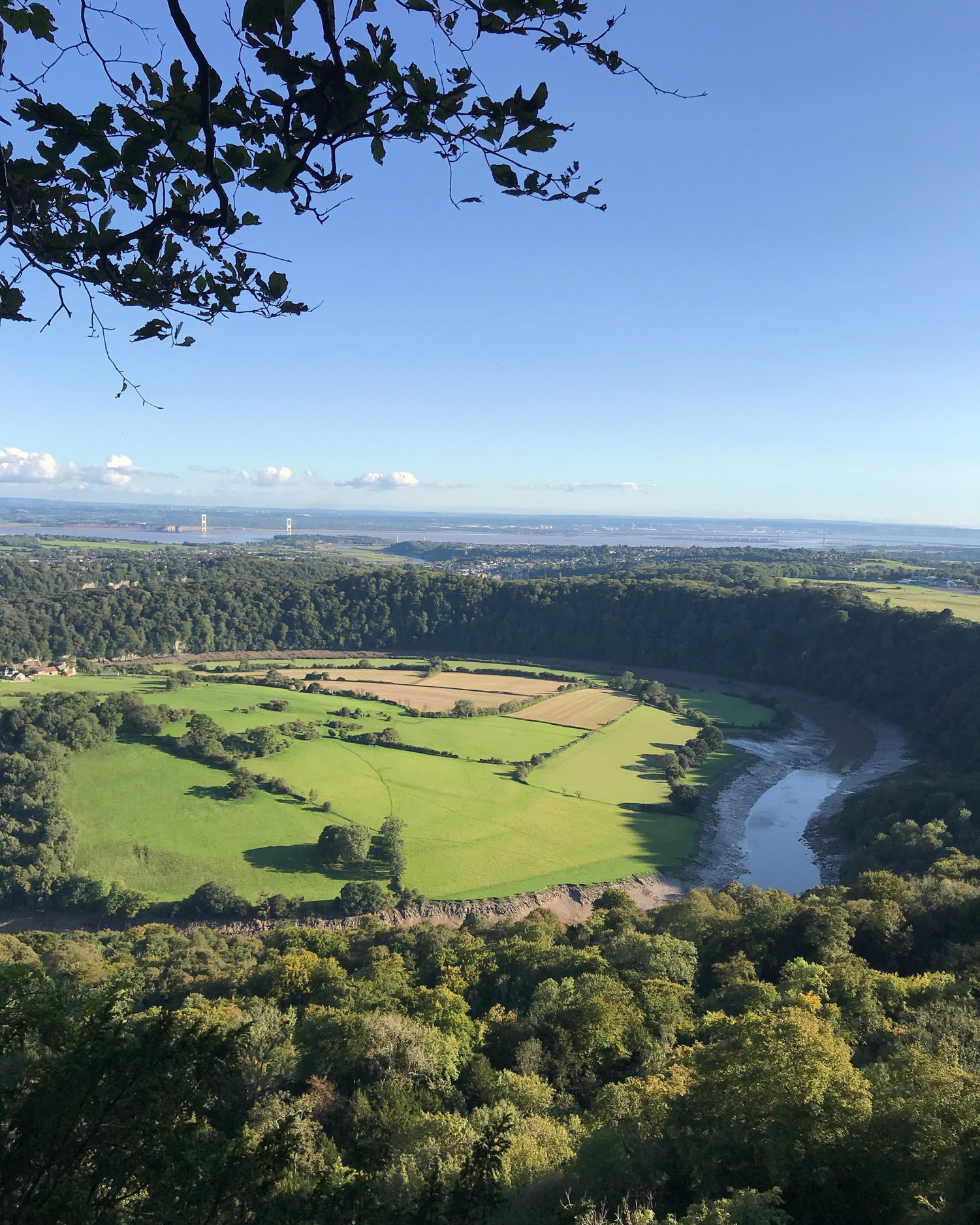
The walk starts at Chepstow, taking you past Piercefield House and some of the picturesque viewpoints. There’s names like the Giant’s Cave, Druid’s Temple and Lover’s Leap. Next you’ll climbing steeply up to the Lower Wyncliff and then the upper Wyndcliff, culminating in the Eagle’s Nest viewpoint.
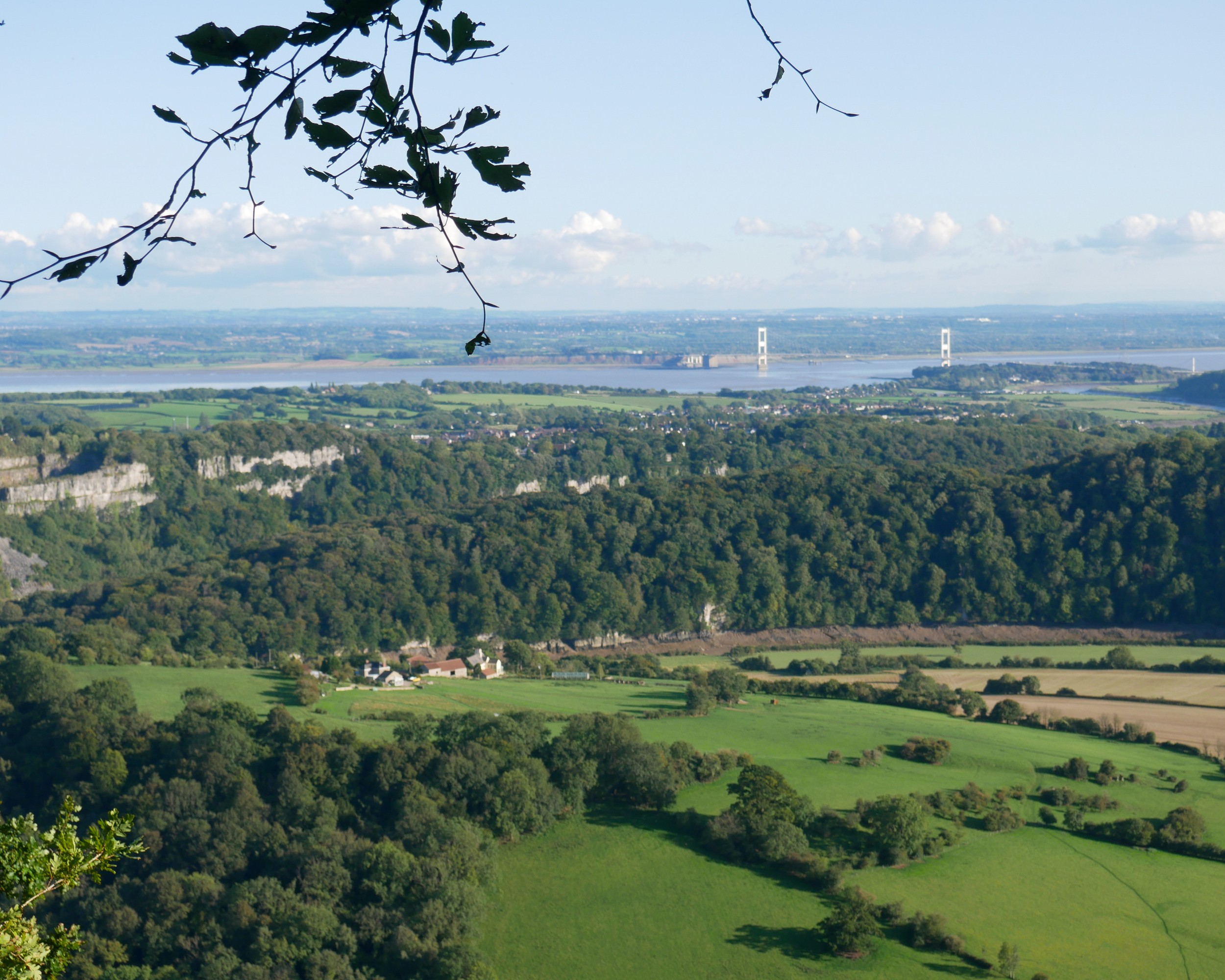
I didn’t have time for the whole Piercefield walk which would take a full day. Instead I just drove up to the Upper Wyndcliff car park. Then I walked for around 15 minutes on the path through the woods to reach the Eagle’s Nest.
Expansive view over the valley
It’s certainly well worth the effort as on a clear day you can see right over the Wye Valley to the Severn Estuary. See the two Severn bridges in the distance and the Wye river curving through open fields and woodland below you.
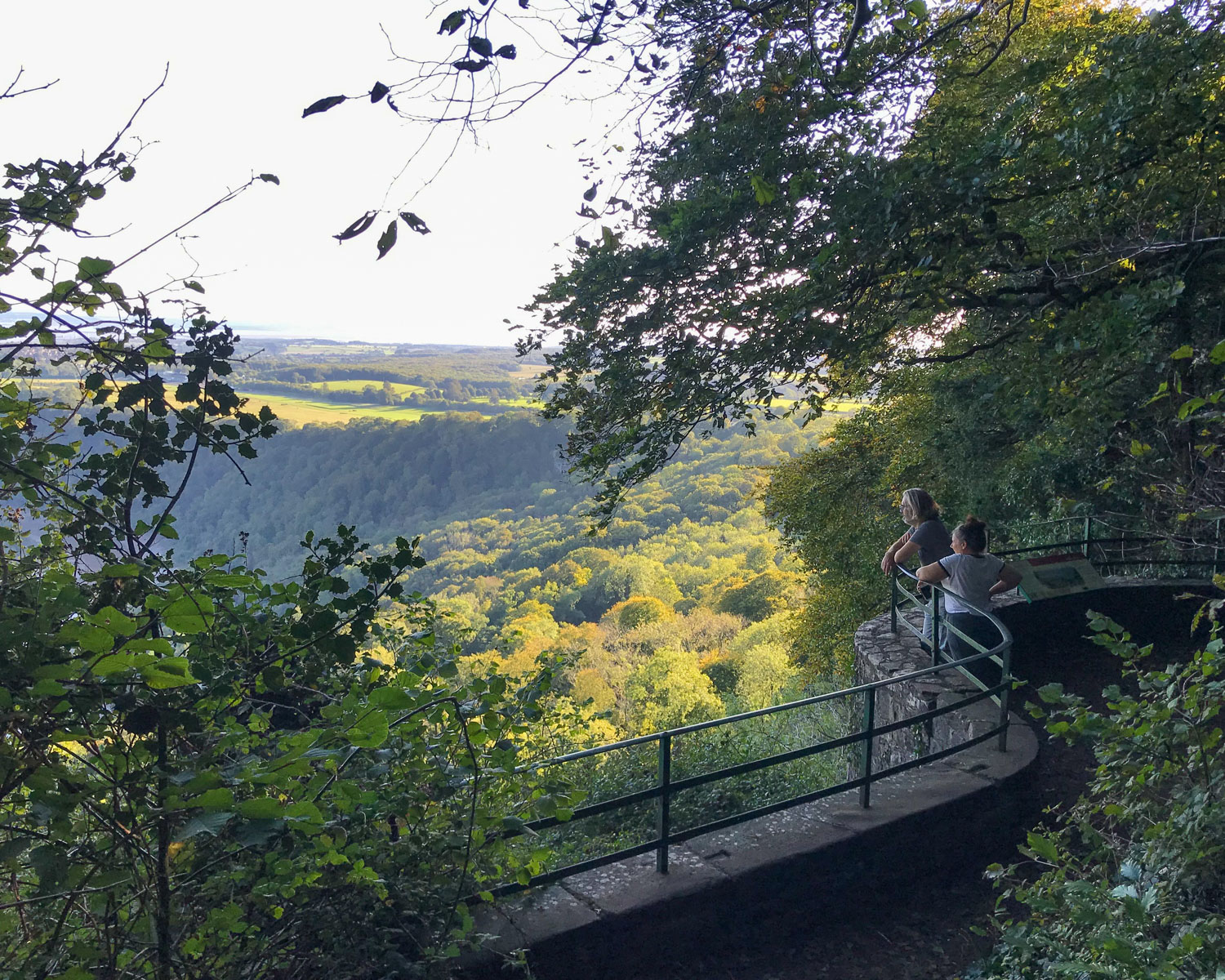
It made a wonderful end to my two day tour of the Wye Valley which certainly turned out to be as picturesque as it promised.
For more information to plan your Wye Valley Tour, check out the following websites; Visit Monmouthshire | Forest of Dean and Wye Valley Tourism | More ideas that are just @Overthebridgetowales | Wye Valley Area of Outstanding Natural Beauty | Gilpin 2020 website for the Picturesque Wye Tour
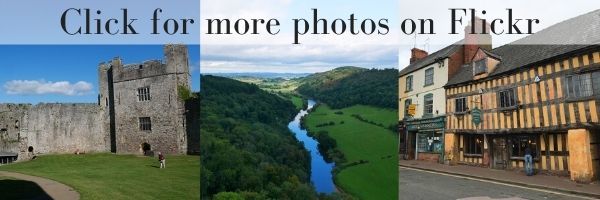
You may also enjoy 10 things to do in Cheltenham in just one day 25 fun things to do in Bristol with your friends
Read about 10 things to do in The Forest of Dean which is very close to the Wye Valley and a magnet for foodies and outdoor lovers.
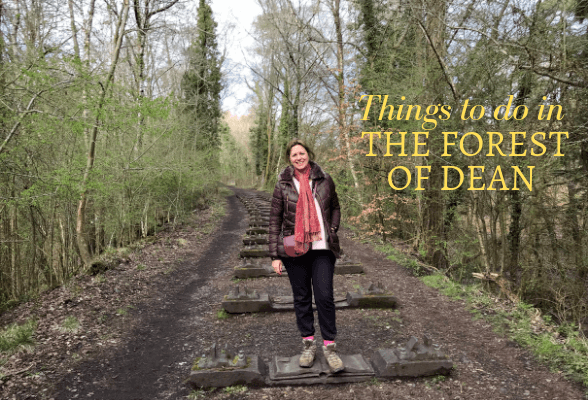
Map of the Wye Valley
You can find all the places mentioned on this handy Google map of the Wye Valley below.
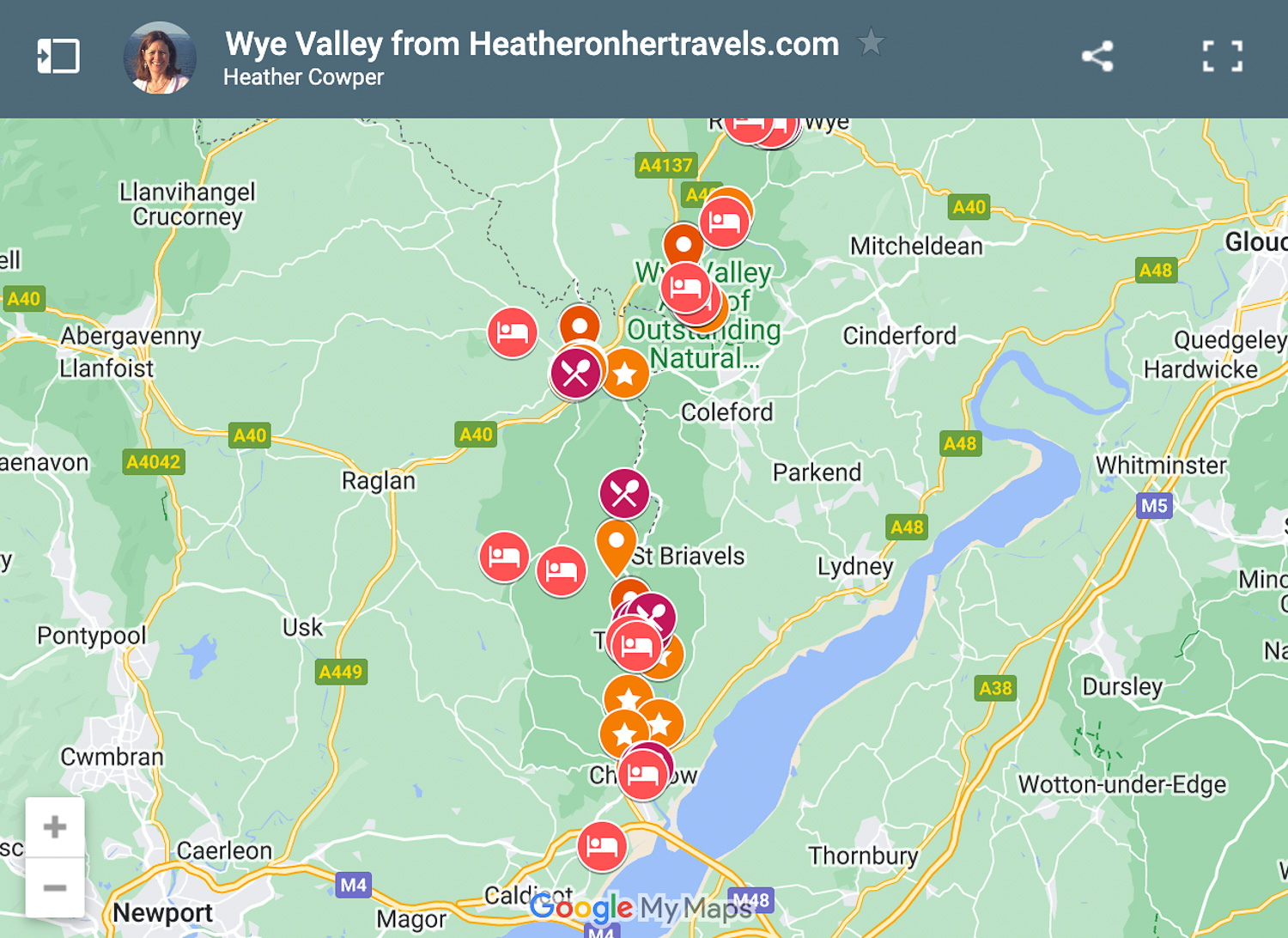
Getting to the Wye Valley
Wye Valley is situated on the border between England and Wales in the west of the United Kingdom. The section described from Ross on Wye to Symonds Yat lies in the English county of Herefordshire.
And, the section from Monmouth to Chepstow lies in the Welsh country of Monmouthshire, with the river itself often forming the border between England and Wales.
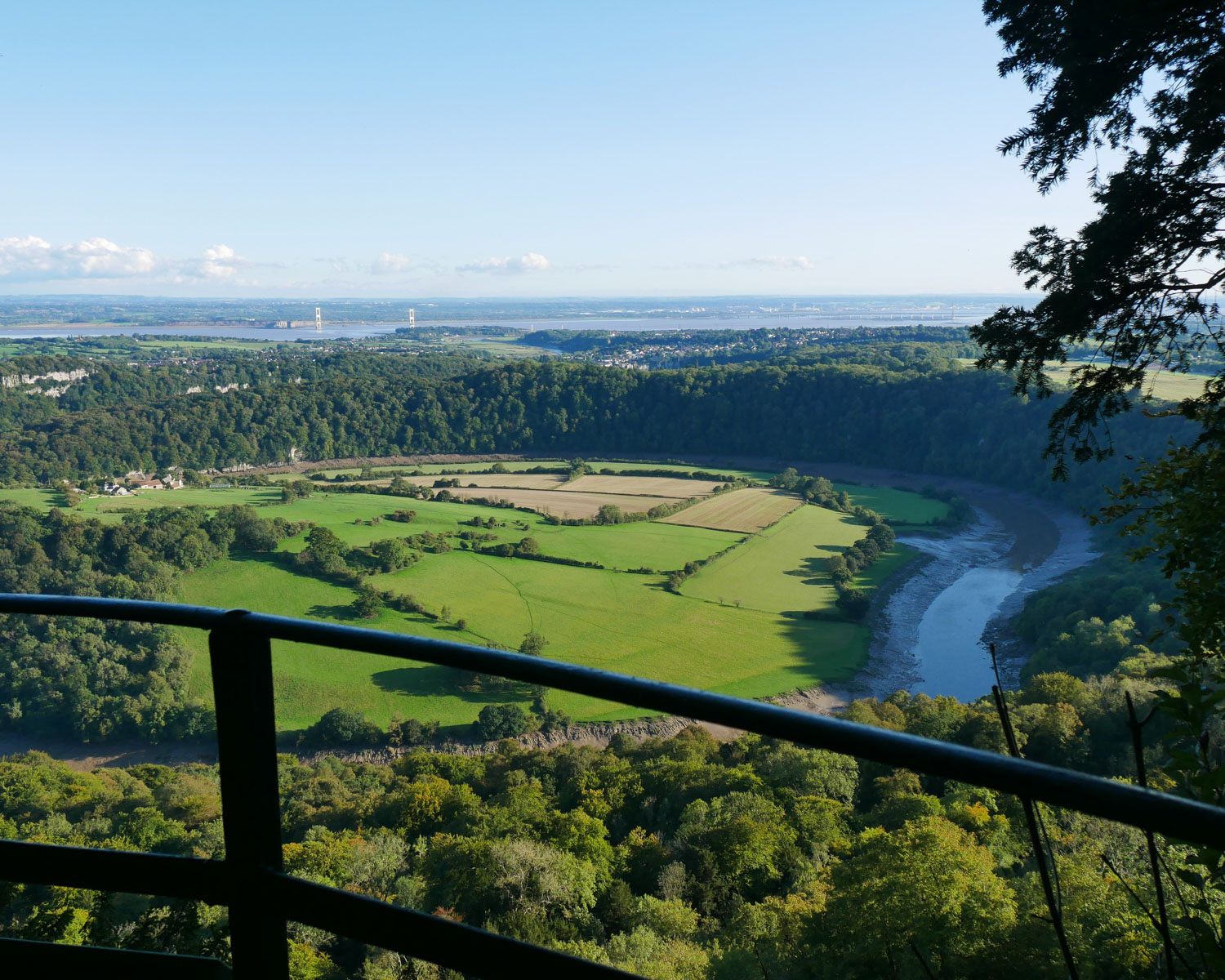
Visit by Car
Arriving from London and the south of England, take the M4 motorway and cross the Severn bridge via the M48 to reach Chepstow. From the north you will arrive via the M5 and M50 to reach Ross on Wye.
The A466 is the most picturesque route through the Wye Valley as it follows the course of the river from Chepstow to Monmouth. North of Monmouth the A40 is the fastest though not the most pretty route.
Arrive by Plane
For international visitors, a 1 or 2 day visit to the Wye Valley could easily be added to any tour of Wales, the Cotswolds or the West of England. In this case the most convenient international airports are London Heathrow (2 hrs to Chepstow).
Or, Bristol (45 mins to Chepstow) Cardiff (1 hr to Chepstow or Birmingham (1 hr 15 mins to Ross on Wye). At all these airports it will be possible to hire a car to visit the Wye Valley, which is the most convenient means of transport.
By Train and Bus
If travelling by train, there are stations at Chepstow and Gloucester but no trains run through the Wye Valley itself. Intercity coach services are also available from National Express .
Local buses run through the Wye valley with further information available for Monmouthshire buses and Herefordshire buses . However if travelling by public transport you may need to allow more time and plan your routes according to the bus timetables, combined with walking or cycling.
Guided tours: If you do not drive and only have limited time available, you may wish to engage one of the local tour guides who can drive you or make your transport arrangements.
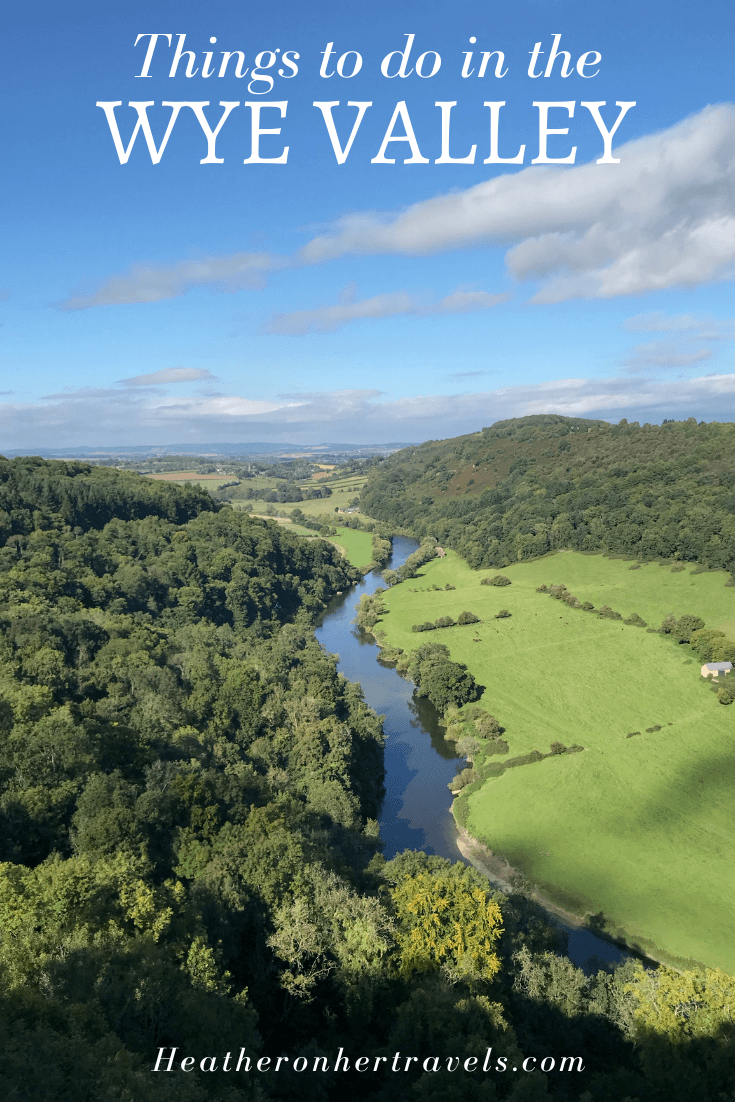
Some of the tickets to places I visited were provided* by Monmouthshire Tourism as part of the @Overthebridgetowales project.
* More info on my policies page
This article is originally published at Heatheronhertravels.com
Click to subscribe to our monthly newsletter, news and reader offers

Bryson Fico
Monday 29th of March 2021
Very descriptive blog. Your photographs showcase the Wye Valley very well with the castles and quaint shops. The riverside walk and the Kingstone Brewery are on our list of stops.
Heather Cowper
Sunday 23rd of May 2021
@Bryson Thanks, the Wye Valley has so many beautiful stops!
Ankit Acharya
Monday 1st of February 2021
Beautiful, breadth taking, seriously I have no more words to describe how beautiful is this places. This post is encouraged me to explore this places and I am now saving money to travel this places. Thanks for sharing such an amazing pictures and for your guidance.
Monday 15th of February 2021
@Ankit So pleased you enjoyed the article

Exploring the Wye Valley could not be easier or more exciting, whether you prefer to explore the area on foot, by car, bicycle or canoe. The Wye valley walk which meanders along the river Wye for 52 miles, takes in some of the most spectacular views, and is a great way to discover the area.
The Woodlands of the Wye Valley - recognised as one of the most beautiful woodlands in Britain, with most of its 4,300 hectares lying within an Area of Outstanding Natural Beauty.These woodlands are predominantly broadleaf with a mix of mature oak and beech as well as other species such as ash, cherry and small leafed lime. The historic Wye Valley Walk passes through Tintern and Monmouth . There are several view points from Upper Wyndcliffe near Chepstow , to Cuckoo Wood north of Llandogo, which offer spectacular views across the lower Valley with the Bristol Channel and the old Severn Bridge in the background.
The River Wye travels through the following towns and villages:-
Tour and Travel Guide for The Wye Valley
Royal Forest of Dean Info 110 High Street Broadway Worcestershire England UK WR12 7AJ
Manager, Richard Pinder, E-Mail: [email protected]

Contact Us About Us Media and Press Advertising Opportunities News and Helpful Information for Advertisers RoyalForestofDean.Info
Copyright © 2014 - 2019 All rights reserved
Get a FREE Essential Travel Apps and Websites Checklist!

Things to Do in the Wye Valley – The Perfect One Day Itinerary
Are you touring around Herefordshire and perhaps thinking about visiting the Wye Valley? If so, then this blog post will show you some amazing things to do in the Wye Valley if you only have one day.
This one day itinerary includes visiting some postcard perfect market towns, the birthplace of British tourism, England’s best preserved medieval castle and of course some walking routes to the best viewpoints in the Wye Valley.
If you’d like to see what we got up to in the Wye Valley then make sure to watch our YouTube video by clicking here . You can also check out our Herefordshire Playlist for more adventures.
Disclosure: This post may contain affiliate links, which means we may receive a small commission if you click a link and purchase something. Clicking these links won’t cost you anything, but it will help us to keep this site up and running! Learn more about our affiliate policy.
Table of Contents
All You Need to Know About the Wye Valley
Straddling the English-Welsh border, the Wye Valley is considered one of the finest lowland landscapes in Britain. In 1971 it was designated as an Area of Outstanding Natural Beauty (AONB). AONBs are areas that are both beautiful and important, therefore, effort are being made to conserve and enhance their beauty.
The Wye Valley for example has about 27 special qualities, such as limestone gorges, native woodlands, impressive geology, a rich history and wildlife that made it possible for it to be considered as an AONB.
The Wye Valley covers parts of Herefordshire, Gloucestershire and Monmouthshire. Interestingly, the only town located within the Wye Valley is Ross-on-Wye. The AONB is also considered the birthplace of British tourism.
Did you know? – Herefordshire is actually home to two AONBs. The other one is called Malvern Hill and is located to the east of the county.
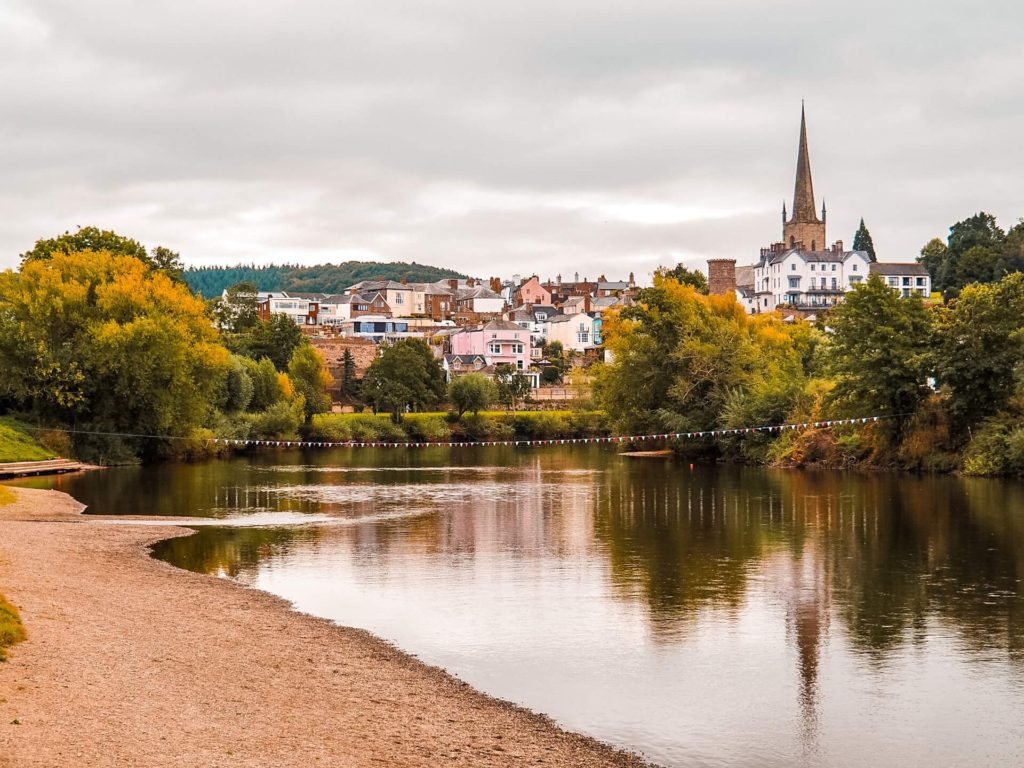
Things to Do in the Wye Valley in One Day
The Wye Valley is definitely filled with countless things to do. Below are four spots within the AONB that you can easily visit if you only have one day. I think this list contains a great mix of towns, outdoor activities and a bit of historical interest.
Please Note – In case you cross the border into Wales, make sure to check the country’s current restriction rules, which might differ from the rules in England.
1. Explore Ross-on-Wye
The beautiful market town of Ross-on-Wye is located to the south-east of Hereford. If you’re visiting by car, the A49 takes you to it from Hereford. You can also take Bus 33 from Hereford. The bus journey takes just under an hour.
Did you know? – This postcard perfect town promotes itself as the birthplace of British tourism. Apparently back in 1745 the rector started taking some of his friends on boat trips along the River Wye which were the first to be taken purely for leisure in the outdoors.
Later, the first illustrated tour guide book was published which was based on a trip around the Wye Valley. The book started to inspire people to visit this area and was soon followed by regular excursions which created more tour guides and before you knew it Ross-on-Wye became an established tourist destination.
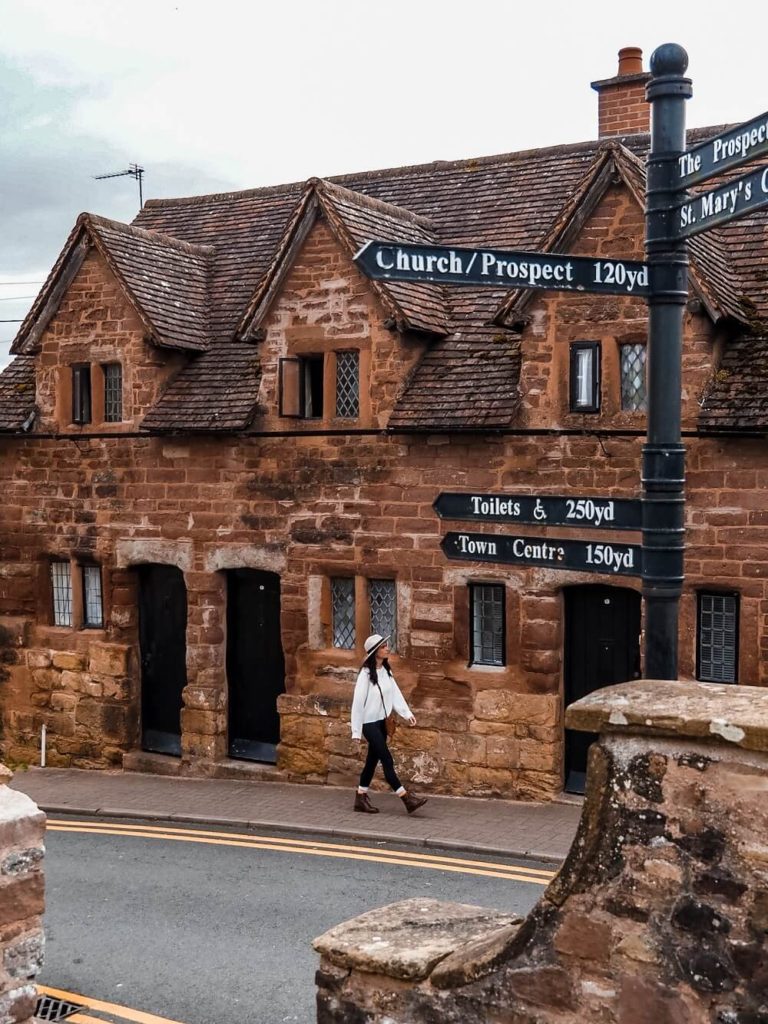
Things Not to Miss in Ross-on-Wye
- St Mary’s Church – The most notable landmark in Ross-on-Wye is its 700-year-old parish church. It has several tombs and its spire is visible from miles away.
- Plague Cross – Located at St Mary’s churchyard is the Plague Cross. It was erected in 1637 as a memorial to 315 residents who died of the plague that year. The victims were buried in a plague pit, at night and without coffins.
- The Market House – The red sandstone house is located in the city centre. It was built between 1650 and 1654. If you visit on either Thursday or Saturday you can experience the market.
- River Walk – The best part of the town is definitely the River Walk that leads you to that iconic overview of Ross-on-Wye. To reach it, head towards the Thomas Blake Memorial Garden, cross the car park and follow the footpath to your right towards Ross Rowing Club. From there, walk a bit further towards the A40. Turn around and you’ll be able to see the perfect view of Ross-on-Wye.
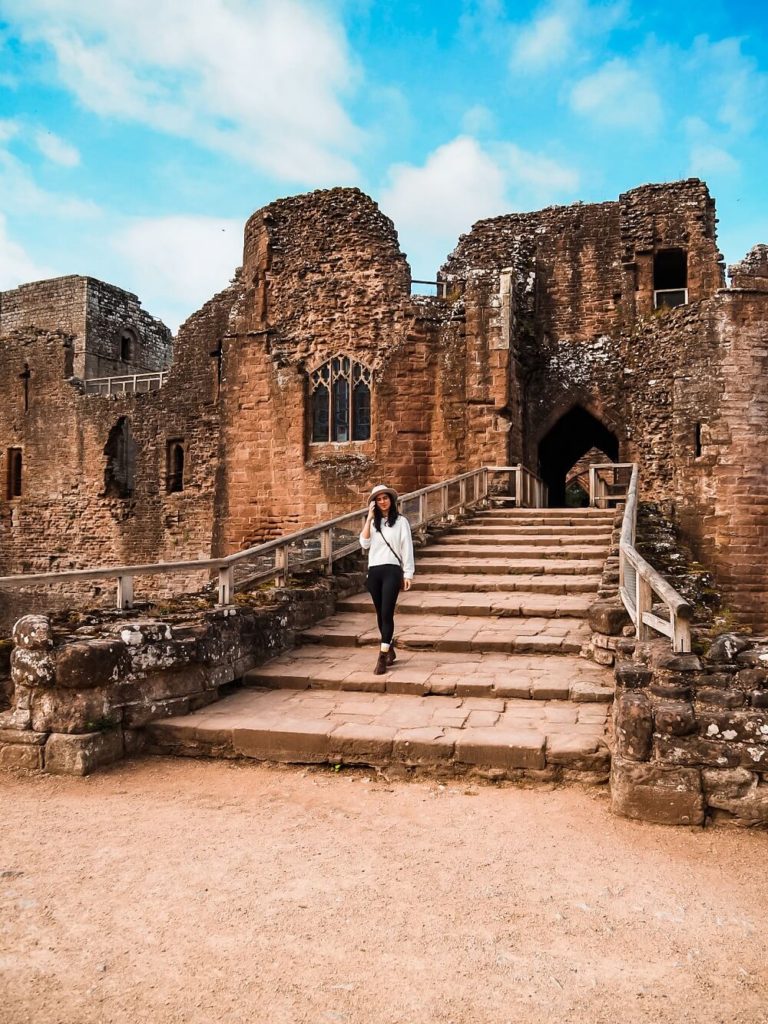
2. Visit Goodrich Castle
After exploring Ross-on-Wye, head over to Goodrich Castle, located just a few miles to the south-west of the town. The ruins of the Norman medieval castle are considered some of the best preserved medieval castle ruins in England. Standing on a rocky outcrop it was initially built as an earth and wooden fortification in the 11th century.
Later, in the 12th century, the castle was rebuilt with a stone keep. Then it was expanded in the 13th century with more luxurious living areas.
Today the castle is managed by English Heritage and also classed as a Grade I listed building and as a Scheduled Monument.
How to get to Goodrich Castle? – If you’re arriving by car, you can either take the A40 or the B4234 to Goodrich. Goodrich Castle has a dedicated car park (Post Code: HR9 6HY), where you can park all day for £3.
You can also take Bus 34 from Ross-on-Wye. The bus journey takes about 15-20 minutes, and you’ll need to walk another 5-10 minutes to the castle.
Entry Fee – Admission fee to the castle is £9.90/£6 for adults/children respectively. However, if you’re an English Heritage member , you can visit the castle and park there free of charge.
Facilities – Goodrich Castle has a café offering hot and cold drinks, lunches and cakes. It also has toilet facilities.
Filled with excellent views, a ton of history and of course some ghost stories, visiting Goodrich Castle is definitely one of many great things to do in the Wye Valley.
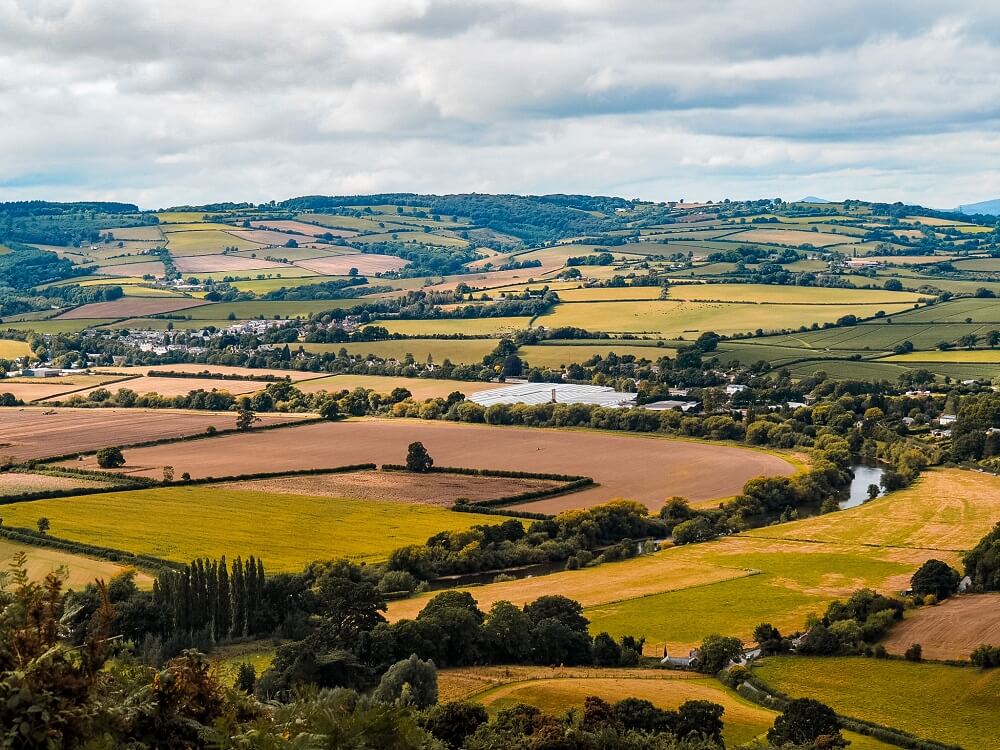
3. Walk Up to Coppett Hill
From Goodrich Castle I highly recommend taking a walk up to Coppett Hill. The hill has been a local nature reserve since 2000, and is apparently one of the largest within Herefordshire.
How to get to Coppett Hill? – The hill is located just to the south of Goodrich. From the castle, walk down along Castle Lane and turn left. Follow this road until it splits. It will be gradually uphill, so just take your time. At the crossroads, stay left for a bit, then take the footpath on your right. Follow this path until you reach the trig point marking the top of Coppett Hill.
Coppett Hill definitely provides you with some stunning views over the area. From there you’ll be able to see the meandering River Wye, Goodrich, Goodrich Castle, the Black Mountains, Malvern Hills and the Forest of Dean.
From the top you can just return to Goodrich the same way you came. However, if you’d like to spend a bit longer in the area, there are many walking trails you can choose from.
Best times to visit Coppett Hill – We visited just at the start of autumn, so the colours weren’t showing as much just yet. However, I bet that a few weeks later the hill would’ve looked more colourful. In addition, I also read that the hill is covered in bluebells during spring. So, I recommend timing your visit either for spring or autumn.
Did you know? – Coppett Hill was actually a filming location in Harry Potter and the Deathly Hallows Part 1. In case you don’t recall, it’s that snowy scene where Hermione explains to Harry that she used to come there with her family.

4. Admire the Views of Symonds Yat Rock
A visit to the Wye Valley wouldn’t be complete without admiring the views from Symonds Yat Rock. About 2,500 years ago iron age inhabitants built a fort here which is now considered a scheduled ancient monument.
This rocky outcrop is the absolutely perfect place to view the meandering River Wye around the headland. There are also a ton of different waymarked walking routes you can choose from to explore the area. Some of these routes are shorter and some longer, so they really cater for everyone visiting Symonds Yat Rock.
Did you know? – Just like Coppett Hill, Symonds Yat Rock has also been featured in Harry Potter and The Deathly Hallows Part 1. It’s the aerial shot of Harry, Hermione and Ron walking along the banks of the River Wye near the bend.
Where to park? – You can park at Symonds Yat Rock Car Park. Depending on how long you’re planning on spending here, you can either pay £3 for 2 hours or £5 for 4 hours. All day parking is £7.
Top Parking Tip – You can only pay by coins or the RingGo app. The signal at the car park is very weak, so if you don’t have coins I suggest having the app ready and pay for parking before you enter the car park.
Facilities – There’s a café that serves hot and cold drinks and some snacks. Toilet facilities are also available at the car park.
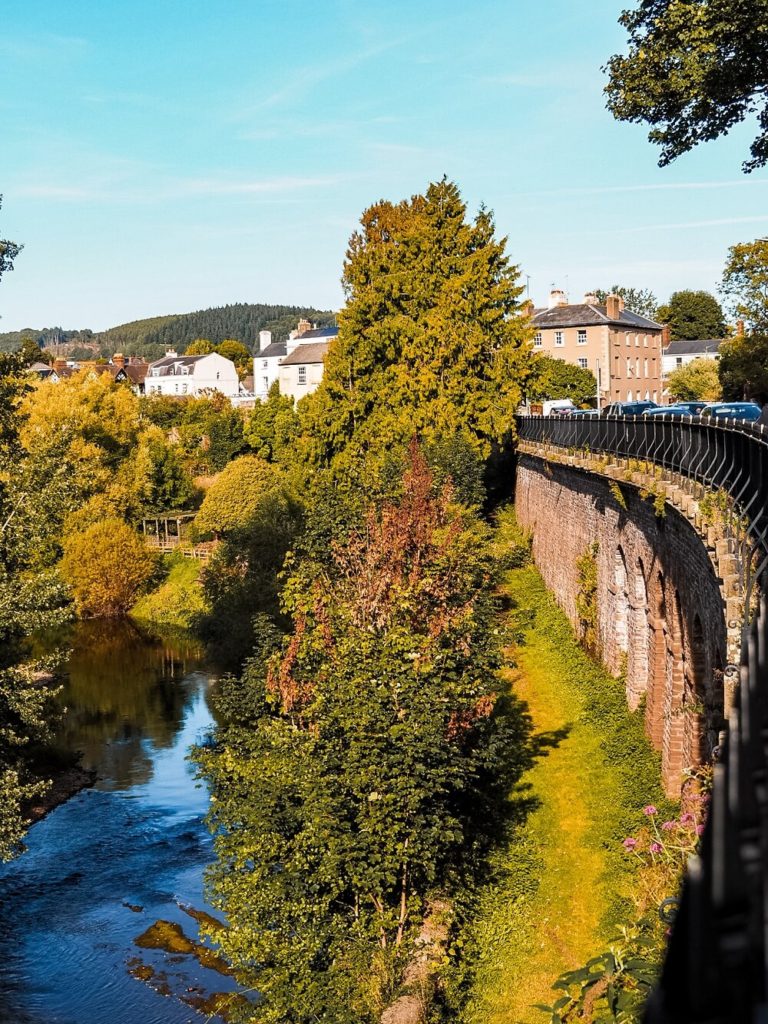
5. Walk Around Monmouth
Whilst strictly speaking Monmouth isn’t located in the Wye Valley, I think it’s a great place to finish your one day itinerary around the AONB. This market town is ideally located at the joining point of the River Wye and Monnow in Wales. Monmouth’s history dates back to early Roman and medieval times, so there’s definitely a lot to see and learn here.
Places to see in Monmouth:
- Monnow Bridge and Gate – One of the No.1 things to do in Monmouth is visiting the Monnow Bridge. The picturesque bridge was originally built of timber. Later, in 1272, it was rebuilt in Old Red Sandstone. Today it’s the only bridge of its kind in the UK.
- Monmouth Castle – Make sure to also visit the ruins of the birthplace of King Henry V who led the Battle of Agincourt. You can explore the area for free.
- Monmouth Military Museum – Next to the ruins of the castle is the Military Museum which is home to the Royal Monmouthshire Royal Engineers. It’s also free to visit and you can see some historical documents, uniforms and weapons.
- Charles Rolls Statue – Another must see spot is the statue of the founder of Rolls-Royce. The statue is located just outside of the Shire Hall in Agincourt Square.
- Shire Hall – Whilst you’re there, make sure to admire the Grade I listed building behind the Charles Rolls Statue.
- Monmouth Museum – If you’re interested in Monmouth’s history, then you should definitely visit Monmouth Museum. Again, it’s totally free to enter.
Victorian slaughterhouse viaduct – Sitting just underneath the Monmouth Museum and Market Hall, you can also view the abandoned sandstone tunnels which used to be a Victorian slaughterhouse.
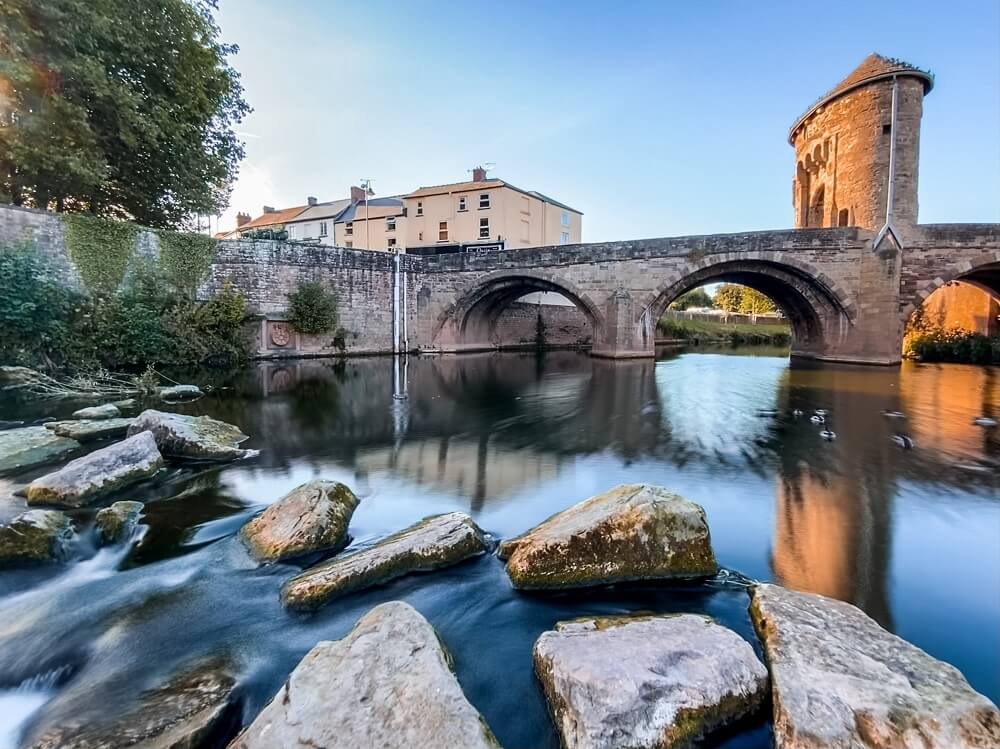
Additional Things to Do Around the Wye Valley
There are plenty of things to do in Herefordshire, so if you’re planning a visit to the county then make sure to check out the following blog posts:
- Best places to visit in Herefordshire – A list of beautiful places you must visit when you’re exploring Herefordshire. Click here to read it.
- Complete the Black Hill (Cat’s Back) Circular Walk – A 5 mile trail with stunning views over Herefordshire in England and the Brecon Beacons in Wales. Click here to read it.
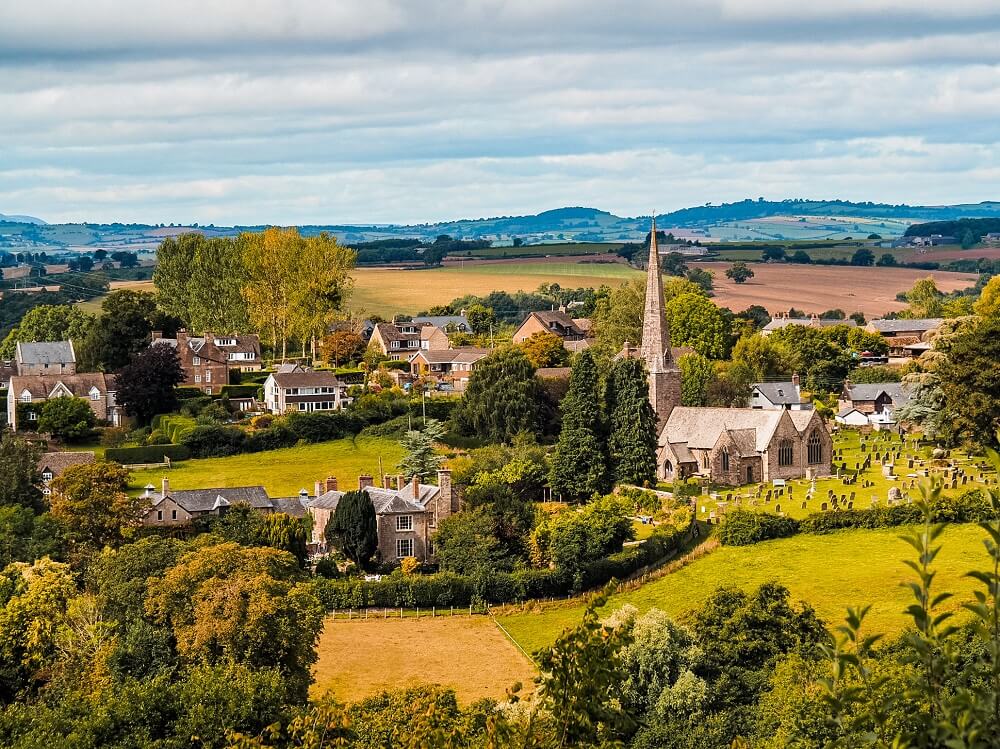
Final Thoughts on Things to Do in the Wye Valley
The Wye Valley is such an amazing place filled with countless things to do. Its landscape, rich history and picture perfect market towns definitely impressed me. One day there was just enough to wish for more.
Have you ever been to the Wye Valley or Herefordshire before? If so, how much of the area did you manage to explore? If not, which places would you want to visit in the area? Let me know in the comments below.
Now, let your adventure begin,

Our Top Travel Resources
Accommodation: For hotels we always use Booking.com and Hostelworld for hostels. We also book longer stays on Airbnb or Vrbo.
Flights: To find the best flight prices we always check Skyscanner , Google Flights or WayAway. Then we also check the airlines’ websites too for comparison.
Car Rentals: We use Discover Cars when we want to rent a car as it compares local, national and international companies.
Activities: If we book organised tours we always check either GetYourGuide or Viator.
Foreign Currency: Whenever we can we prefer to pay in local currency and for that we always use our Wise card. We can easily withdraw money from the ATM or pay by card at most shops and restaurants.
Travel Insurance: We never go anywhere without travel insurance. You never know what will happen on your trip, so good travel insurance like SafetyWing can protect you in case of injury, illness, theft and cancellations.
eSIM and VPN: To get data abroad we use Airalo which is an app that allows you to download a prepaid eSIM to your phone in over 190 countries. Make sure to have a VPN to avoid hackers accessing your personal data when using public WIFI. We use Surfshark which is the only VPN that offers one account on unlimited devices.
Remember…It all starts with a Pin…
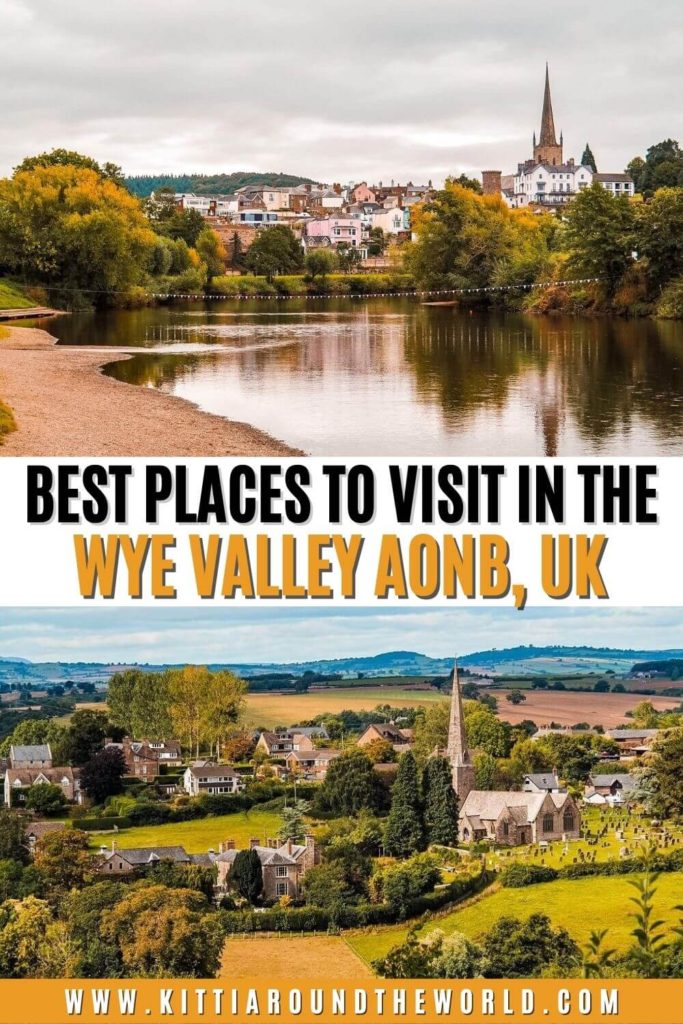
Similar Posts
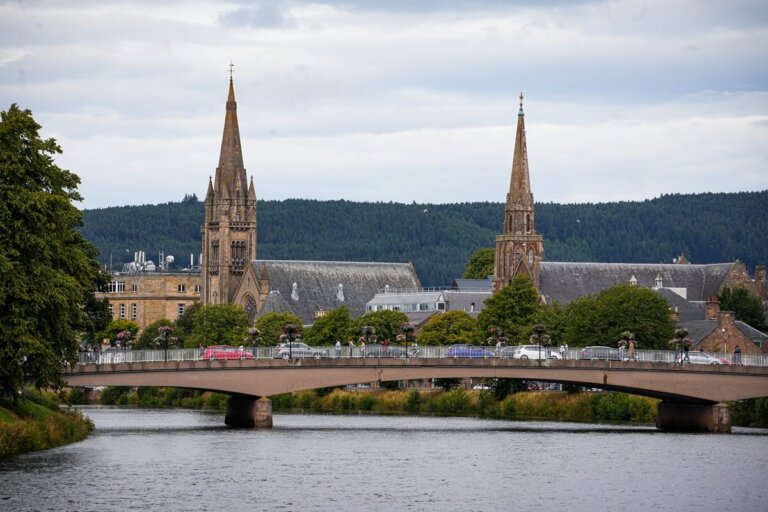
How to Spend 2 Days in Inverness, Scotland
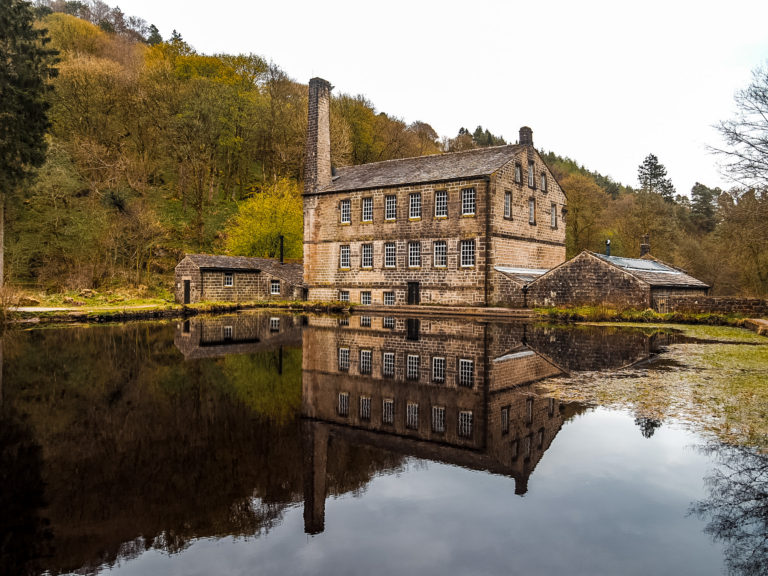
Hardcastle Crags Circular Walk in West Yorkshire
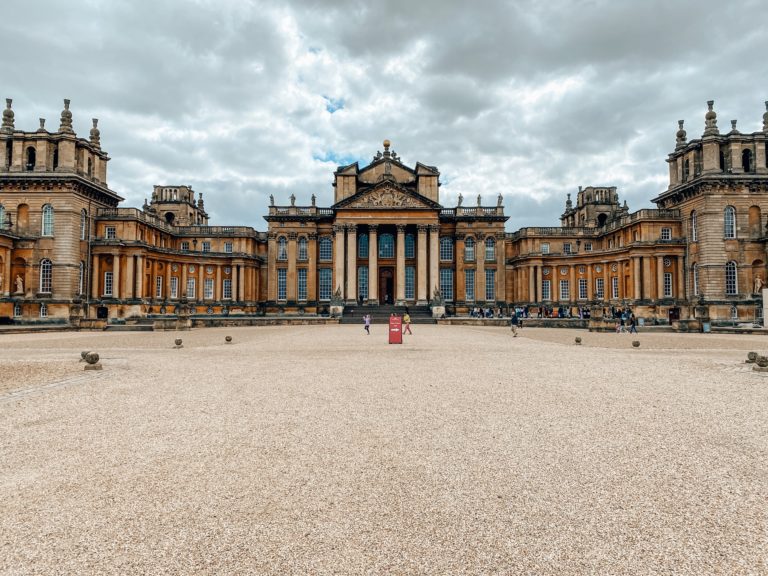
10 Things to Do at Blenheim Palace

Visiting Arley Hall and Gardens in Winter
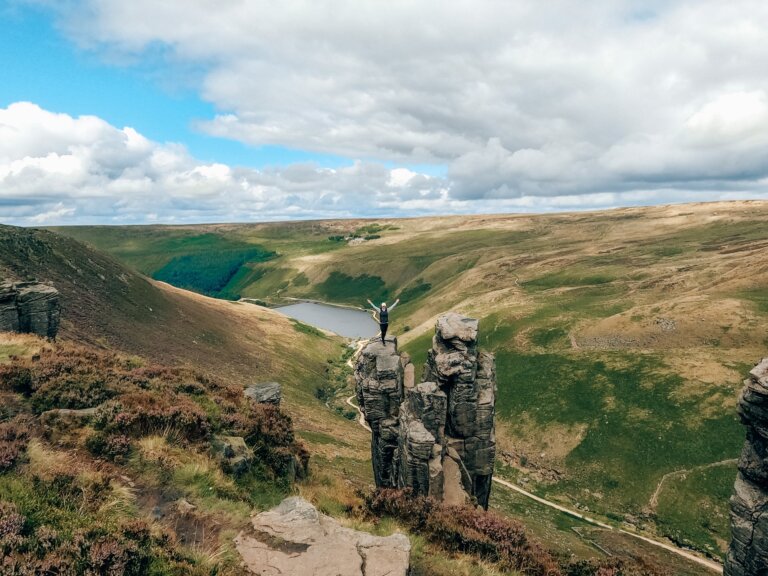
Finding the Trinnacle at Dovestone Reservoir
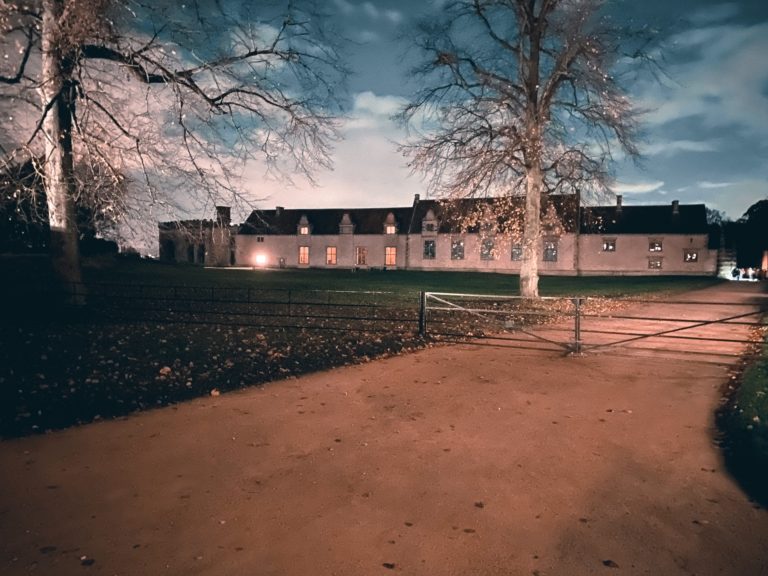
Halloween Ghost Hunting at Bolsover Castle
26 comments.
I need to go! Do you recommend anywhere to stay?
I’m sure you’ll enjoy it. We had a big family week in Herefordshire so we stayed in Cothill Barns, but I think staying around Ross-on-Wye would be a great base.
Wye Valley looks like such a fun place with so much to do!
I agree, the valley is such a stunning place.
What a beautiful place. I would love to visit for the scenery, the photography opportunities, and the hiking.
Thank you so much. Love your reasons for wanting to visit the Wye Valley.
I’d never heard of Wye Valley until now. It’s beautiful, and I’ll have to make a point to visit next time I’m in the UK!
I’m glad that the Wye Valley is now on your radar. it’s a stunning area of the UK for sure.
I’m a huge fan of historical buildings and castles so this would be the perfect place to visit.
So happy to hear that. there’s plenty of that around the area.
The Wye Valley is so pretty! I loved the shot of the Monnow Bridge and Gate, It has a very French look about it.
Thank you Karan, happy you liked my photos.
I bet Goodrich Castle had amazing views. I’d love to make it to Symond Yat rock, that looks gorgeous! I love that Wy Valley is an AONB. What a cool thing to be recognized for!
Thank you Megan, I agree, this place is definitely earned to be an AONB!
I was interested to find so many thing to see and do on a day in the Wye Valley. I can see why I might want to start in the place that is the birthplace of British tourism. I am always looking for great outdoor sights on my travels these days so we delighted with how many there were around Wye.
Thank you Linda. Luckily there’s so much more to do in the valley and I could definitely spend a few more days exploring it.
I’m always looking for weekend trips around England. What a great read. Thank you! I love Monnow Bridge. It reminds me of Palma.
Thank you Trea, I’m glad you liked my guide. The Wye Valley is definitely a fantastic weekend trip.
The Wye Valley looks like such a beautiful place to visit! Ross-on-Wye looks especially charming! It’s definitely an area of the UK I need to explore! Thanks for the great guide!
Thank you Hannah. I hope you can visit this area soon.
A great guide! I was actually looking to move to Wye Valley just before the pandemic hit. Then everyone decided to move to the countryside so I could no longer afford it. Such a wonderful area though!
Oh wow I bet it would’ve been amazing to move there! I really hope that the prices will go down again and you can relocate.
Absolutely love the look of the Wye Valley – was very sad not to make it there the lat time I visited Wales but I ran out of time. There’s too much to do in that area!
I agree, there’s way too much to see and do in this area. I really hope that you can visit soon.
Enjoyed reading your blog post! We just passed through these areas two months ago. Your images of Ross-on-Wye and Coppett hill look stunning! There is so much to do in this part of less-visited Wales. 🙂
Thank you so much Jan, I’m so glad you enjoyed my post. The Wye Valley is definitely a beautiful gem!
Leave a Reply Cancel reply
Your email address will not be published. Required fields are marked *

Exploring the Wye Valley: In the footsteps of Gilpin’s Wye Tour
Posted on Last updated: September 16, 2020
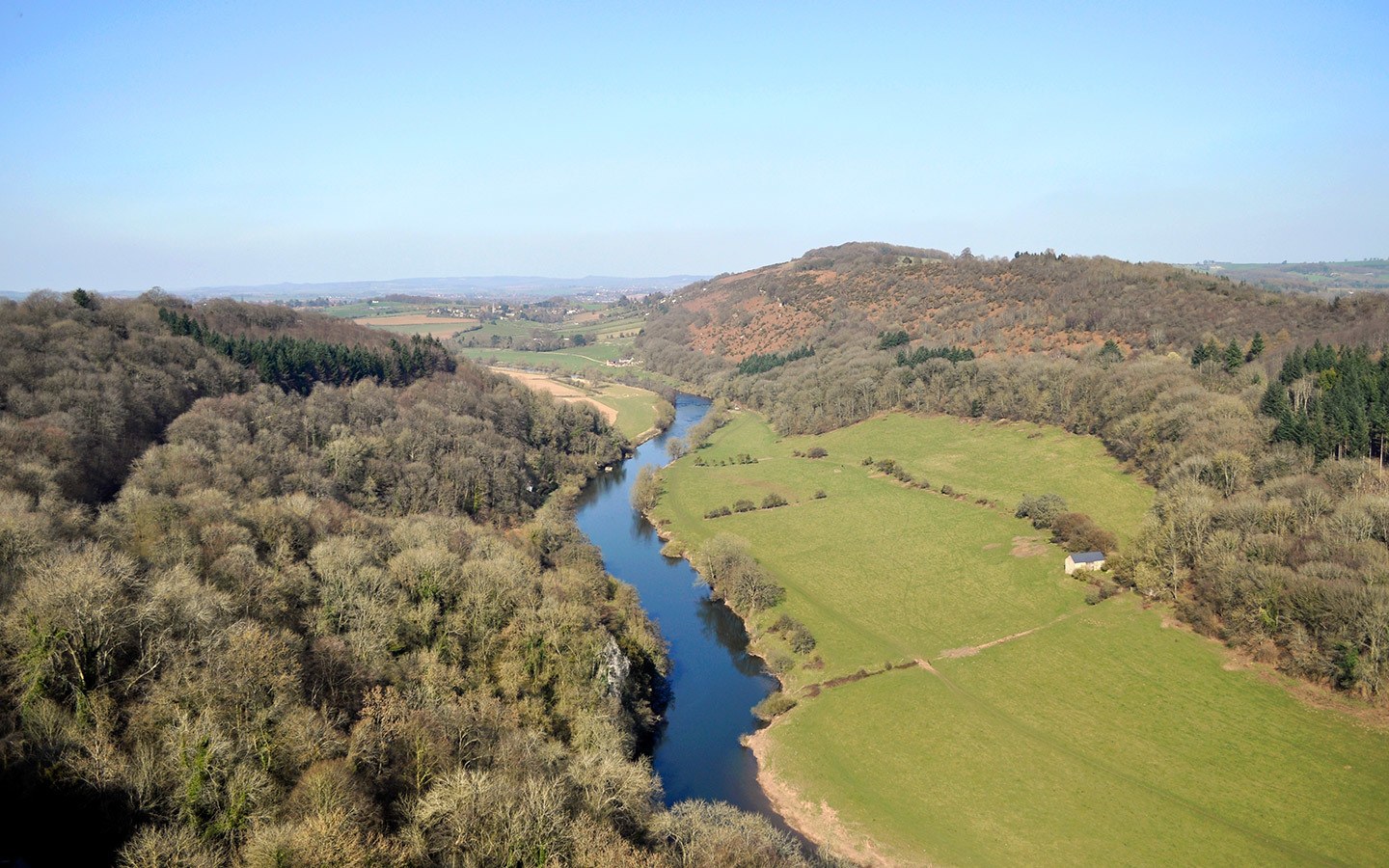
250 years ago, William Gilpin wrote Britain’s first travel guidebook. But it wasn’t dedicated to London or another major city. Instead it was the Wye Valley, on the border of England and Wales, which caught his, and the public’s, imagination. His not-so-catchily-named Observations on the River Wye and Several Parts of South Wales etc Relative Chiefly to Picturesque Beauty helped the Wye Tour to become the British alternative to the European Grand Tour.
According to Gilpin, “If you have never navigated the Wye, you have seen nothing.” And a series of 18th-century writers and artists agreed, waxing lyrical about the area’s scenic beauty. The Wye Valley is where I grew up, and I think it’s one of the UK’s best-kept secrets, with historic buildings, viewpoints, heritage attractions and delicious food and drink. So as part of the Over the Bridge to Wales campaign – highlighting great things to do across the Severn Bridge now the tolls have been removed – I headed back to the area to create my own Wye Valley tour.
My visit was hosted by Over the Bridge to Wales, but all views are my own.
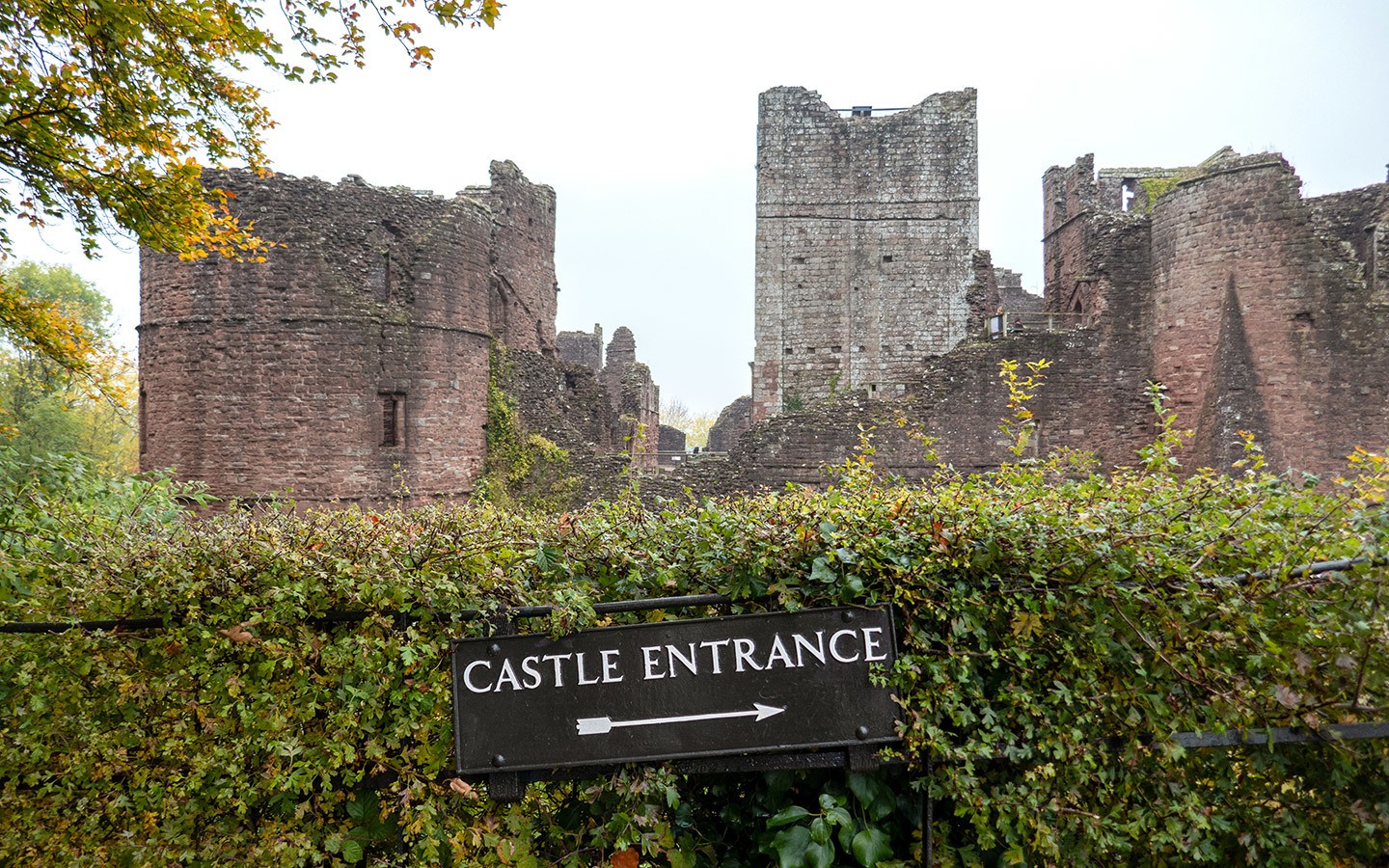
Goodrich Castle
Gilpin’s wye tour.
Gilpin might have made the Wye Tour famous, but it was the rector of St Mary’s Church in Ross-on-Wye, Reverend John Egerton, who first came up with the idea. In 1750, he took inspiration from the flat-bottomed ‘trow’ boats that plied the river and built his own version to take visiting friends on sightseeing tours. Word spread and before long public tours were being offered. And in 1770 one of the sightseers who fell in love with the Wye was William Gilpin.
Gilpin was a watercolour artist, and after his visit he put together a book of writings and illustrations that became the first British travel guide. The Napoleonic Wars helped make the book a sell-out, with multiple reprints, and a whole new tourism industry sprung up to cater for the fashionable 18th-century set, with artists, poets and writers – including famous names like Wordsworth and Turner – coming to appreciate the area’s ‘picturesque’ scenery.
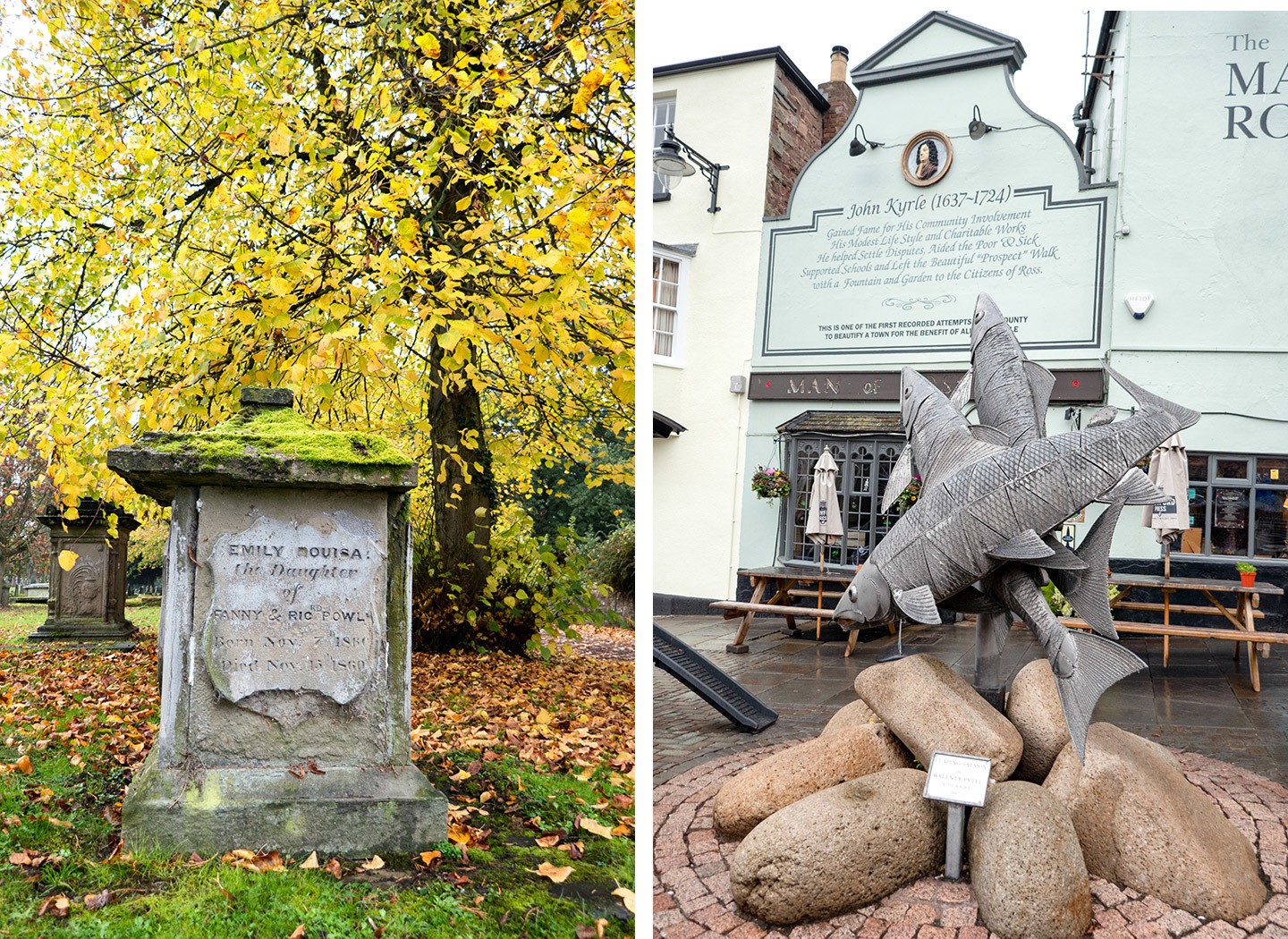
Exploring Ross-on-Wye
Appreciating the picturesque wasn’t just a case of admiring the landscape though, there was a precise set of rules for exactly what to look for. You wanted to be down low to instill a sense of awe – so river level was perfect – with a rugged and rough landscape that didn’t shy away from industrial sections of the Wye as well as its romantic ruined castles, abbeys and countryside scenes. And along the route there were ‘Grand Scenes’ which fulfilled all the criteria.
The original Wye Tour was a two-day boat trip along the river from Ross-on-Wye to Chepstow – travelling from Ross to Monmouth on day one and Monmouth to Chepstow on day two. With a set route, including hotels, travel, stops for food, walks and views along the way, it was one of the first package holidays. The Wye Tour stayed popular until the 1830s, and had a renaissance in the 1870s after the Wye Valley Railway opened, before eventually losing favour. But the 250th anniversary of Gilpin’s visit is the perfect excuse to rediscover the Wye Tour.
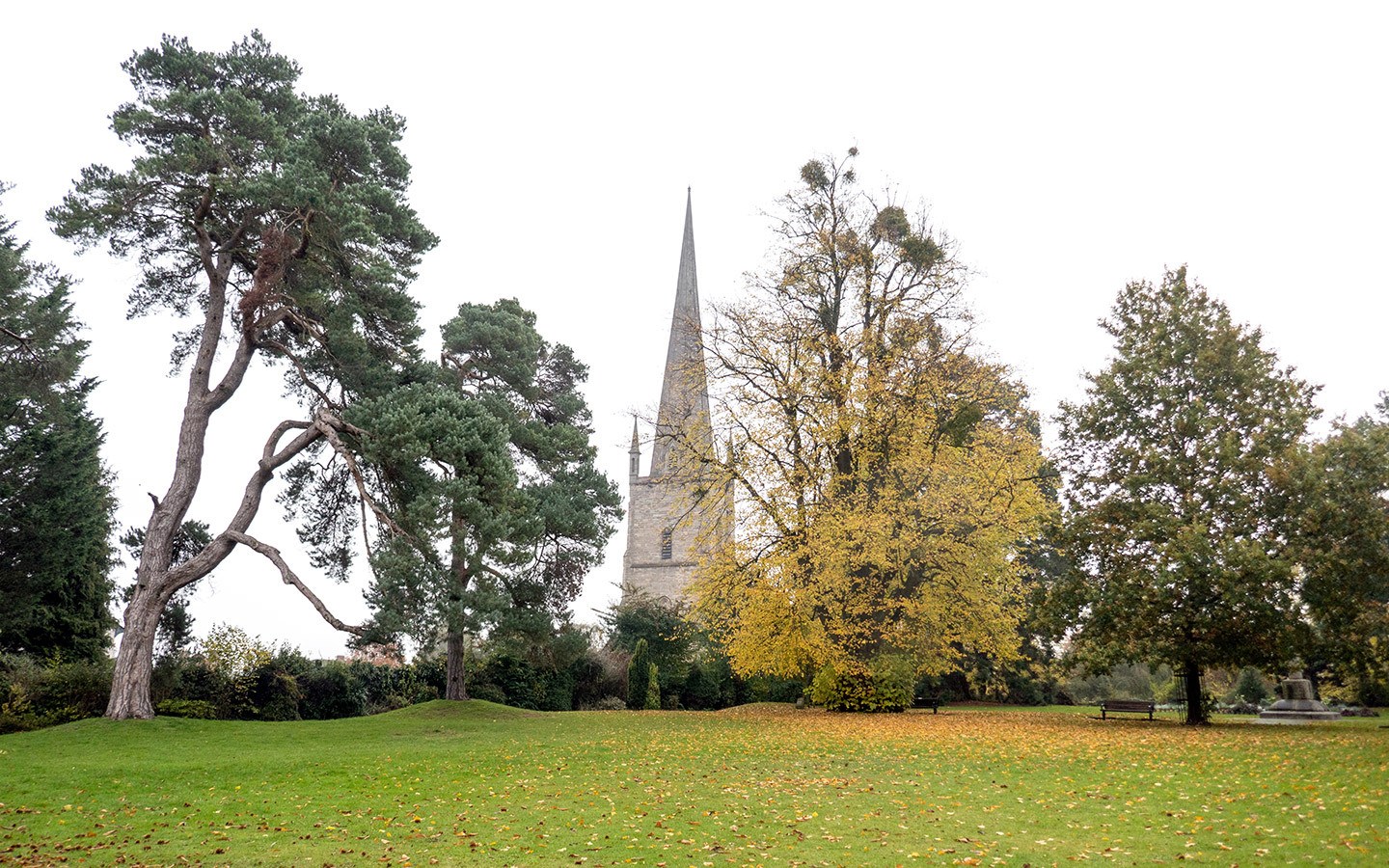
St Mary’s Church in Ross-on-Wye
A modern Wye Valley tour
Today you can’t travel the whole of the Wye Tour route by boat – unless you want to try it in a canoe – but you can follow in Gilpin’s footsteps on a Wye Valley road trip. You might not be sitting on a cushion beneath a canopy with a table for sketching like the Wye Tour boat passengers, but having your own mode of transport means you’ve got more flexibility of where to stay, eat and drink along the way – see the end of the post for my top tips.
Ross-on-Wye
The first stop on the Wye Tour is my hometown – the historic market town of Ross-on-Wye. And you can still stay in the Royal Hotel where the original Wye tourists would start their adventures. The hotel is next to The Prospect, a public garden by St Mary’s Church where you get a panoramic view down to the River Wye. It was created in 1696 by John Kyrle, a benefactor of the town who still has a nearby pub (and my old high school) named after him.
Take a wander through the town before heading down to the river. Ross has some great antique shops, including one of my favourites, Ross Old Book Shop, heaven for secondhand book and map lovers. Down at the riverside, travellers on the Wye Tour would meet their boats outside the Hope and Anchor pub – a good spot for a drink on a sunny afternoon – before heading off downriver. Take a walk along the banks of the river as far as Wilton Bridge to see the classic postcard view of Ross, as well as the ruins of 12th-century Wilton Castle across the river.
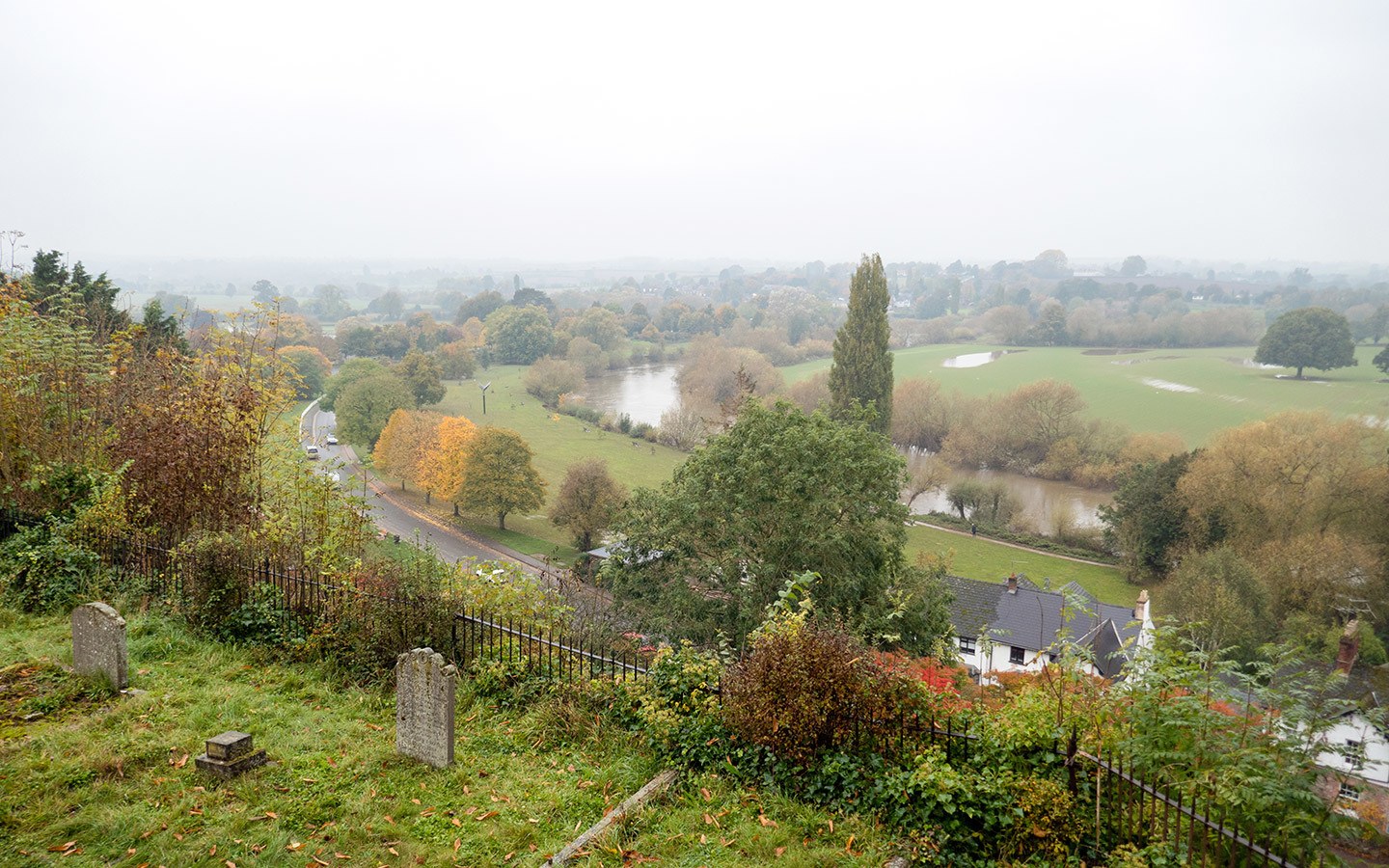
Views from The Prospect
From Ross, travel on to Goodrich Castle (4.5 miles). This was Gilpin’s first ‘Grand Scene’ on the route, with just the right combination of attributes for it to meet his picturesque criteria. The castle is still an impressive sight, and is one of the best preserved medieval castles in England. It was built in the 13th century and most famously survived a two-month-long siege during the Civil War. Keep your eye out for ghosts as the castle is said to be haunted by Parliamentarian’s niece and her Royalist lover who drowned in the Wye while trying to escape the siege.
Wye tourists had to climb up the steep hill from the river, but modern travellers have it a lot easier. The castle is managed by English Heritage now who have special events during the year. I’ve been visiting since primary school trips and still can’t resist climbing the towers and going down into the dungeons. Make sure to check out ‘Roaring Meg’, the only surviving Civil War cannon, and the Wye-themed stained-glass window designed to mark the Millennium.
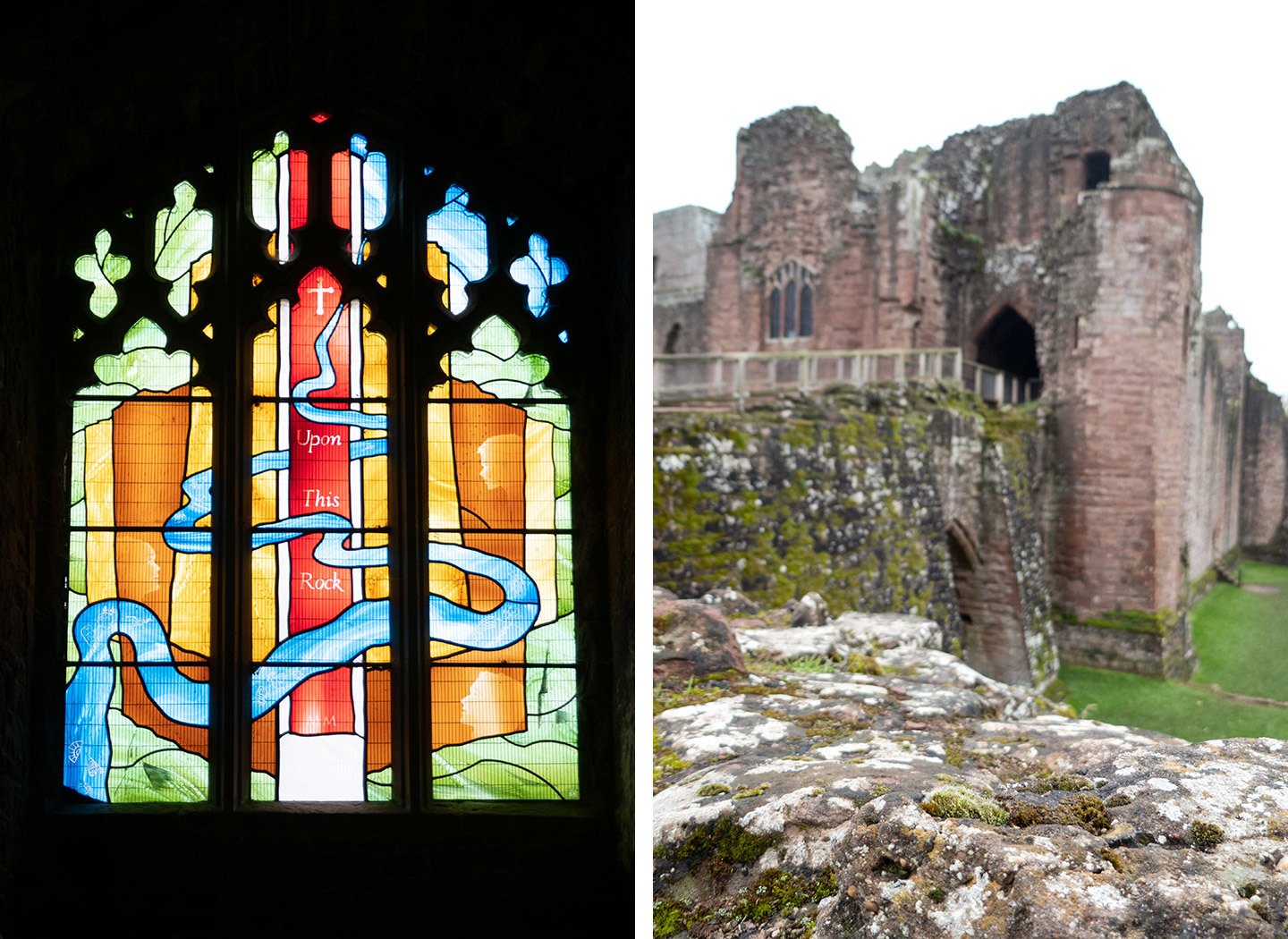
Goodrich Castle and the Millennium window
Symonds Yat
Next travel on to Symonds Yat Rock (3.5 miles). Symonds Yat gets its unusual name from the 17th-century sheriff of Herefordshire, Robert Symonds, and an an old word for a gate. This viewpoint was Gilpin’s second Grand Scene and is still one of the best-known views of the Wye Valley. From the top up at 500 feet you can see out over seven old counties. It’s also a favourite spot for birdwatchers as the cliffs are a nesting site for peregrine falcons.
Head down to the riverside at Symonds Yat East (a steep half-mile walk or a 2-mile drive). Wye Tour travellers would rejoin their boats at New Weir, though things looked a lot more industrial then as it was the site of an iron forge. It’s still a good place to take a boat trip, with Kingfisher Cruises running 40-minute tours along the river, canoes for hire or a hand-pulled cable ferry connecting Symonds Yat East and West, saving a five-mile road trip. In the 1800s there were 25 hand ferries like this between Ross and Chepstow, but this is the only one left now.
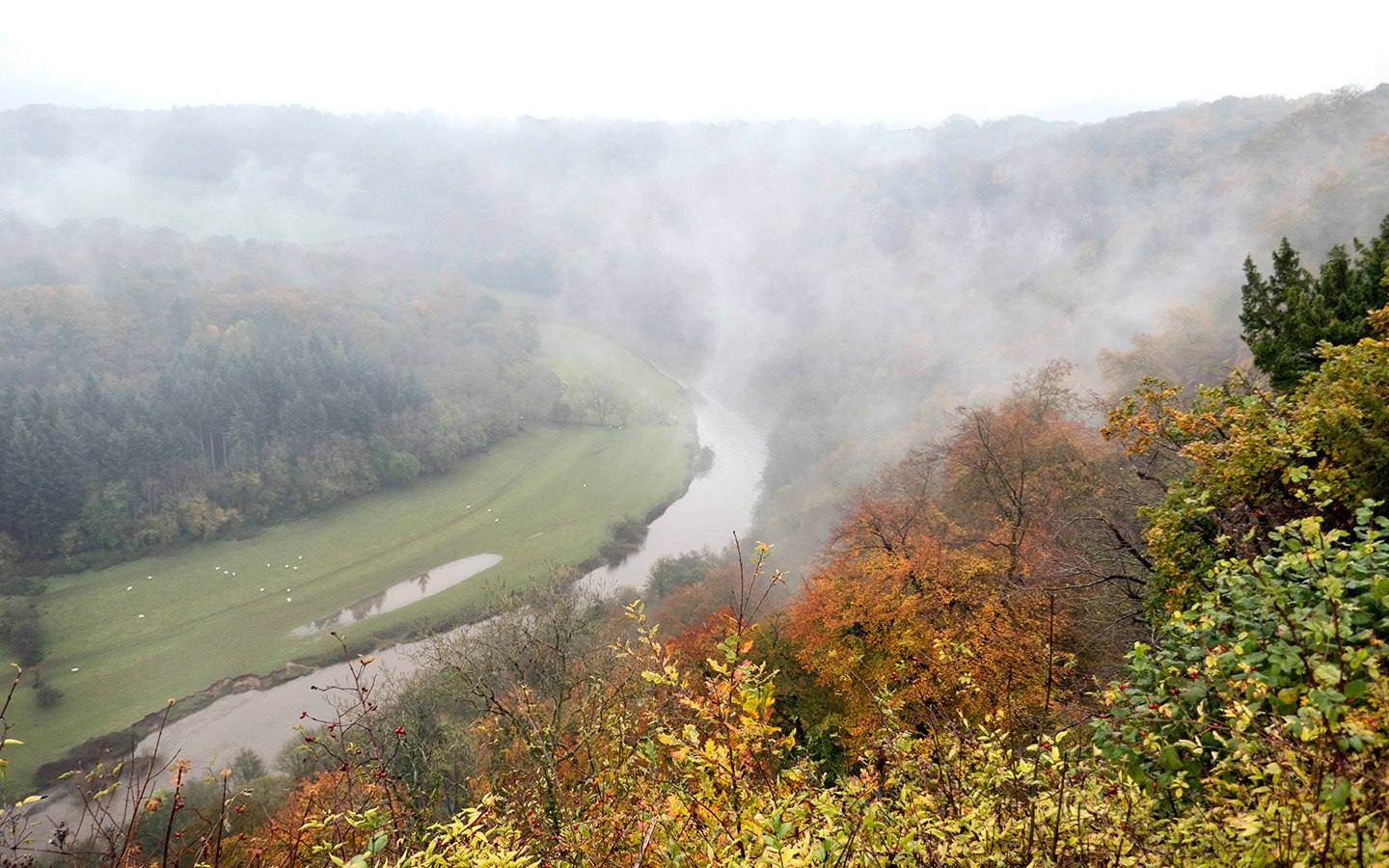
Looking down to the Wye from Symonds Yat Rock
From Symonds Yat our Wye Valley tour swaps England for Wales as it crosses the border en route to Monmouth (8 miles). On the way you pass the Doward, which is where a Victorian archaeologist unearthed Ice Age animal remains, helped by a local character known as Slippery Jim. He got his nickname from selling slippers made of animal fur, and had lived in the area’s limestone caves with his wife for 30 years (and not washed the entire time apparently).
Monmouth is the county town of Monmouthshire, where the Wye and Monnow rivers come together. It was the halfway point on the Wye Tour where visitors stopped for the night. The Beaufort Arms on Agincourt Square was their favourite spot (not least because Admiral Nelson stayed there). It’s not an inn any more but you can still see its frontage, as well as other historic buildings in front of the Shire Hall, which has an old courtroom and cells you can visit.
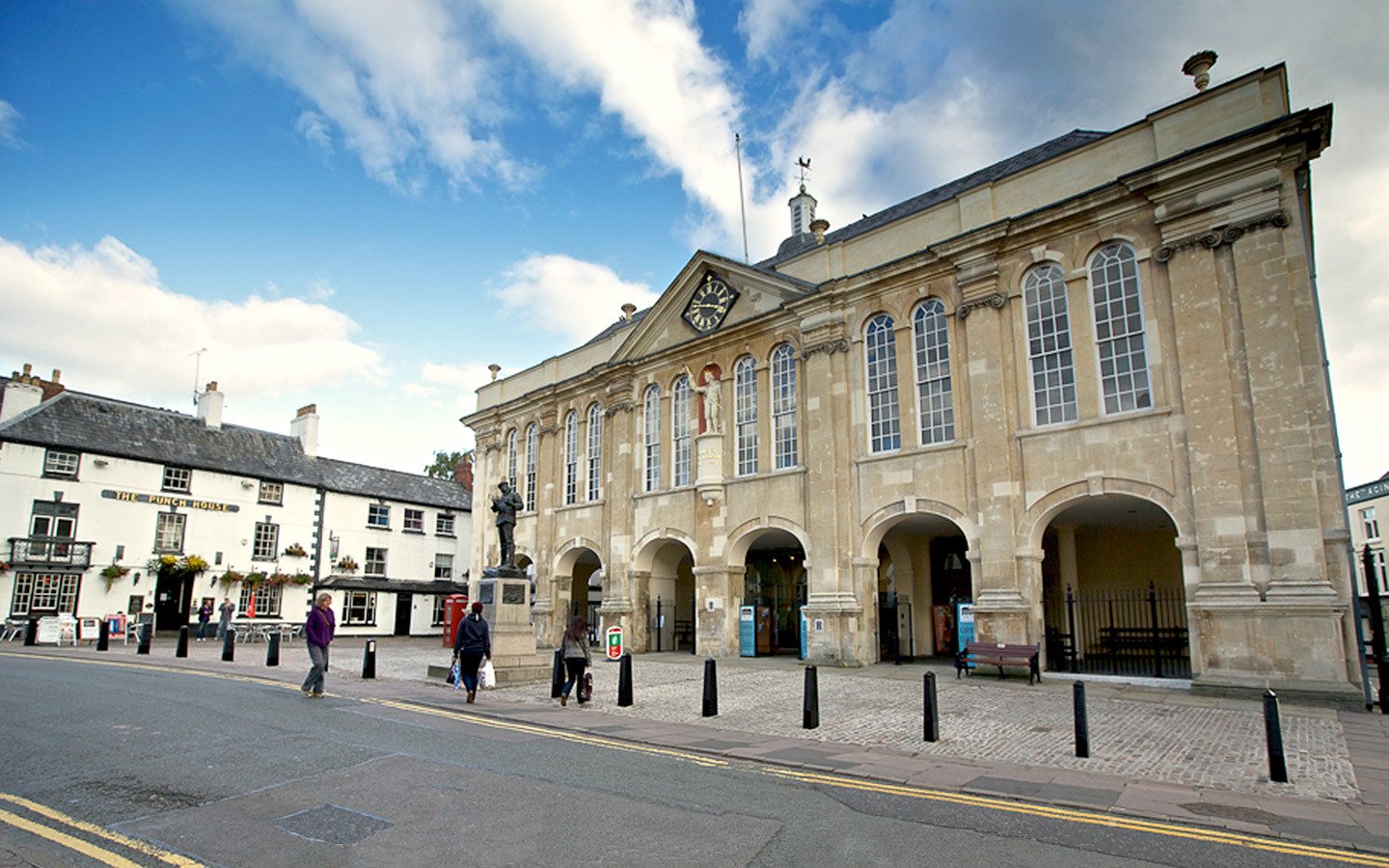
Monmouth’s Shire Hall – photo credit Forest of Dean & Wye Valley Tourism
Next head south towards Tintern, following the riverside route along the A466 (12 miles). If you want to check out the views which inspired Wordsworth, take a short diversion at Landogo, following the Trellech road until you reach the Natural Resources Wales car park, where a path takes you to three viewpoints over the ‘Sylvan Wye’. Carry on to Tintern, another Wye location with industrial metalworks heritage, which you can explore along the Angidy Trail .
Tintern Abbey was founded in 1131 by Cistercian monks, with the original wooden version being replaced by a Gothic stone masterpiece in 1269. But it lost its roof and fell into ruin after the Dissolution of the Monasteries. The ivy-covered abbey ruins were a major highlight of the Wye Tour, and ended up as a bit of a tourist trap with visitors complaining about surrounding ‘beggars and hovels’. Today it’s back to being a peaceful, atmospheric ruin alongside the river.
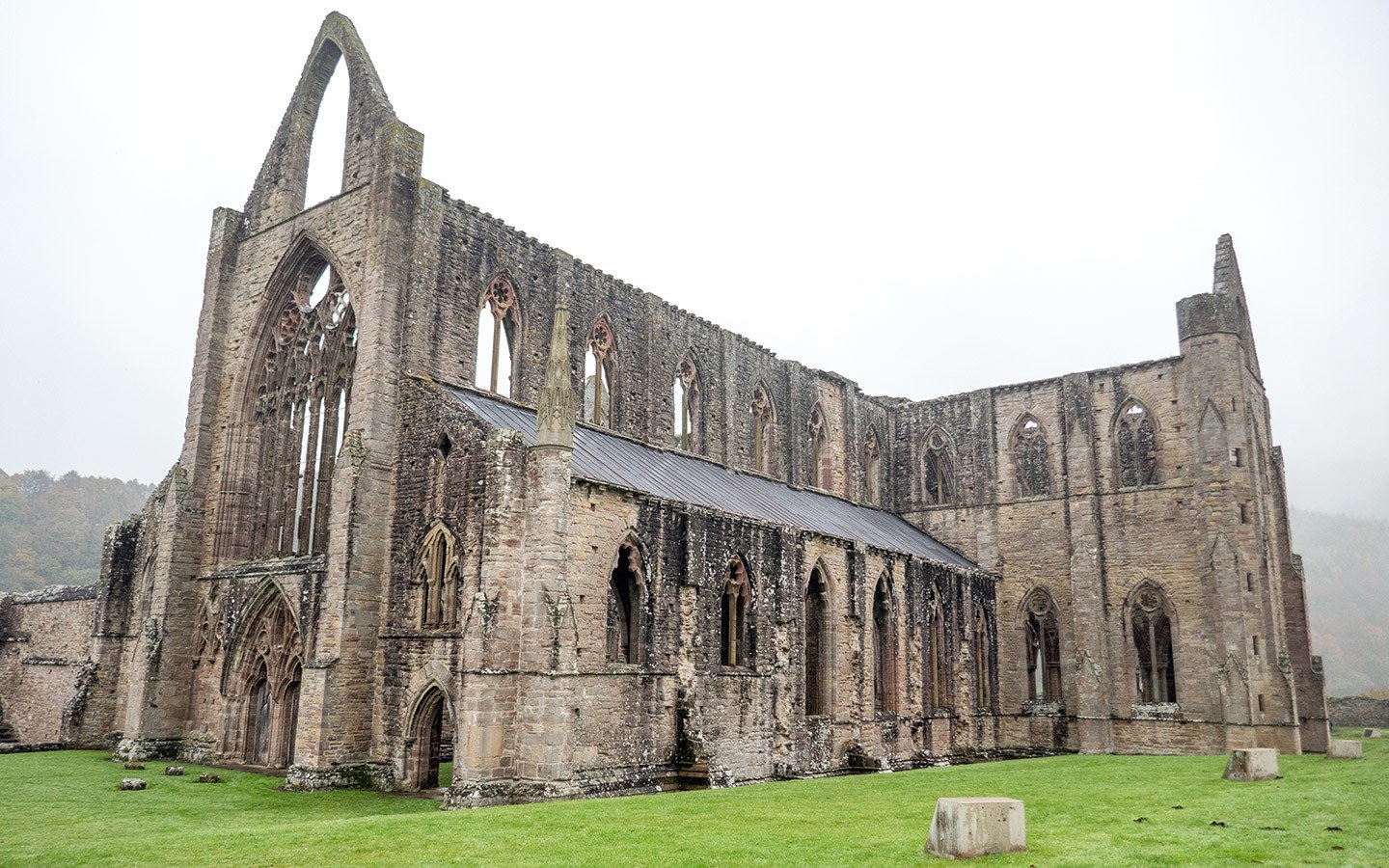
Ruined Tintern Abbey
Finally, head towards Chepstow (5 miles) on the last stretch of your Wye Valley tour. Back in the days of the Wye Tour, Chepstow was Wales’ largest port, exporting timber and importing good like salt from Iceland and wine from France and Spain. And the arrival of steam packet boats between Bristol and Chepstow in 1822 opened up the Wye Valley to a new group of tourists.
The town is dominated by its Norman castle, standing in an imposing position on a clifftop overlooking the River Wye. Chepstow Castle was founded in 1067, but extra bits were added right up until its decline after the Civil War. The castle ruins were a favourite with artists, and if you’re interested in seeing some of the sketches, paintings and diaries which were inspired by the Wye Tour, many are on display in Chepstow Museum, just opposite the castle.
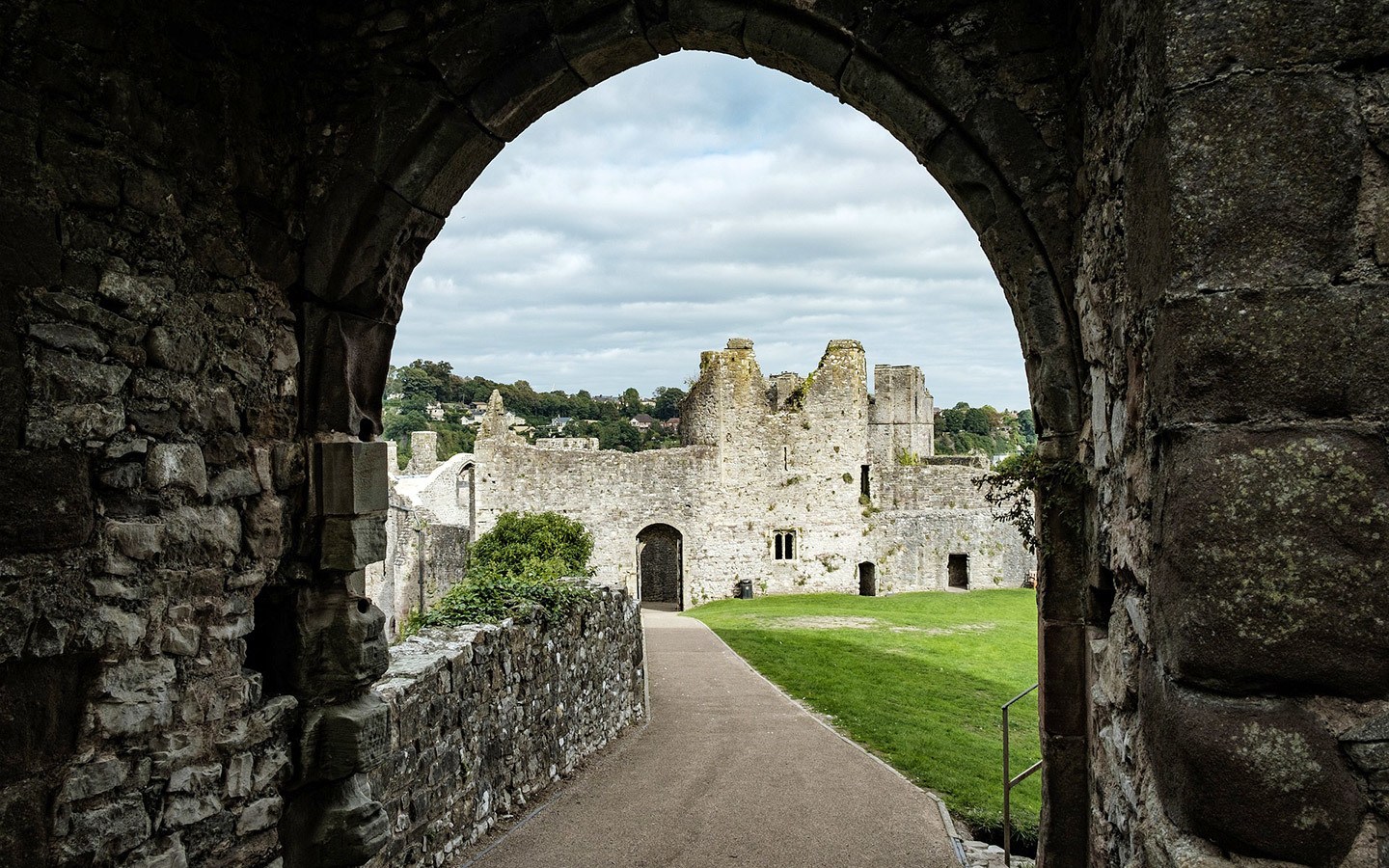
Chepstow Castle
Where to eat, drink and stay in the Wye Valley
The Royal Hotel has the best location in town, next to the Prospect gardens (look out for the secret door from the hotel garden) with spectacular views out over the river. Even if you’re not staying there it’s worth calling in for a drink on their terrace. Ross’ No 3 restaurant serves stylish modern European food, or try its sister restaurant Leonards at 39 for tapas and cocktails. Or for something a bit more exotic, Yaks ‘n’ Yetis specialises in Nepalese Gurkha dishes.
The Saracen’s Head is a 16th-century riverside inn in Symonds Yat East, which serves traditional pub food and has nine guest bedrooms (it’s also just below the house from TV series Sex Education if your cultural references are a bit more contemporary than 18th-century!). Or take the cable ferry across the River Wye to Symonds Yat West where you’ll find the Ye Old Ferrie Inn , another cosy pub with rooms, and the Wye Knot Inn, which specialises in local ales.
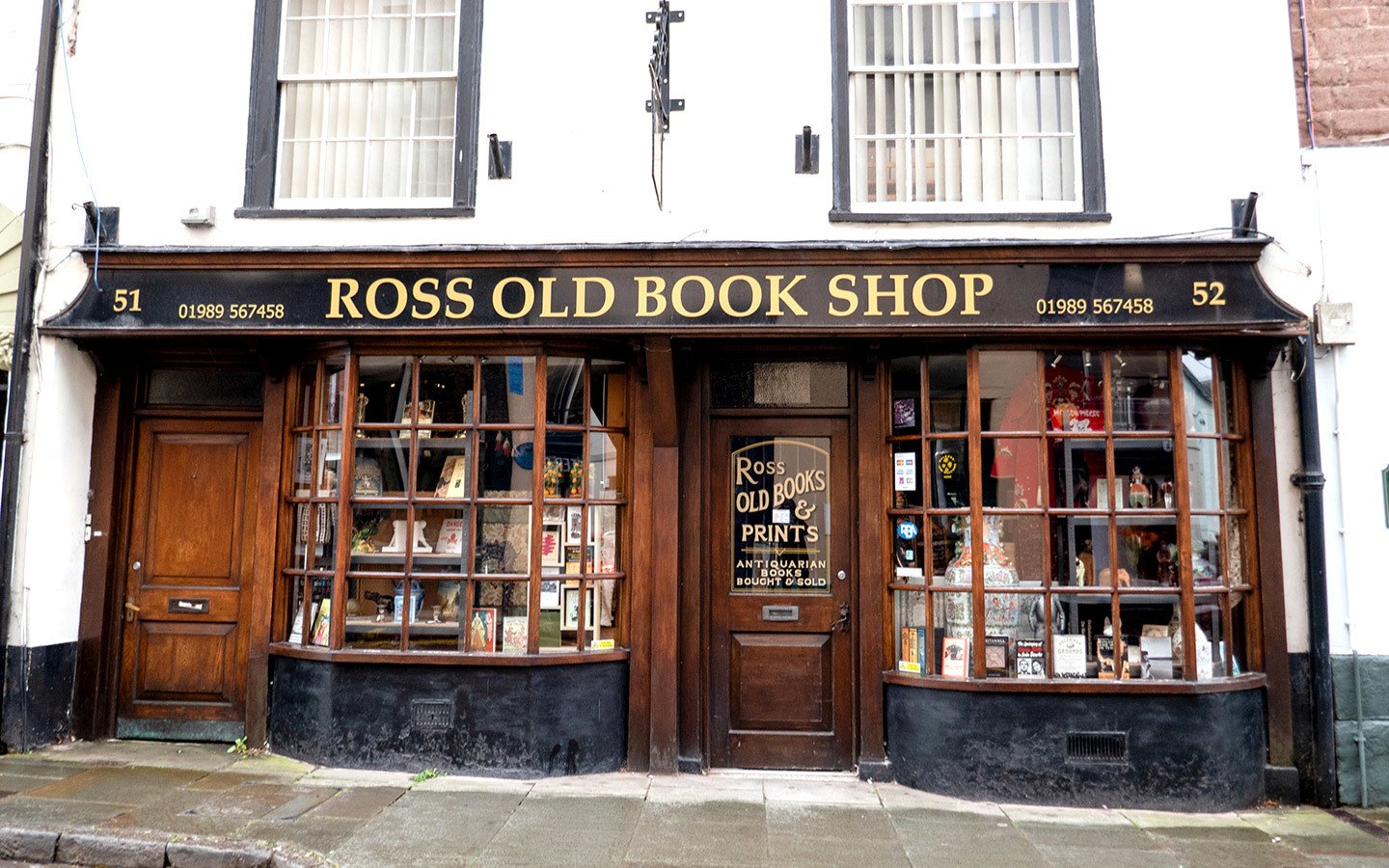
Ross Old Book Shop
The Gothic-style Hostelrie in Goodrich is a traditional pub, with log fires in winter and a beer garden in summer, as well as a few guest rooms. It serves English pub food using local ingredients as well as a range of beers and ciders sourced from around the area. There’s also a tearoom at Goodrich Castle if you’re in need a fix of tea and homemade cake.
In the centre of town, La Piccola Italia is a buzzy Italian bistro serving all the usual favourites like pizza, pasta and risotto. Or head a few miles north of Monmouth to The Stonemill in Rockfield. As you’d guess from the name the building was once a 17th-century mill, but it’s now a two AA Rosette restaurant, with six bed and breakfast cottages a short walk away.
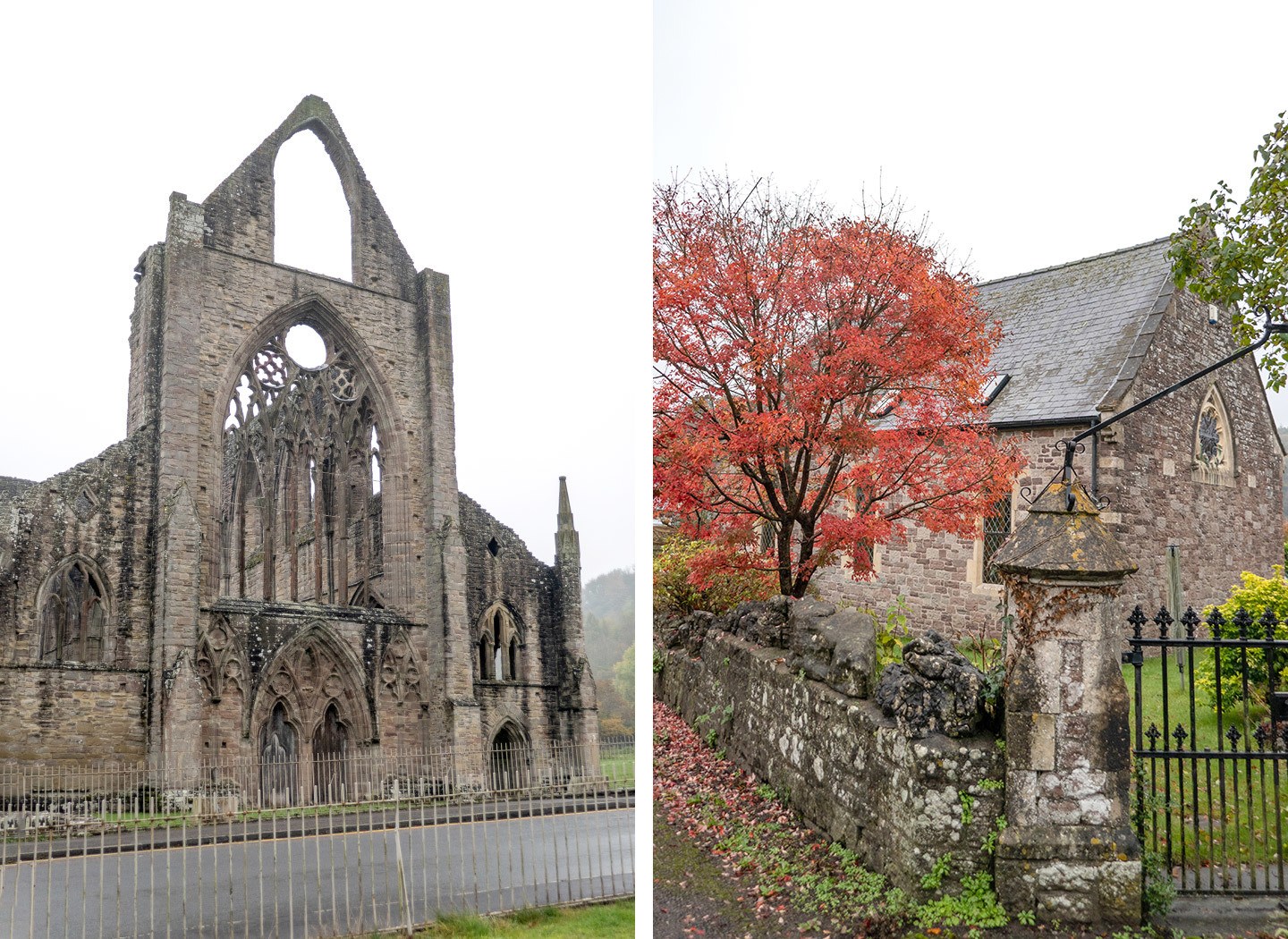
Tintern Abbey and autumn colours
The Royal George is a cosy, dog-friendly pub in Tintern which has 14 en-suite guest bedrooms and a bar and restaurant. You can also rent Beaufort Cottage , which is right in the grounds of the Abbey with a knockout view from the bedroom window. And call into Tintern’s Old Station Tearoom for coffee, cake and local ice cream. The Old Station is now 10 acres of riverside meadowland with walking paths and old railway carriages you can taken a look around.
You can follow in the footsteps of the Wye tourists with a stay at the Beaufort Hotel , a quirky 16th-century coaching inn which has kept lots of its original features. Panevino is a family-run Italian restaurant with a garden seating area overlooking the Wye that’s perfect for summer evenings. Or the Riverside Wine Bar has another great waterside setting, this time serving a wide range of wines, gins, cocktails as beers, as well as tasty tapas dishes.
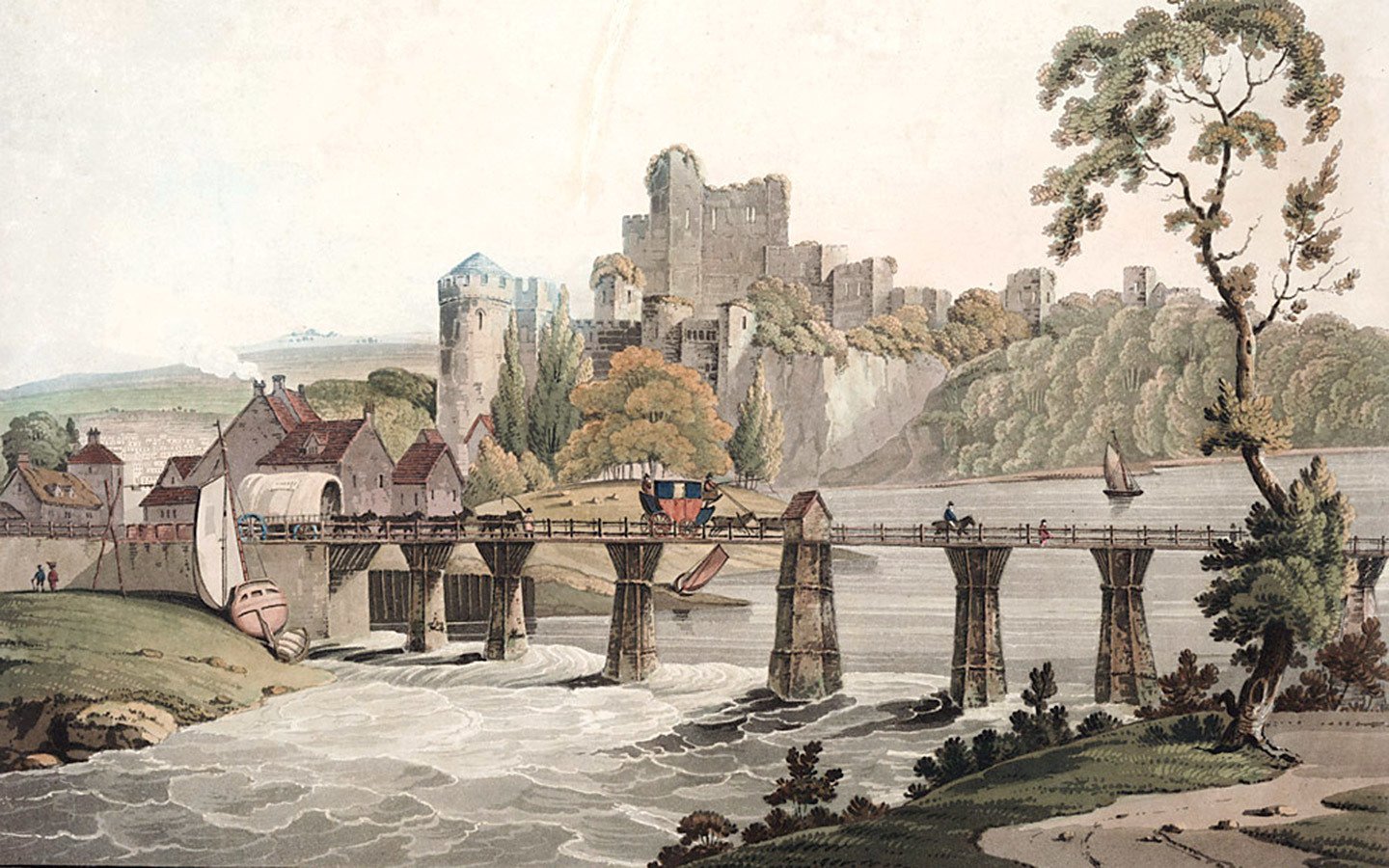
Artworks of Chepstow Castle – image credit Wikimedia Commons
Read more UK posts
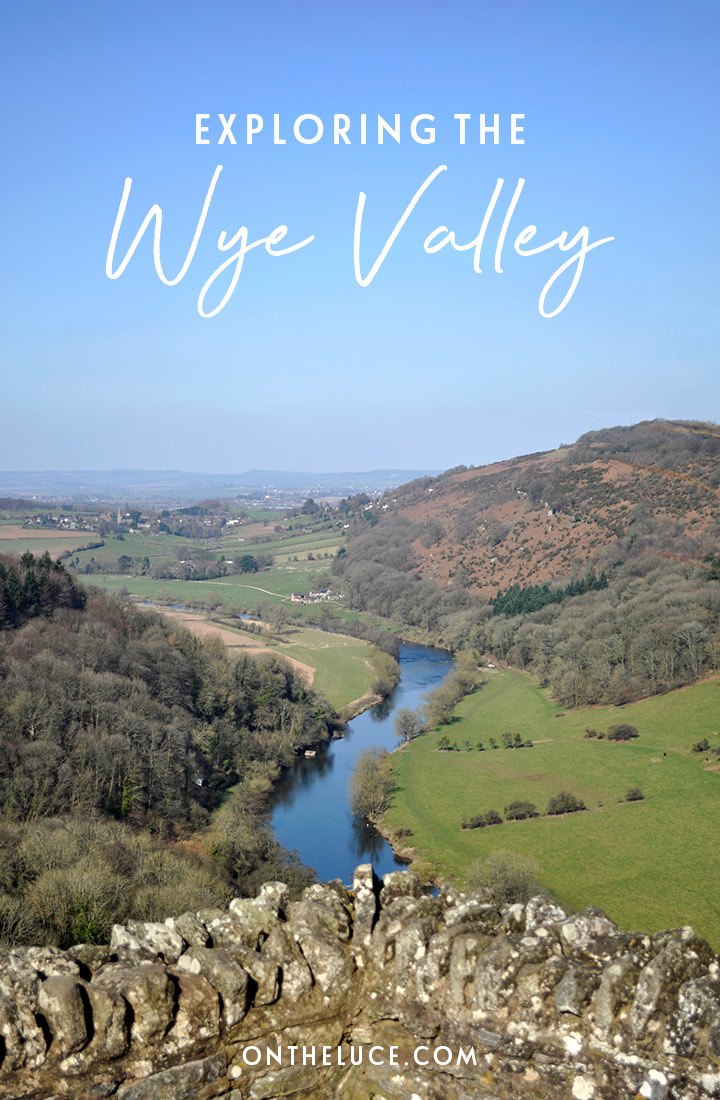
This article contains affiliate links, where I get a small commission at no extra cost to you, thanks.
irelandandelsewhere
Saturday 13th of June 2020
Really interesting read, thanks! We were talking last night about Wales being a place we have never visited, it looks beautiful!
Lucy Dodsworth
Wednesday 17th of June 2020
Thanks, Wales has some beautiful spots – hope you get to visit sometime soon!
Wednesday 26th of February 2020
There are two hand ferries still operating (floods permitting!)-one from the Sarencens and one from Ye Olde Ferrie Inn.
Charlotte Swinnerton
Friday 7th of February 2020
I have fond memories of canoeing down Symonds Yat and I'm excited to visit Monmouth next month! I didn't realise it captured so many local places.
Monday 10th of February 2020
I remember doing that canoe trip years ago too – may have to give it another go!
Dylan Jones
Wednesday 5th of February 2020
I've never explored the Wye Valley - it's a part of Wales I haven't quote made it to yet. I have wanted to visit Tintern Abbey for a while though, and it looks like there is plenty to do in the area while I'm there.
Tintern Abbey is gorgeous – I'd like to go back and photograph it at sunset (without the clouds!) sometime.
Saturday 1st of February 2020
Loved your photos of Chepstow Castle, this looks like a great area to go exploring!
Some great castle ruins in this part of the world!
- Our Press Page
- Work with us
- Disclosure Policy
5 villages you should visit in the Wye Valley, England
The Wye Valley is an Area of Outstanding Natural Beauty, which straddles the borders between England and Wales. It is a beautiful, natural area with a rich, industrial past. This wonderful combination of history and nature is reflected in the many pretty villages in the Wye Valley.
Everyone will have their favourite, but we’ve whittled it down to 5 villages that you should visit in the Wye Valley, England.
*contains affiliate links
Contents: click to jump to a section

One of the prettiest villages in the Wye Valley is Newland, which sits on the edge of the Forest of Dean. The main attraction in this serene, unspoilt village is the 800-year-old, All Saints Church.
Known today as The Cathedral of the Forest , this medieval church was built in the early 1200s long before the village existed.
Nowadays, visitors are welcome to look inside the church to see the intricate stained-glass windows, bygone effigies, and ornate tombs. You should also take a few moments to wander round the ancient graveyard.

Directly in front of the Cathedral of the Forest in Newland, you’ll discover a row of white alms houses. These charming cottages were built for the parishioners in the 17 th century.
If you’re looking for somewhere to eat in Newland, head to the opposite side of the graveyard, where you’ll find The Ostrich Inn . This traditional village pub serves real ale and homemade food.
If you are looking for walks from Newland, you could try a linear walk to Redbrook. It’s a scenic route of about 5km, but can get muddy.
As it’s so small, there are no hotels in Newland, but there are several self-catering accommodations nearby. Bramble Cottage , a 2-bedroom cottage with a garden, has fantastic reviews. Click here to book .

About 10 minutes’ drive from Newland is the historic village of Redbrook. Redbrook sits partly in England and partly in Wales, with the River Rye running through the centre.
Redbrook’s most notable feature is it’s Grade II listed bridge, also known as the Penallt Viaduct which was last used in 1964. Redbrook has a rich industrial heritage and the bridge is a reminder of former times when it was used for the Wye Valley railway.

Cross the bridge to get beautiful views of the River Wye and to reach the lovely Boat Inn , which is on the Welsh side in Penallt. With its waterfall and lush foliage, this traditional pub has a pretty pub garden with waterfalls running through it.
If you are looking for accommodation, the Boat Inn has a 2-bedroom apartment above the pub.
Click here to book the Boat Inn .
Ross-on-Wye

One of the best places to stay in the Wye Valley, is Ross-on-Wye, as it is larger and has more places to eat.
Ross-on-Wye is actually a town, but we didn’t want to exclude it from places you should visit in the Wye Valley. This pretty market town stands on the borders of Herefordshire on the River Wye. From a distance you can see the iconic spire of St Mary the Virgin Church, which stands 205 feet up.
After a visit to the church, you can explore the churchyard. This leads to Prospect Gardens, a historic park built in 1700. From this viewpoint, you’ll get magnificent views over the Wye Valley below and as far as the Welsh mountains.

At the heart of Ross-on-Wye is the historic Market House. Make time to venture upstairs, where you’ll find Made in Ross , a collective selling locally made arts and crafts. Beyond the Market House is a mix of independent shops and antique emporiums intermingled with high street stores and charity shops.
When you need to stop for refreshments, Ross-on-Wye has a delightful coffee house and delicatessen. Alternatively, you could make a pit stop at The Man of Ross Inn, a family run pub.
At less than 3 hours from London, Ross-on-Wye makes a perfect weekend getaway from the capital.
You’ll find a choice of accommodation in Ross-on-Wye to suit all budgets. If you want to stay in the centre of Ross-on-Wye, try the Royal Hotel or the Kings Head . Or you could book the beautiful Bridge House , a guest house with views over the river.
Symonds Yat
Symonds Yat is a picturesque location near Coleford in the heart of the Wye Valley in England. There are three distinct areas, all of which are worth a visit.
Firstly, you have the two pretty hamlets Symonds Yat East and Symonds Yat West.

Symonds Yat East & Symonds Yat West
On the east side of the river, Symonds Yat East offers a choice of charming restaurants and tea houses. We ate at the Saracens Inn , a traditional pub overlooking the River Wye.
Afterwards we set out on a walk to discover the natural landmarks, King Arthur’s Cave and Seven Sisters’ Rocks. Not only a popular venue for hikers, Symonds Yat is a great place for canoeing on the River Wye.
If you want to get across to Symonds Yat West, you’ll need to use the hand pull ferries. The boats link to a cable and have been transporting people across the River Wye for centuries.
Alternatively, you can do a circular walk via Biblin’s rope bridge.

Symonds Yat Rock
Secondly, overlooking the gorge and River Wye, is the famous viewpoint, Symonds Yat Rock. The Forestry Commission manages this scenic beauty spot, which offers a choice of woodland walks and bike rides.
Symonds Yat Rock has a famous viewpoint, which looks over the horseshoe bend in the River Wye. It is also the perfect spot for seeing Peregrine Falcons and other birds of prey.

Accommodation in Symonds Yat
With its central location, Symonds Yat is an ideal place for accommodation in the Wye Valley. You can actually stay at the Saracens Head Inn and Ye Old Ferrie Inn , both of which are on the banks of the River Wye. If you prefer self-catering accommodation, you could book The Paddocks Cottages .
Our final choice of villages in the Wye Valley is Lydbrook. Lydbrook is a long, narrow village in the Forest of Dean, Gloucestershire, which runs down the deep valley from Upper to Lower Lydbrook.
To be truthful, we have a bias towards this one, as it’s where we stayed on our recent visit. Lydbrook is in a great central location. What’s more, it makes a great base to discover the many things to do in the Forest of Dean and Wye Valley. From Lydbrook, it is an easy drive to Goodrich Castle, Symonds Yat, and the Forest of Dean.

Upper Lydbrook
Dominating Upper Lydbrook from the top is the pretty, Holy Jesus Church, which overlooks a playing field and the hillside forest. We took a walk from here down to the River Wye at the other end.
The village still has plenty of evidence of Lydbrook’s industrial past. Historically, Lydbrook was home to a tinplate works and later a cable works factory. There was even a huge viaduct, which crossed the valley.
Today, there are still many interesting historic buildings on the main street, including Lydbrook Baptist Church, the Old Methodist Chapel, and many charming cottages. Lydbrook also has a lot of houses dotted about the hillside on either side of the valley.
However, most notable is the Old House, which is a gorgeous 3-storey building with timber beams. Previously, this grade II listed property, was the home of Sarah Siddon, a famous English actress of the 18 th Century.
Lower Lydbrook

Whilst you are walking down to Lower Lydbrook keep your eyes peeled for the Wye Valley Alpaca Farm. Located aside a public footpath, the farm is home to some gorgeous alpacas and their piggy friends.
At the foot of the valley, in Lower Lydbrook, is a meadow overlooking the River Wye. From here you can walk along the river, launch a canoe, or just sit and watch the world go by.
If you’re looking for food in Lydbrook, the Fish and Chip shop in Upper Lydbrook, serves very generous, tasty portions. There’s several places you can stay in Lydbrook. I love the look of Halt Lodge , a Scandanavian house in Upper Lydbrook. Unfortunately, it is for adults only.
Accommodation in the Wye Valley
You’ll find a huge range of self-catering accommodation in the Wye Valley, including cottages, lodges, and apartments. Or, you’ll find plenty of guest houses and B&Bs to choose from. Another option is camping or glamping.
If you prefer to stay in a hotel, the Wye Valley also has a good choice of character and luxury hotels.
As it’s quite compact, most towns provide a good base for getting out and about in the Wye Valley. However, if you want more bars and restaurants on your doorstep, you might want to choose Ross-on-Wye.
A map of the 5 villages you should visit in the Wye Valley
Below is a map of the 5 villages you should visit in the Wye Valley.
Save the map to use when you are there by clicking on the star to the right of the title.
You can later find the map by going to your Google Maps app and selecting the saved icon.
Which are your favourite villages in the Wye Valley? Please feel free to comment below.
Things to do in the Wye Valley and Forest of Dean:
- A visit to Puzzlewood
- 9 best things to in the Wye Valley and Forest of Dean
- Symonds Yat in the Wye Valley
- A visit to the Dean Heritage Centre
- Exploring Goodrich Castle
Pin for later: 5 villages you should visit in the Wye Valley, England

* Disclaimer: This post contains affiliate links – any purchases you make are unaffected but I may receive a small commission. ( Read our full Disclosure Policy)
All rights reserved © Chimptrips. Republishing this article and/or any of its contents (text, photography, links, etc.), in whole or in part, is strictly prohibited.
At Chimptrips we have a passion for travel and discovering new places. We love to explore and have adventures, both at home and abroad and want to inspire others.
Our first microadventure
Our 11 best things to do in the south downs national park, related posts, 30 unmissable things to do in the new..., a family day trip to sheringham, norfolk, 8 of the best cotswold villages to visit, a review of the sepilok forest edge resort,..., a day out in shaldon, devon, top 7 free things to do in singapore, a review of the ibis styles hotel, southwark..., 10 awesome things to do in new york..., a magical day out in glastonbury, somerset, a visit to monterey, california, leave a comment cancel reply.
Save my name, email, and website in this browser for the next time I comment.
This website uses cookies to improve your experience. We'll assume you're ok with this, but you can opt-out if you wish. Accept Read More
By clicking “Accept” , you agree to the storing of cookies on your device to enhance site navigation, analyse site usage, and assist in our marketing efforts. View our Privacy Policy for more information.
Route Sections
Plan your adventure.

The Wye Valley Walk

THE CLASSIC LONG DISTANCE WALK
Walkers travel from around the world to enjoy this classic long-distance route, which follows the Wye for 136 miles of river and hill walking, from the rugged upland moorlands of the mountains of mid Wales to the Severn near Chepstow. No need for a passport as you criss-cross the border between Wales and England and ramble through the rolling fields and cider orchards of Herefordshire. The Wye Valley Area of Outstanding Natural Beauty, with its dramatic limestone gorges, stunning viewpoints and romantic ruins at Tintern Abbey, provides a spectacular 50 mile finale to the walk, which ends in the shadow of a clifftop medieval castle at Chepstow.

Words from Kate Humble
“The Wye Valley Walk passes through this beautiful part of the world which I am lucky enough to call home. Don’t rush the walk. The route often climbs away from the river providing a different perspective on the unfolding landscapes that are frequently, and sometimes literally, breathtaking. Remember to stop once in a while and take in your magnificent surroundings.” Kate Humble Read about Kate’s Wye Valley Walk

Walking around 13 ½ miles a day you can complete the Wye Valley Walk in 10 days. Very fit and determined walkers, covering 19 miles daily, can complete it in 7 days.

When To Walk
Choose your season and you could be delighting in blossom laden apple orchards in Spring, savouring wild garlic and bluebell heaven in May, meandering through wildflower meadows in summer, or enjoying golden autumn days walking through ancient woods. Winter’s misty mornings create moody views well worth the effort of wrapping up warm for a Wye Valley ramble.

PLan Your Adventure
Explore & discover.
Local food and drink, wildlife and stories from the Wye…
Find cosy places to rest and refuel…
Transport & Baggage Transfer
Travel light...

Holiday Operators
Let someone else do the planning…

Wye Valley Walk Passport
It’s a fantastic achievement to walk all 136 miles. Mark the miles by keeping a record of your journey, collecting (digital) passport stamps along the route…

THE CICERONE GUIDE
The official Wye Valley Walk Guide Book is available from Cicerone. This handy, pocket-sized guide includes route description and OS mapping.
Subscribe to our Wye Valley AONB Newsletter

Quick Links
Information
© The Wye Valley Walk 2022
THE BEST Elektrostal Sights & Historical Landmarks
Elektrostal landmarks.
- Monuments & Statues
- 4.0 of 5 bubbles & up
- Good for Kids
- Good for Big Groups
- Adventurous
- Budget-friendly
- Good for a Rainy Day
- Hidden Gems
- Good for Couples
- Honeymoon spot
- Good for Adrenaline Seekers
- Things to do ranked using Tripadvisor data including reviews, ratings, photos, and popularity.

1. Statue of Lenin

COMMENTS
Where England meets Wales, separated by the meandering River Wye, the Forest of Dean and Wye Valley is a place of timeless beauty and untamed nature. Pause for a moment at one of our many breathtaking viewpoints, walk or cycle our miles of off-road paths, explore our iconic ruins and unique attractions or sample our bountiful artisan produce.
Perfect places to raise a toast, indeed, to this area's magic and wonder, and to plan many more hours, days or weeks out in this remarkable part of our gwlad. The Wye Valley and the Vale of Usk offer a sense of peace. You can get that feeling in a half-day away from urbanity. Jude Rogers explains why.
There are regular train services to Hereford from Birmingham, Manchester and London. However, the Wye Valley is a large area with limited public transport options. From Cardiff you can take tours into the Wye Valley and Brecon Beacons, but to see all the places to visit in the Wye Valley listed above, a car is required. Both parking and driving ...
The Wye Valley is a rural retreat with some of the most breathtaking landscapes in Britain. As well as the dramatic scenery and wonderful wildlife that come with being a protected National Landscape, you'll find an abundance of family-friendly outdoor adventures including cycling, kayaking and walking. In fact, it was here, in the market town ...
Wye Valley and Vale of Usk. Discover the Wye Valley and Vale of Usk. This is the borderland where King Arthur ruled, the Romans bathed, the Normans settled, pilgrims worshipped and Turner sketched. Today it offers dramatic landscapes and nature trails, as well as great food.
The Lower Wye Valley has charmed artists, writers and poets for centuries and has been an Area of Outstanding Natural Beauty (AONB) for over 40 years. Lying on the border between Monmouthshire, Herefordshire and Gloucestershire, it's a wonderful place to visit in any season but it's particularly gorgeous in spring, when the first buds are bursting into life, and unforgettable in autumn ...
The Wye Valley is an Area of Outstanding Natural Beauty that sits on the border of England and Wales with plenty of hidden gems to explore, hikes to embark on, historical landmarks to discover and more - you certainly won't fall short of things to do in the Wye Valley. Following a recent trip, we've collated some of the best things to do, see, and experience while visiting the area.
On his second visit to the valley, in July 1798, the Wye's biggest Georgian fan, William Wordsworth headed into the hills and penned his famous poem 'Lines Written A Few Miles Above Tintern ...
Another scenic area that you can visit close to the Wye Valley is the Forest of Dean - read about all the things to do in the Forest of Dean. Goodrich Castle Wye Valley. Goodrich Castle is managed by English Heritage and there's a useful audio guide that you can download before you go. Find the Guide ID Podcatcher App then search for ...
One of the most beautiful natural rivers in Britain, the River Wye meanders for 58 miles through the Wye Valley Area of Outstanding Natural Beauty (AONB), from Hereford in the north down to Chepstow in the south where it meets the Severn. Idyllic riverside towns and villages abound throughout, from the iconic Symonds Yat to the stunning Tintern ...
The Wye Valley runs through the counties of Gloucestershire, Herefordshire and Monmouthshire and is one of the UK's Areas of Outstanding Natural Beauty ... Tintern Abbey, there are many places to visit, things to see and do, and it provides a perfect location at any time of year. It is indeed a Valley for all Seasons. In Spring visualise swaths ...
A visit to the Wye Valley wouldn't be complete without admiring the views from Symonds Yat Rock. About 2,500 years ago iron age inhabitants built a fort here which is now considered a scheduled ancient monument. This rocky outcrop is the absolutely perfect place to view the meandering River Wye around the headland. There are also a ton of ...
The Wye Tour stayed popular until the 1830s, and had a renaissance in the 1870s after the Wye Valley Railway opened, before eventually losing favour. But the 250th anniversary of Gilpin's visit is the perfect excuse to rediscover the Wye Tour.
Or try the 4.5 mile circular Forest of Dean Sculpture Trail for something a little different. There are great town trails such as the Ross-on-Wye Vintage Trail and new trails such as The Wye Valley Greenway which opened in 2021 linking Chepstow and Tintern. Catch up with Wye Valley AONB's '50 Walks at 50' progress as they launch a walk a week ...
Ross-on-Wye is actually a town, but we didn't want to exclude it from places you should visit in the Wye Valley. This pretty market town stands on the borders of Herefordshire on the River Wye. From a distance you can see the iconic spire of St Mary the Virgin Church, which stands 205 feet up. ...
The official Wye Valley Walk Guide Book is available from Cicerone. This handy, pocket-sized guide includes route description and OS mapping. Walkers travel from around the world to enjoy this classic long-distance route, which follows the Wye for 136 miles of river and hill walking, from the rugged upland moorlands of the mountains of mid ...
Visit the Forest of Dean and Wye Valley for woodland walks and outdoor activities, off-road cycling and unique attractions and more castles than anywhere else in the UK. Head to one of the Forestry England sites for a picnic, the magical Puzzlewood where Star Wars and Merlin have been filmed, take a steam train ride on the Dean Forest Railway ...
Elektrostal , lit: Electric and Сталь , lit: Steel) is a city in Moscow Oblast, Russia, located 58 kilometers east of Moscow. Population: 155,196 ; 146,294 ...
In 1938, it was granted town status. [citation needed]Administrative and municipal status. Within the framework of administrative divisions, it is incorporated as Elektrostal City Under Oblast Jurisdiction—an administrative unit with the status equal to that of the districts. As a municipal division, Elektrostal City Under Oblast Jurisdiction is incorporated as Elektrostal Urban Okrug.
Top Elektrostal Landmarks: See reviews and photos of sights to see in Elektrostal, Russia on Tripadvisor.
Its a city in the Moscow region. As much effort they take in making nice flags, as low is the effort in naming places. The city was founded because they built factories there.